CARDIFF FOOD MAP
the best global cuisines found in the city
SMART FIBRES & BIOTECH
a look into the future for fashion and sustainability

UNTRANSLATABLE
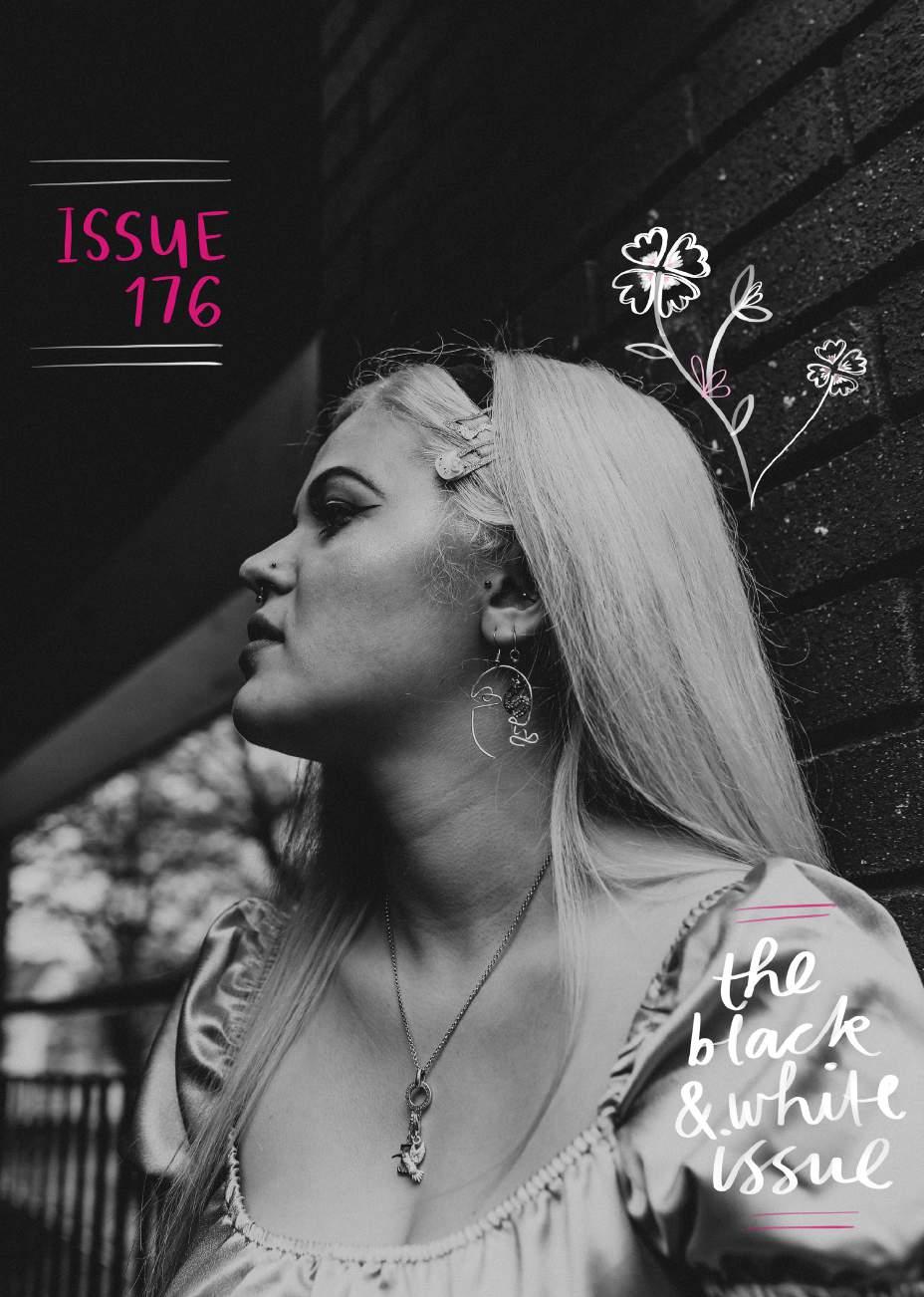
an interview with the creator of the first ever multilingual dictionary FEBRUARY 2020
MAGAZINE
your creative juices to the test? If so, Quench is for you. Quench is Cardiff University’s student lead magazine, where you will be given an environment through which your creative flare can flourish.

From written articles to vibrant digital design, Quench aims to help build your portfolio, while making a new set of friends at the same time.

We use a first come first served basis on our Facebook groupsQuench Contributors 19/20 and Quench Design and Creative team 19/20, so make sure your notifications are on!

In the contributor’s group, articles are posted by our Section Editors, who allocate them out through our first come first serve basis. If you see an article you’d like to write, all you have to do is comment below! We have five print issues a year, and weekly online content so there are new opportunities posted



We are on the hunt for Welsh speakers for our Clebar section too!

Our Design group works in a similar way, and if you’d like to design any of our pages look out for a post from our Head of Design asking willing designers to comment. Don’t worry if you’re an InDesign newbie, as we will be holding Give it a Go workshops shortly.
All abilities are welcome, whether you’re hot off the press or a total newbie who’s never set foot in an editorial office.
Quench won’t get in the way of your social life either – we organise regular socials, alcoholic and non.
So get in touch. Contact us via the social media link for more information or email us through editor@quenchmag.co.uk.

@QuenchMagazine @QuenchMag @quenchmagcardiff
Modified photograph of Cardiff University Main Building by David Meenagh via Flickr: https://bit. ly/2kgW9mu.
Editor’s LETTER
For many people, life isn’t as simple as just the black and the white. It’s often the people and the places we hold close to us that help us make sense of the shades of grey in between. In this issue of Quench, however, we wanted to build upon the idea of black and white by looking at the binary opposites in life and the debates that they present us with.
Issue 176 contains one article per section that aims to discuss two sides of relative topics in relation to each of our sections. Among our first couple of pages, our Features section discussed whether the Royal Family should still act as a face for Britain or whether the monarchy should be abolished – a situation made even more relevant in recent weeks with the changing roles of Meghan and Harry. In later pages, the debate of the art vs. the artist was delved into by our Music section, questioning whether we can look beyond immoral actions of musicians to still appreciate the content they produced. This is all tied up with content from Clebar looking at the differing ideals of getting a job or a MA qualification following your degree, the Fashion debate of High Street vs. Vintage paired with an accompanying fashion shoot, and an original take from the Food & Drinks section on own brands vs. private label in your shopping choices.
Crazily, this issue marks our first of the new decade. For many of us in the team, it also marks the start of a final semester here at University. I’m sure many of you, as I currently am, are dealing with the overwhelming fear of the unknown that seems to creep up on you every time someone mutters a “what are you planning for next year?” in your direction. Trying to turn that fear into excitement is my aim for these upcoming months.
On behalf of the Quench executive team, we hope this upcoming decade treats you wonderfully. Enjoy every minute of it because, as we’ve learnt producing these issues, time always goes quicker than you’d like it to.
THE BLACK & WHITE ISSUE


Disclaimer:
The article titled ‘Politics and Music’ in Issue 175 was written by Alex Payne. The article titled ‘Hiatus? Do bands ever really quit anymore?’ in Issue 175 was written by Craig Strachan.
issue 176 EDITOR’S LETTER - 3

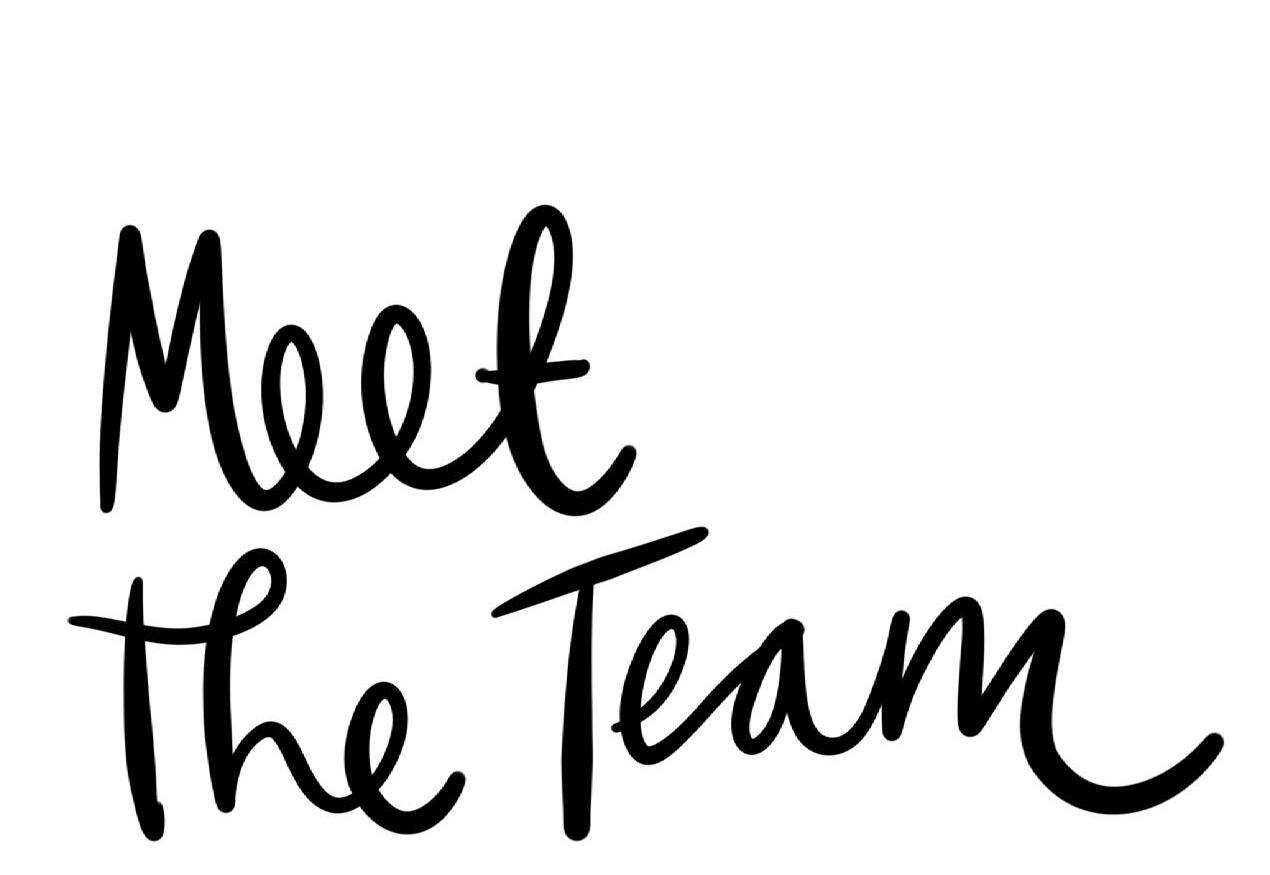







4 - MEET THE TEAM issue 176
Editor in Chief Katie May Huxtable
Head of Design Orlagh Turner
Deputy Head of Design Ula Rodakowska
Dear Ella... Ella Woodcock
Deputy Editor Luisa De la Concha Montes
Head of Photography Charlie Troulan Deputy Head of Photography Ella Cuss
Social Media Assistants Janaki Selvaratnam and Coby Barker
Social Media Manager James Barker
Head of Illustration Elaine Tang













issue 176 MEET THE TEAM - 5
Columnist Phoebe Grinter
Features Rhianna Hurren-Myers, Elly Coyle and Rebecca Astill
Culture Sofia Brizio and Neus Forner
Clebar Indigo Jones
Food & Drink Katie Duffin and Lauren Stenning
Travel Marcus Yeatman-Crouch and Molly Govus
Music
Kate Waldock, Josh Ong and James McClements
Fashion & Beauty Izzy Wackett and Emily Ricalton
Film & TV Caleb Carter, Cynthia Vera and Laura Dazon
Download Mike O’Brien
Copy Editors Ellie Ball, Denise Dogan and Hazel Thayre
Q3 Editor Jasmine Snow Q3 Deputy Editors Eduardo Karas and Nicole Rees-Williams
Fashion & Beauty
49. ‘Heroin Chic’: A Movement that Changed the Appearance of Fashion
50. Poppy Fleur: An Interview with Cardiff’s Up-and-Coming Entrepreneur
51. Smart Fibres and Biotech: The Future of Fashion
52-53. High Street vs. Vintage Clothing
54-57. High Street vs. Vintage Fashion Photoshoot
Film & TV
58-59. A History of Modern Black & White
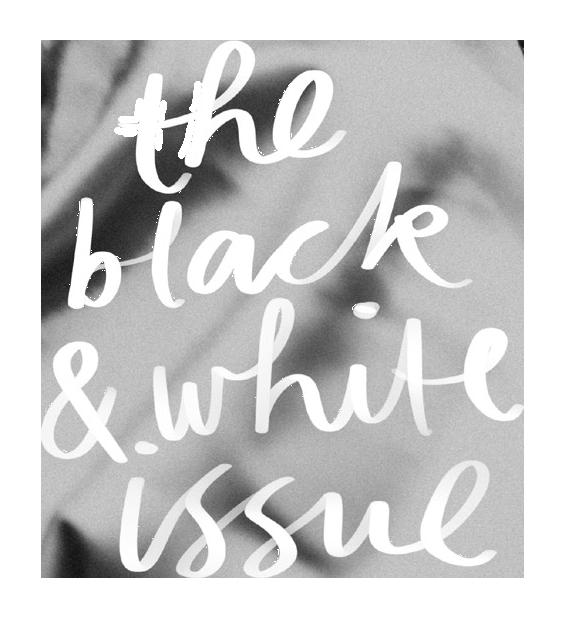
60. Lights, Iphone, Action: The Smartphone Cinema Revolution
61. In Defence of Nicolas Cage
62-63. Cynical vs. Romantic: Valentine’s Day Films
Download
64-65. Life Without Social Media: A Brief Experiment
66. Prejudice in Silicon Valley
67. Quench Download’s Top Ten Games of the Decade
68-69. The Game vs. The Mind
Dear Ella
70. Doing Things for the Right Reasons
71. Questions
Contributors:
Phoebe Grinter
Rhianna Hurren-Myers
Elly Sava
Rebecca Astill
Sorcha Hornet
Katie May Huxtable
Sofia Brizio
Neus Forner
Sahina Sherchan
Luisa De la Concha Montes
Siân Jones
Niamh Goodwin-Thomas
Indigo Jones
Lowri Pitcher
Katie Duffin
Omo Ifabua
Hannah Penwright
James Barker
Lafan Hasan
Megan Evans
Muskan Arora
Devika Sunand
Josh Ong
Josie van Jascheroff
Craig Strachan
Joe Cresswell
Emily Ricalton
Izzy Wackett
Sasha Nugara
Cynthia Vera
Sarah Harris
Phoebe Bowers
Amy Layton
Laura Dazon
Becki Tyler
Mike O’Brien
Kate Waldock

Caleb Carter
Ella Woodcock
Katie Waits
Ella Clucas
Niamh Goodwin-Thomas
Devika Sunand
James McClements
Annabelle Ingram
Molly Sedgemore
Designers:
Katie May Huxtable
Luisa De la Concha Montes
Orlagh Turner
Josh Ong
Elly Savva
Rhianna Hurren-Myers
Rebecca Astill
Sofia Brizio
Ula Rodakowska
Neus Forner
Yeon Su Cho
Alessio Grain
Elaine Tang
Devika Sunand
Lafan Hasan
James Barker
Lottie Ennis
Dominika Matusiak
Esther Loi
Cynthia Vera
6 - CONTENTS issue 176 CONTENTS: Cardiff Story 8. Interview with a Cardiff Student Playlist of the Issue 9. Column 10. From 2020, With Love 11. Taking Photos vs. Living in the Moment Features 12-13. Student Interiors: Brighten Up Your Space 14-15. Monarchy vs. Democracy 16-17. Othering in Advertising Culture 18. Untranslatable: The First Multilingual Dictionary 19. Valheria Rocha: The Artist Behind Taylor Swift’s Album Art 20-21. Controversial Museums Around the World 22. Money vs. Meaning: Why We Make Art? Clebar 23. Dydd San Ffolant yng Nghaerdydd 24-25. Pobl chi’n weld yn ystod y Chwe Gwlad 26. Cwrs Ôl-raddedig vs. Swydd Food & Drink 27. Food For Thought 28-29. The World at Your Doorstep: Cardiff Food Map 30. Private Label vs. Own Brand: Battle of the Brands 31. 2020 Visions 32-35. Food Photoshoot: Wild Thing Travel 36-37. The Places We May Lose 38-39. Airbnb or Not To Be? 40. Where is Home? 41. Travel’s Best of 2019 Music 42. Music and the Environment 43. The Punk of Today 44. Genre Fluid? 45. Local Artist Spotlight: Boy Azooga 46-47. Art vs. The Artist 48. A Chat with KOKOKO!

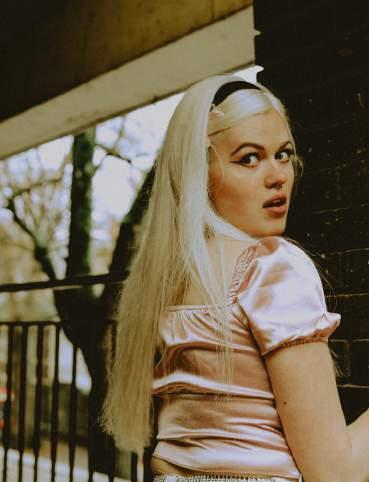


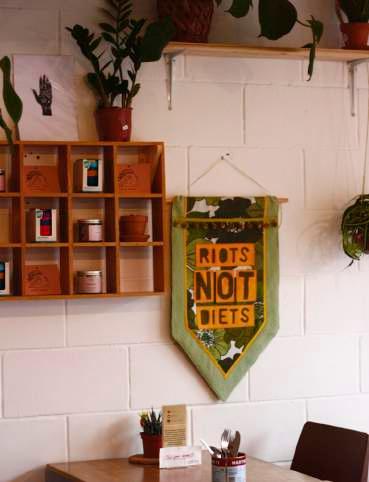




issue 176 CONTENTS - 7 8. 14. 22.
38., 44, 46.
58,
32.
54,
This year at Quench we want to give you the chance to feature on our front cover. Each issue, we would love to speak to a different student about their life and how they came to study here in Cardiff. In this interview, she opened up to us about her experience growing up, the unexpected turns that life took after her mum fell ill, and the feeling of independence and freedom that she achieved when she moved to Cardiff.
Name:
Age: 20
Course: Media and Communications
What was your life like growing up?
My early childhood was lovely. I used to live in Manchester with my parents, three older brothers, and one older sister. The biggest age gap I have is twenty years between my eldest brother and I. Most people found this really odd but I loved it as I got more presents at birthdays and Christmas (hehe), I actually got along with them and I became an auntie at eight which was amazing.
Unfortunately, when I turned about nine, I went through a lot of stuff at once. I was heavily bullied, I broke my arm, I had appendicitis, my mum fell ill with a disability and then my dad fell severely mentally ill. Quite a lot happened (I won’t bore you with the details) which got too much, so my mum and dad separated and me and my mum moved to the other end of the country to the small seaside town, Torquay. Even though it was nice to get away from everything that was happening back at my old home, it was quite lonely going from having a big family and dogs in a big city to only me and my mum in a small town in Devon. As I was my mum’s carer, I missed out on doing a lot of activities that mother and daughters can do and we weren’t very well off so I never went on any holidays and we had to get rid of our dogs – this sucked massively.
In spite of everything, I really loved the majority of my childhood and I wouldn’t change any of it as it has made me more independent, mature; and both accepting and aware of mental health issues from a young age. Plus, me and my mum are ridiculously close (I still call her about five times a day), which is invaluable.
Interview and modelling: Student photographs of student by: CHARLIE TROULAN design by: LUISA DE LA CONCHA MONTES
How was your life at home different to your life in Cardiff?
I really didn’t like living in Torquay, everyone had ‘small town syndrome’ and as there wasn’t a lot to do, most people at school were quite gossipy. Compared to most people who live there, I have quite controversial views and dress differently - which people would judge me for. Luckily, as Cardiff is so diverse I feel like I can be who I am, not feel pressured to conform to something I’m not and I can speak freely of my opinions.
I love being completely independent here and the push that uni gives you has transformed me into a completely different person. I’m constantly saying that I’m now a completely different human to who I was when I began uni (I’d slap old me). It has empowered me so much, made me into such a happy and positive person, matured me and you could say it’s made me more ‘wise’.
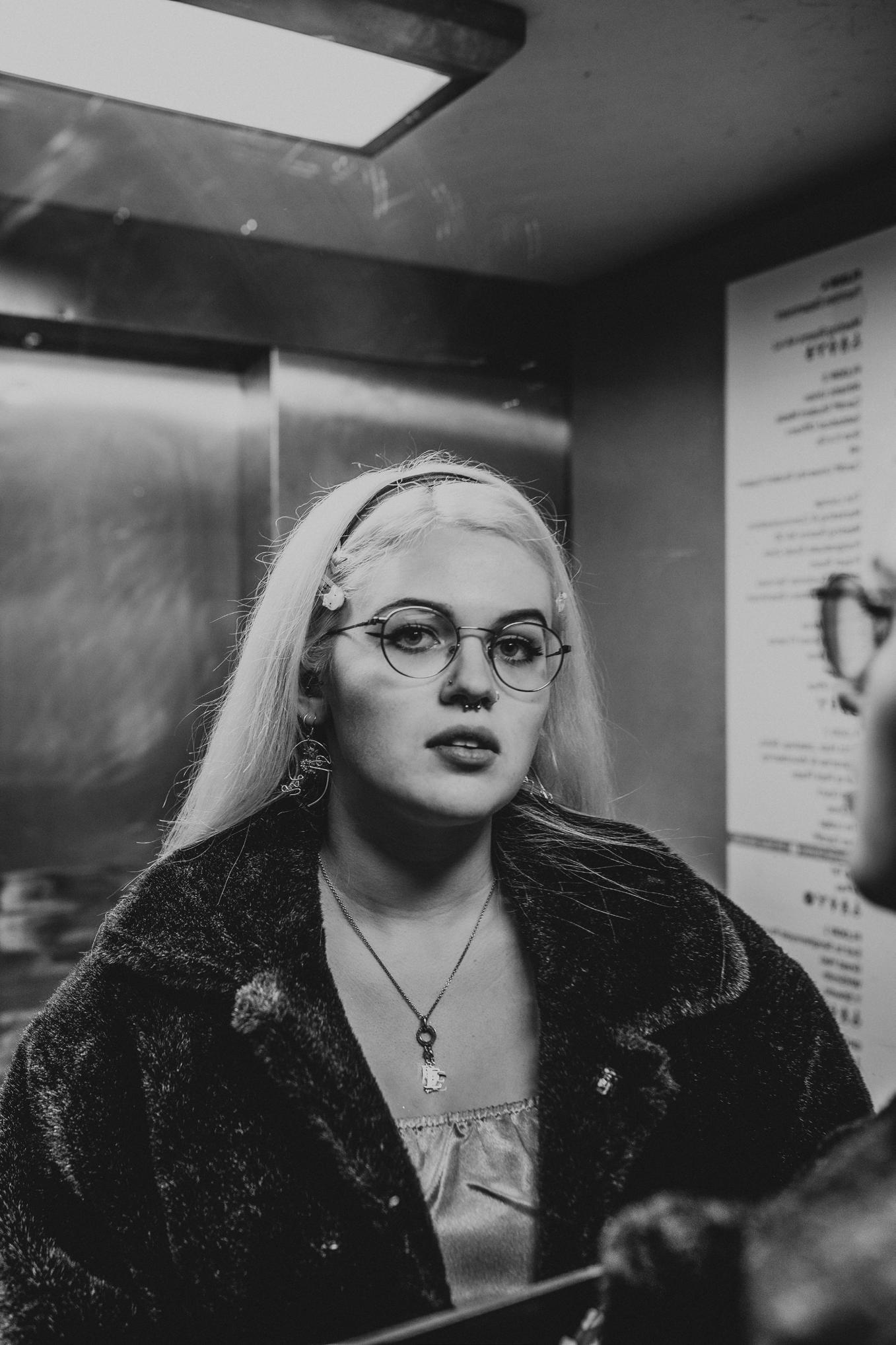
In Torquay there is literally just the beach and then in the summer there’s touristy things to do, which can get quite boring. However, in Cardiff there is so much to do. Plus, as a vegetarian, there are SO many more options for food.
What aspects of your childhood do you feel influenced your time at University today?
As I grew up with older siblings, I’ve fortunately learnt from their mistakes, so I’ve always been driven to do the best I can and been overly sensible in certain situations. Plus, they’re really loud and honest, so throughout my time at uni I’ve not been afraid to tell people the truth about how I feel or about my points of view (which I’ve had to do a lot of), as I can’t stand being two-faced!
As I learnt the value of money from a young age it’s always led me to be financially independent. It is surprisingly liberating and I’m so proud of the fact that I save up and buy everything myself. It really makes you so much more grateful and value things more.
What will you miss about your experience here in Cardiff when you graduate?
I will miss being a team leader at the Students Union the most, as I’ve met so many great people, seen so many funny things (which you would not believe), and it’s made me more confident.
I also get emotional at the thought of not being in such a close proximity to my friends, it being socially acceptable to drink at any time of the day and just being pretty much a mess.
What are three things you would go back and tell the younger version of you starting first year if you could?
1. £200 a month on takeaways/eating out isn’t funny or clever. Your body and bank account will thank you for this boo x
2. Self-love and ‘me time’ is more important than your boyfriend.
3. Stop drinking tequila and orange juice. It will eventually make you projectile-vomit a ristorante pizza across someone’s kitchen.
Cardiff Story l
If you are interested in being on our front cover and answering a couple of questions, email us at editor@quenchmag.co.uk – we look forward to hearing from you!
8 - FRONT COVER Q&A issue 176
Better Man The Courteeners
DO YOU KNOW ME? Vant


Should’ve Said It Camilla Cabello
Just Got Paid
Sigala, Ella Eyre, Meghan Trainor
1973
James Blunt
Sincerity Is Scary The 1975
Changed The Way You Kissed Me Example
Dilemma
Nelly & Kelly Rowland
Say You Won’t Let Go James Arthur
It Wasn’t Me
Shaggy & Rik Rok
Will You Be There?
The Sherlocks Fight On The Lathums
Don’t Worry Be Happy Bobby McFerrin

everything i wanted
Billie Eilish
Hold Me While You Wait
Lewis Capaldi
issue 176 PLAYLIST OF THE ISSUE - 9
playlist by: JOSH ONG
design by: ORLAGH TURNER
As we enter the roaring Twenties round two, I started to wonder what we might find in a time capsule from the 1920s had Gatsby and his gang of flapper girls left one for us to open 100 years later. Maybe a cloche hat, a Louis Armstrong jazz record, a Babe Ruth baseball card or one of the first official radios would make an appearance.
This got me thinking about what I would put in a time capsule if I were to make one today - a collection of things that fully encapsulate my life as a student in 2020 Cardiff to be dug up 100 years from now, when politicians are still pushing to get a Brexit deal through parliament and people are still using the temporary stairs to get into the SU during the build of the indefinitely unfinished Centre for Life building.
The first and most important item in my time capsule would of course be an archive of Quench magazines so the people of 2120 can understand that, despite having a small budget, we were still able to produce amazing content and innovative design that led to us winning the title of Best Student Publication in Wales 2018/19 and 2019/20. It goes without saying that I would include an orange VK in my time capsule so the lucky recipient can enjoy its sweet nectar while reading the Quench archive. As the primary symbol of student culture in Cardiff, I hope that the fruity fun of the VK is still around in 2120. However, if Jamie Oliver has his way, we can assume they will be long gone. On the subject of alcohol, I would also include a can of Strongbow Dark Fruits in case soft boys still exist in 2120, and of course a bottle of Echo Falls Summer Berries for the future basic b*tches of the world.
A classic meal deal would also make an appearance in my time capsule. I am sure the concept of the meal deal will still be going strong in 2120, but in case people are stuck on what meal, snack and drink combo to go for, I would include a printout of the Cardiff University Meal Deal Society Facebook page for some guidance. Speaking of food, I would also include a goodie bag of treats from the Lidl bakery. Breakfast favourites croissants and pain aux raisins. Focaccia or pizza slices for lunch. Chocolate or cheese twists to satisfy your afternoon cravings. Double chocolate chip cookies or muffins for dessert. I’m salivating at the thought.
To give the people of 2120 a good laugh I would include a collection of Cardiff’s best memes depicting the ongoing Cardiff vs. Met rivalry, disputes about unreturned housing deposits, and of course the famous Juice chicken. Along with these I would provide a selection of the most ridiculous tweets from the Twitter account of 2020’s POTUS Donald Trump, including but not limited to: “It’s freezing in New York -- we need global warming!”, “Sorry losers and haters, but my I.Q. is one of the highest – and you all know it! Please don’t feel so stupid or insecure, it’s not your fault” and “I would like to extend my best wishes to all, even the haters and losers, on this special date, September 11th”.

I hope the people of the future can take great comfort in knowing that if this man was elected to run America for four years, anything is possible.
Although I don’t want to think about a future where Live Lounge does not serve £1 shots and distinctly average bands don’t play the same three songs every night to a crowd of smashed students adoring fans, I would include a #PowerHour drinks deals menu so the people of 2120 can see just how good we had it. If Live Lounge is still going 100 years from now, I hope the people of the future enjoy the sticky floors, the struggle to get to the front of the stage and the words of encouragement from the toilet attendants just as much as I did.








I would love to be around to see my time capsule dug up in 2120. As a 122-year-old woman, or maybe just a head in a jar, I would enjoy looking back on our work for Quench while sipping on a warm VK and reminiscing about many a night spent belting out Wonderwall in Live Lounge. You can be sure that if I haven’t already died before the age of 122 then polishing off that 100-year-old bag of goodies from the Lidl bakery will most definitely do the trick.

10 - COLUMN issue 176
words by: PHOEBE GRINTER design by: JOSH ONG
Taking Photos VS. Living in the moment

Our desire to create a digital memory of every single thing we do, see, eat, and drink has become a societal norm. The social media climate of today seems to be an ever-growing competition for who has the best online aesthetic, who gets the most likes, or who has the most followers. People worldwide upload more than one billion images a day. ONE BILLION. Considering the amount of photos I take, I am lucky to get one that’s good enough to make it to Instagram. Whether you are someone who says “pics or it didn’t happen” or someone who rolls their eyes at the girl taking a photo of her coffee and croissant, in today’s society, capturing a moment forever is a matter of pressing a couple of buttons on a phone screen. But, have we become too concerned with taking photos and videos to actually enjoy the moment?

Don’t get me wrong, I love taking photos and videos to capture a happy moment. I’m the first to make everyone redo our cheers so I can get a Boomerang. I have photos up in my room, in albums and scrapbooks, and in virtual albums online. Due to our social media led lives, people are increasingly living to build their social media influence, myself included. I like to keep my social media up-to-date with photos and videos showing that I am living my best life. However, our social media accounts should not over-influence the way we take pictures, grooming the way we experience a moment so we are better able to present it on social media later, or sometimes even deciding not to post a great picture because it doesn’t ‘match’ our established aesthetic. I sometimes worry that I am too concerned with trying to portray myself a certain way online, attributing too much self-worth to the number of likes my photo will get rather than if I actually like what I’m uploading. Most of us, myself sadly included, don’t know how to enjoy any kind of significant event without
whipping out our phones to take a picture. My friends and I are often guilty of spending too long worrying if we got a cute enough picture for Insta rather than actually enjoying our night.
It’s important to question why we are taking a picture. What do we get from it and why do we want to preserve this moment? Is it worth missing out on living in the moment to take a picture of it? Maybe not everything needs to be photographed and simply enjoying the moment is enough. We need to ask ourselves if nobody were to ever see this picture, would I still be taking it? I have loads of photos that don’t make it to print or online and remain on my phone taking up precious storage space. Although I tell myself I will go back and look through the hundreds of blurry photos I take on drunken nights out, I most likely won’t. They will join the thousands of other photos in my library of food, selfies, sunsets, and pictures of my dog.
Taking photos of anything and everything means that we actually take less time to properly engage with what we are photographing, and we don’t give the moment our fullest attention in the present. At concerts, I look around and most of the crowd are watching from behind their phone screen. People let their food go cold while their friend tries to get the perfect candid from across the table. Gym-goers tend to spend more time flexing in front of the mirror for their Snapchat story rather than actually doing any workout. We need to stop putting a screen between us and our lives and avoid missing the moment in the present as we try and preserve it for the future. Before long, photos and videos will be a thing of the past and we will have access to all our memories via retinal chips that we place in our eyes like contact lenses so we can replay our memories in 4K ultra HD. So, there really is no point in trying to record that little smudge of light on a stage a football pitch away, enjoy your food while it’s hot rather than trying to get that perfect Insta shot, and actually do some exercise at the gym instead of contorting your body in the mirror for a story that everyone will skip.
The next time I go for drinks with my friends, see a beautiful sunset at the beach, or see my dog asleep on the sofa, my first priority will not be to grab my phone and take a picture but to appreciate the present moment with my eyes and heart instead.



issue 176 COLUMN - 11
words by: PHOEBE GRINTER design by: ORLAGH TURNER
words and design by:
ELLY SAVVA
Renting as a student means that you’re not always living in the best conditions. You usually have to contend with mould and damp, alongside a communal kitchen that never stays at the level of cleanliness you’d like it to be. Your bedroom is the one small space that you can have complete control over, so why not make the most of it? For this feature we’ve delved into student bedrooms, looking at some of your favourite spots and considering the benefits of organising your space.
Fairy lights
It goes without saying that a few strings of lights can make pretty much anywhere look cosy. Is it really a student bedroom without them?

Plants
Bring some of the outdoors in with you to cleanse your air and give your room some more life.
Pictures & Posters

Make the space more personal to you. I also like cutting things out of magazines (perhaps Quench?) and looking out for leaflets from events I enjoyed.
Command hooks
These are a secret hero, essential for stringing up fairy lights or bunting.
Rugs
Really easy to find cheaply, or I just use old blankets to cover up unwanted rented carpets!
In 2019 we saw the rise of the cleaning revolution: Marie Kondo’s series which launched on Netflix last January saw people tidy up their homes and clear out things that didn’t spark joy. After this came Mrs Hinch, the ‘cleanfluencer’ from Essex who inspires her Instagram followers with cleaning tips and tricks. Although critics of these figures may turn up their noses, the underlying messages in what they’re talking about are ones about restoring calm and spreading happiness. Who can really be critical of this? If you’re the kind of person who feels like things can build up and get on top of you (and if you’re a bit messy and chaotic like myself) you can take some inspiration from these brilliant women to bring some order into your life.
If you’re the kind of person who wastes time on Rightmove looking at beautiful Georgian houses with big windows that you will never be able to afford, you will love these Instagram accounts to give you some everyday interiors inspiration:
@happybohemianhome
@lamaisonpierrefrey
@matildagoad
@apartmenttherapy
Amongst the multiple stresses that life has to offer, I wanted to make my room into a personal sanctuary where I could escape and feel safe. I’ve filled the walls with posters, art, and photographs – you definitely couldn’t call my style minimal. I was really excited to make a little window seat this year, something that I have always dreamed of having as a reading corner. As you may be able to tell, plants are one of my favourite things, so it is a bit of a jungle in here too. I’ve learnt that keeping my space tidy really helps my mindset and even doing the smallest things like making your bed in the morning can really help you to feel like you have a good hold on life.
12 - FEATURES issue 176
SORCHA HORNETT:

I am currently doing an intense MA that requires me to be in university from 9-5 everyday. Therefore, I wanted my room to be somewhere cosy and inviting so I look forward to coming home to. My wall covered in photos and posters is my favourite part of my room because of all the memories I have stuck up there, and is a constant reminder of why I’m doing what I’m doing. I also love my astrology tapestry and star shaped fairy lights and have had them for years, I think they just add more personality to my room! My room is my safe haven and the best place for me to relax after a long day so I wanted to give it as much personality as possible while keeping it cosy, and I think I’ve achieved that balance perfectly apart from the horrible red curtains but I can’t do much about that!

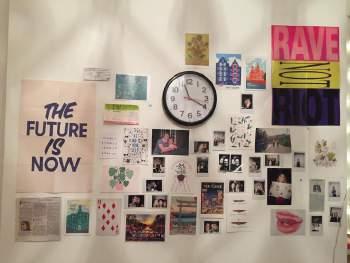



LUISA DE LA CONCHA MONTES
RHIANNA HURREN-MYERS:
I’ve never really enjoyed doing uni work in my room, so I really needed it to be a space of calm to return to after those long days and evenings in the library. Part of this is already achieved having an attic bedroom, because you feel so connected to the sky when you look out of the window. I’ve also enjoyed having plants in my room this year; it feels like you’re bringing in a part of the outside. I’m no expert though –chucking some pictures on the walls and stringing up some fairy lights normally does the job quite well!
My childhood home was full of photos. So when I moved to Cardiff from Mexico City, I was naturally drawn to bring the one thing I knew would help me feel at home: my collection of polaroids and film photos. Now I have them displayed over my bed, and under my mantelpiece, as a reminder of where I come from, and of how far I’ve come (not only literally, but also figuratively).
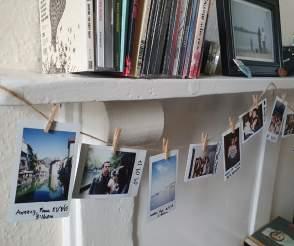
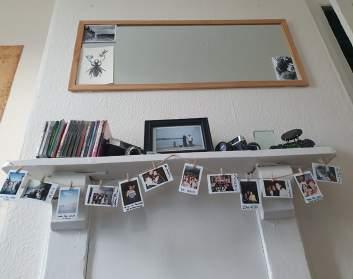
SARAH HARRIS:
Most of my course is essay based and when you add my final year dissertation to it, I knew I’d be spending the majority of my final year at my desk. It was important for me to make my work place feel positive and vibrant - hence the plants. I live on my own this year so the pictures are a nice memento of all my friendships and family. It’s so much easier to get work done when you feel comfortable with your surroundings! I do almost everything at my desk from my makeup to eating my meals, so it’s great for the area to feel so personal.
issue 176 FEATURES - 13
..
god save the queen?
WORDS BY: Rhianna Hurren-Myers
“No future No future No future for you”

Reponses to the question of whether the monarchy should be abolished are often met with protesting, spluttering bouts of emotion in an argument that essentially boils down to: “But I like the Queen”. Before we begin unpacking why the British monarchy has no place in our future, we must first separate individual from institution. Liking a specific member of the royal family is not the same as agreeing with the concept of the monarchy. I don’t dislike the Queen as a person, but she has an ascribed status in a country that claims to represent both democracy and meritocracy – and I think that’s wrong.
In part, this is the most obvious argument against the crown. An institution that has long been disguised as, “a symbolic mirror to our better selves” is really justifying a position of public authority according to birth, rather than ability. Because if we were to judge the position on genuine capability, I am of no doubt that there are hundreds of individuals that are far worthier: Doctors. Teachers. Soldiers. Paramedics. Police Officers. Heck, anyone that’s ever had a full-time job has a much clearer idea of what it means to be British and to live a British life than a wealthy family that merit success on the basis of hereditary privilege.
2019 revealed the Windsors' fractured and alienated relationship with the British public more than ever. In April, it was disclosed that 98 yearold Prince Philip would not face prosecution after his car collided with a Kia which saw two women needing hospital treatment. In November, we witnessed Prince Andrew’s excruciating interview with BBC Newsnight to explain his relationship with convicted sex offender Jeffrey Epstein, in a move that essentially got him fired by his own mother.


Even the future generation of royals revealed that they were finding it difficult to cope. The Duke and Duchess of Sussex opened up about their experiences of managing the intense media attention since the birth of their son Archie. Prince Harry, who linked the relentless scrutiny of his wife to the death of his mother in 1998, declared legal action against a number of British tabloid press at the end of last year. With mental health rates at an all-time high, we must question not only whether the future of the monarchy is in the best interest for the Commonwealth, but also whether it is in the best interest for individuals who are clearly struggling to cope.
More significantly, the Queen’s own position as head of state became questioned when her world collided with our Prime Minister at the time, Boris Johnson. His wish to shut down parliament for prorogation for five weeks, a move which was signed and approved by Her Majesty, has since been declared unlawful by the Supreme Court. A recent article by The Guardian also indicated that just 14% of Britons are members of the Church of England. So both of the Queen’s roles, as head of the state and head of church, was at least challenged in 2019, and at most, proved functionally extinct.
At 93 years-old, it is clear we are approaching the end of our current monarch’s life. With this comes an opportunity to live in a republic that advocates skill as the basis of merit. The current plan sees the UK bowing to yet another rich, white man in a toxic culture obsessed with the outdated rituals and traditions of the past. It’s time to stop funding a struggling institution that does nothing but perpetuate a class system and instead invest in the future.
14 - FEATURES issue 176
FOR
"The Monarchy is Outdated, and Should Be Abolished"
IMAGE BY: Frankie Fouganthin
AGAINST
 WORDS BY: Katie May Huxtable
WORDS BY: Katie May Huxtable
The Royal Family remain at the forefront of contemporary society, whom many refer to as the epitome of what it means to be British. Despite the technological developments across the past decade, the Royals stand as a prominent reminder of Britain’s well-known love affair with the concepts of history and tradition.
As is often discussed, the concept of having a monarchy can be negotiated as outdated and people have been known to suggest that a change is necessary. However, the past 67 years with Queen Elizabeth at the forefront have brought with them a new, more modernised version of the monarchy that is well-loved by a large portion of society.

Despite the love and respect that many people hold for Queen Elizabeth, who has broken the record as the longest-reigning British monarch in history, a contribution to the well-loved modernity of the Royals comes in the form of the younger generation. With Kate, Will, Meghan and Harry leading the way, their engagement with charity work, local communities and even the use of their own social media accounts gives the monarchy a sense of accessibility like never before. The power of this generation of Royals is also demonstrated through the “Kate Effect” which saw brands flourishing over the endorsement of Kate Middleton. When she was pictured in a certain fashion product, the sales of that product would inevitably rocket up as fans attempted to replicate her fashion choices.
Markle also plays a massive part in the sense of new-found respect for the Royal Family. Her introduction into the
monarchy following her marriage to Prince Harry in 2018 has been celebrated by the black community. Her acceptance in the family is an example of pushing the boundaries in terms of identity, and questioning what was previously regarded as the appropriate identity for a Royal. As a bi-racial, American, divorcee, many have viewed Markle as a breath of fresh air, and she is often regarded as a step in the right direction for the Royals. As the perfect representation of change, she often breaks traditional protocols, and is willingly outspoken on a range of important issues —using her influence for causes close to her heart.

Most people are aware that the Royals are a goldmine for tourists and this has only been fuelled to a further level with the dramatisation of their history in Netflix’s The Crown, which has spiked a greater interest in their lives. The relationship between royalty and tourism is an important one from an economic perspective. Although there is no specific data to argue whether tourists go to the UK for the sole purpose of the attraction of the monarchy, huge royal events and the popularity of the Royals from those abroad gives tourism agencies the opportunity to build on the UK’s tourism appeal.
Although, to the distaste of some taxpayers, it’s been argued that maintaining the upkeep of the monarchy is expensive, they do actually contribute far more back to the economy than they cost. According to the Sovereign Grant, the monarchy cost us 67 million pounds in 2018/19. However, the profits of the Crown Estate for 2018/19 actually reached £345.5 million. According to fact checking website Full Fact, the government gives a grant to the Queen based on 25% of the Crown Estate’s income two years previously. The Queen also pays tax on her other private incomes. Despite this, these profits aren’t applied to large events like Royal Weddings, where security costs are often met by the taxpayer, however it is arguable the amount of tourism that these spectacles bring in helps to contribute in another sense.
Although the concept of the monarchy is often met with two very opposing sides, there is no denying their rooting in concepts of tradition and history. Their ability to uphold tradition, whilst finding a new sense of modernity in relation to the changing of the times, cements the Royals as a massive institution within British society that I think will remain for many years to come.

issue 176 FEATURES - 15
”
“
there is no denying their rooting in concepts of tradition and history
IMAGE BY: Genevieve719 via Flickr
Advertising fits into the category of promotion, and therefore can sometimes fall foul of promoting unfavourable representations of minority groups, whether intentional or not.
Although this has been amplified by technological advancements in this century, it is an issue which has permeated the industry for as long as advertising has existed. In the beginning, the problem was the under-representation of certain groups, conveying them as less important. Nowadays, companies take extra measures to ensure that their advertising represents a ‘modern Britain’, but so many still fall short.


The main problem occurs when advertising employs an ‘us’ vs ‘them’ framework, which creates an atmosphere of othering. The National Lottery recently released an advert celebrating their 25-year anniversary, which features three people with downs syndrome at the beginning singing and signing along to ‘3 is the magic number’ by Schoolhouse Rock. This is followed by a group of skateboarders who the three on stage watch with admiration.
The intention is probably honourable, but the outcome is that the people with downs syndrome are portrayed as inferior; admiring the active skateboarders from their isolated spot on stage. There is nobody without a disability with them, so the balance which the National Lottery is trying to portray is undermined, and the ‘us’ vs ‘them’ framework reproduced way too many times in the media is again evident.
Naomi Campbell spoke about this idea of balance in a recent interview with The Guardian. She said, “I won’t do an all-black show, because it would be hypocritical of what I’ve stood for, for so long… balanced inclusion.” Naomi’s Chinese-Jamaican heritage means she is a BAME model (Black, Asian, or Minority Ethnic Background); a group which is still underrepresented in the advertising industry.

Her friends Christy Turlington and Linda Evangelista threatened to pull themselves from working for Dolce & Gabbana unless they hired Naomi, and Yves Saint-Laurent said that they would withdraw their advertising unless French Vogue gave Naomi a cover. The fact that such lengths and threats had to be made for such an incredible and timeless beauty to receive her deserved recognition seems a completely antiquated notion, and hopefully this is a world which can be left in the past.

Lloyds Banking group found that although the number of BAME people represented in adverts has doubled from 12% to 25% between 2015 and 2019, still only 7% are the main protagonists, and one third are still presented as negative stereotypes. There is still such a long way to go until the “modern Britain” aka realistic audiences, which companies claim to convey, are achieved.
Sometimes BAME models seem awkwardly forced in to make a point, resulting in the advert having the opposite effect. In 2018, H&M were widely criticised for advertising a black child who modelled a hoodie with the words “coolest monkey in the jungle”. Also in 2018, Chance the Rapper attacked Heineken on Twitter for an advert in which a barman slid a beer across the bar, passing three black people before it landed in the hands of a lighter skinned woman. Chance the Rapper accused Heineken, among other companies, of “purposefully putting out noticeably racist ads so they can get more views.” A spokesman for Heineken responded by saying that they had ‘missed the mark’ while trying to diversify their marketing. H&M also apologised for their
16 - FEATURES issue 176
advertising, saying, ‘This image has now been removed from all H&M channels and we apologise to anyone this may have offended.’
The Advertising Standards Agency (ASA), which acts as the advertising watchdog in the UK, has received 2396 racism complaints about 956 different adverts. They recently banned an advert put out by Paddy Power ‘on grounds of race’ which encouraged audiences to ‘always bet on black’ in reference to a Floyd Mayweather Jr. fight.
It’s difficult to say that these advertising blunders are honest mistakes considering the calibre of employees who work in the marketing departments of such high-profile companies. It is possible that Chance the Rapper has a point in that companies do purposefully choose provocative advertising in order to reach a wider audience.This is a risky marketing method and will end up being a bigger detriment to them in a future, because although there is a long way to go, society is becoming more accepting and more actively opposed to any form of racism.

As TV writer and producer Lena Waithe put it, “People of colour are in a very interesting position right now. We’re more than just in Vogue. We are the culture.” The UK is becoming more racially diverse every day and it is crucial that this is recognised in mass media. This rapid social change is a result of globalisation, a changing economy and advanced technology. The diversification of our culture is a positive thing, despite how politicians and media might present it.
The main reason for the human anxiety surrounding social change is the worry of a threat to the natural hierarchy. As an audience member, it is our job to actively challenge the media which we consume. This issue is not helped by the discourse of politicians, particularly our Prime Minister Boris Johnson. Johnson was famously caught out for calling women who wear burkhas ‘letter boxes’.
More recently, he said that “migrants should not treat the UK as their own country”. Donald Trump called Mexicans “rapists and drug dealers”. Such explicit dehumanisation of groups from prominent figures in society normalises racism – particularly in the Western world.
The leadership language galvanises anxiety and fear and ultimately contributes towards extremism. It subconsciously manifests in the whole world around us, including advertising.
The anxiety as a result of the rapid change is natural, but how we choose to respond to it is important. There is no need to define what equals an acceptable member of society – the world is too fluid for that. Instead we should concentrate on accepting people as part of the demographic. We need to recognise that although we’re not all the same, we can bridge the gaps through our shared humanity.
words and design by: REBECCA ASTILL linda evangelista image by: JUSEZ: https://bit.ly/2RtZbBq christy turlington image by: LUKE FORD: https://bit.ly/2t0ACCO naomi campbell image by: JESSE GROSS: https://bit.ly/37wURak
issue 176 FEATURES - 17
“The UK is becoming more racially diverse everyday and it is crucial that this is recognised in the mass media.”
UNTRANSLATABLE:
An interview with the creator of the first ever multilingual dictionary
words and design by: SOFIA BRIZIO
If you’re fluent in one or more foreign languages, you’ll know the familiar feeling of a word in your target language being ‘untranslatable’ in your native language and vice versa. For example, my first language is Italian, and one of my favourite words is ‘abbiocco’, which indicates the feeling of drowsiness you get after a big meal. I am yet to find a word in English that conveys this feeling as effectively, and I’m not the only one who feels this way.
Amarens Elise is a 24-year-old Linguistics graduate with a passion for languages; she is fluent in Dutch, English, Spanish and Portuguese. She is the founder of The Foreign Language Collective, a website sharing tips to improve your skills in a foreign language. Much like me, Amarens felt that the difficulty of managing different languages is trying to convey the meaning of words which are culturally unique to a particular language. To offer a solution, she created Untranslatable, the first ever urban dictionary where people can share and browse local idioms, slangs and expressions in any language, providing detailed information around the context and nature of their usage. A Kickstarter campaign to fund this project was launched on November 26th, and I interviewed Amarens three days later to learn more about Untranslatable
I think creative projects always stem from a need for something that is lacking or doesn’t exist yet, and I imagine this was the case with Untranslatable. Where did the idea come from?
Untranslatable was definitely created out of the need for something. As a language learner, I often discover new words and, whenever I do, I always try to find out more information. Sometimes you’ll see a word for the first time, and realise it means something simple like “beautiful” or “nice”, and I always wondered “Okay, but if the meaning is that simple, why haven’t I heard it before? And when do I use this? Could I use this, or would that be weird?”
Those are the kind of questions I’d like to answer with Untranslatable, by not just telling people what something means, but also who uses it, how frequently, and where. That kind of information is often very clear to native speakers, but for an outsider it can be a complete mystery.
I think I shared the idea for the first time on my Instagram page. I had created an example, and people loved it, but they also came with suggestions, so I started thinking about how things could be better. At the time I was still a student and I didn’t have the time to give the project the attention and resources it deserved, but having recently graduated, I couldn’t get the idea out of my head, so I thought “it’s now or never”.
What makes Untranslatable unique to other apps for language learning such as HiNative?

First of all, it’s not going to be an app at first. The idea is to build a website where people can add things, and language learners can browse it, but especially in the beginning it will be just that - a dictionary. A website is an incredible tool for data collection. Data that can later be used in many different ways, including language learning. I guess you could compare it to Urban Dictionary, but what makes it different is that it is multilingual, and even allows (and encourages) submissions in lesser-known languages and dialects. I think Welsh is a great example, because it has such an amazing history but has been very underrepresented, and doesn’t often get the love it deserves. This could be an opportunity for Welsh people to share their language with the entire world.
What are your expectations and hopes for Untranslatable?
I’ve realised that many sayings actually do have similar roots in different languages, which is amazing. Something that feels very cultural and very personal can in fact be a sentiment everyone can relate to. Beyond that, I think it can make learning (about) different languages a lot more fun. Usually, idioms are something for more advanced speakers, and you can really only find them once you have a better understanding of the language. With Untranslatable, anyone can find expressions in any language, and more importantly, from any place. I hope that if people visit, for example, the North of Colombia, they will be able to look up not just basic phrases in Spanish, but Spanish specifically from that region. Being able to say something like “what’s up?” in someone’s dialect can make you instantly connect with them.
What advice would you give to language learners?
Expose yourself to the language and watch films! It’s also very important to know why you are learning a language. Having foreign friends helps so much, because you have the clear goal of wanting to understand them.
You’re from the Netherlands. What’s a typically Dutch expression you think is untranslatable?
One of my favourites is “de kat uit de boom kijken” which translates as “to watch/stare the cat out of the tree”, and it means to not take action, but wait and see. Kind of like when you are at a party but you aren’t sure if you like it or not, so you sit in a corner and look around, without taking any initiative.
You can support Untranslatable at https://untranslatable.co/
18 - CULTURE issue 176
words by: KATIE WAITS design by: URSZULA RODAKOWSKA

The Artist Behind Taylor Swift's New Album Art

We’re all probably very familiar with Taylor Swift’s 2017 rebellious ‘Reputation’ phase. After the tension with Kim Kardashian and Kanye (let’s not get into that), she rebranded herself with snakes and dark imagery, using it to signal the end of ‘the old Taylor’. Then, in early 2019, it seemed as though the storm had passed and Taylor Swift began a new Instagram theme of glitter and pastel colours. She had shed (excuse the pun) her previous image and in an explosion of butterflies began her ‘Lover’ era. Amongst this new Instagram aesthetic, a couple of days before her single ‘ME!’ was released, Taylor Swift shared an image of herself, surrounded by multi-coloured stars, with the caption ‘by the one and only @valheria123’.



Valheria Rocha, known on Instagram as @valheria123, is a 24-year-old Colombian photographer and visual artist who has quickly gained notoriety due to her characteristic style and editing skills.
Growing up in the US, Valheria Rocha was surrounded by a creative family of artists who encouraged her whenever possible. She began photography in high school, her love of the art stemming from her other love of musical theatre, with both subjects involving costumes, make-up and dramatic effects. Her first piece of work for someone else was for her ex-boyfriend’s band’s EP cover art, an important step in her career. As for her collage-style photography, this began when she was a senior in college, with her celebrity collages gaining positive feedback. Before Taylor Swift, Valheria used the images of Selena Quintanilla, J Balvin and Bad Bunny for a project in celebration of Hispanic Heritage Month. Her work, being inclusive and diverse in the celebrities and people she photographs, is highly appealing.
You may have even seen her other photography and works before she designed Taylor Swift’s 2019 album art. Valheria completed a photoshoot with Stranger Things actress Shannon Purser in 2016. For the Crybaby magazine, Valheria was able to fully express her artistic style and her unusual ideas, and therefore gained a great deal of attention. In 2018, shortly before her work with Swift, she completed a photoshoot with The Driver Era, the band of Ross Lynch from The Chilling Adventures of Sabrina. This increased her Instagram following even more. She has also collaborated with big brands such as Puma and Urban Outfitters, as well as Teen Vogue.

Valheria Rocha has a range of different influences and inspirations for her work. For example, the celebrities that she creates collages of are usually artists that she greatly appreciates. The celebrities are often people she looks up to ‘style-wise, artistically’. Another of her most significant influences are Wes Anderson films. Speaking to Hola!, she stated that she has a PDF of all the colour palettes used in his films. She also collects fashion magazines for textures and inspiration for her collages.
There is a lot of appeal to Valheria Rocha’s work. It has been described as being ‘a visual representation of youth today’. It is bold and colourful, much like today’s generation of young people that now, more than ever, are free to explore and experiment with styles and fashions. Her work has also been described as ‘unapologetic and magnetic’ – in being unapologetic, it mirrors the attitude of our generation. It generally represents the free, peaceful, perhaps even wanderlust vibe that today’s generation of young people appreciate. Ranging from loud and bright to soft and ethereal, she is unafraid to experiment with colour, textures and texts. Her photography is a great expression of her daring style but also, in its nostalgic, vintage style there is a sense of vulnerability to the images of celebrities and the people she photographs, reflecting their personalities as well as her own taste. As well as this, her photoshoots have a high appeal to people due to the atmosphere she creates; everything happens at a relaxing pace with music playing in the background to set the mood. In a time where it is difficult not to feel under pressure, photoshoots like Valheria’s appear to avoid this stress.
In this sense, it is easy to see why Taylor Swift chose Valheria Rocha for her album art. Lover is an album filled with raw, personal lyrics - a diary of Swift’s experiences of love and loss over the last few years. It is Taylor Swift at her most vulnerable but also at her happiest and with Valheria’s use of pastel colours, butterfly imagery and natural backgrounds, Swift probably could not have chosen a better photographer to represent a new beginning. Valheria Rocha is definitely worth looking out for and if you want, you can follow her on Instagram (@ valheria123) to see her work for yourself!




issue 176 CULTURE - 19
Controversial Museums Around the World





Museums are a testimony of human history and experience; they serve the purpose of education and enjoyment. With human history being frequently complicated and messy, many museums end up being the focus of controversy and surprise. From museums built at the expense of colonialism, to those that are slightly offensive and those that showcase unexpected objects, here’s a list of seven museums that somehow ended up being the points of interest due to the controversial ideas that they showcase.
9/11 MEMORIAL MUSEUMNEW YORK CITY
This museum opened in 2014, and it is located where the Twin Towers once stood —the place where nearly 3,000 people lost their lives. This museum wanted to serve as a reminder of the events of September 11, 2001, but despite its good intentions, many problems have followed since the opening. The decision of building it on the site of the accident angered many victim’s families. Many believed it was a gesture of disrespect towards the victims. The most controversial part of this museum has to be the gift shop, which is filled with tacky memorabilia like mugs, t-shirts and postcards, just like any other touristy gift shop. There is even New York Fire Department merchandise, everything from hoodies to caps. It feels wrong that while browsing this museum you have to remind yourself that you are indeed at Ground Zero, where many people lost their lives. It also looks like the museum forgot to mention that the area where the twin towers stood was once known as Little Syria, a community of Arab-Americans.
Whitney Plantation Museum –Louisiana
This museum focuses on the history of slavery in the south of the US, and it holds various shocking expositions. For example, there is a memorial depicting four rows of heads on spikes, and sculptures of child slaves can be found all throughout the museum. These exhibitions commemorate one of the largest and frequently forgotten slave revolts in the US. Although some might say they are too much, the artist intention is to make the visitors feel and understand the seriousness of the issue and its context.
MUSEUM OF DEATH - LOS ANGELES
Where is the line between an educational museum and one that glorifies death? This museum holds objects that belonged to serial killers, crime scene photos, replicas of execution instruments and many more gruesome things, but I don’t want to get into too much detail. It has been said that this museum is equivalent to slowing down when passing a car crash. This is pretty much all I can say about it, we’re trying to keep it PG around here.
20 - CULTURE issue 176
VAGINA MUSEUM - LONDON
This 2017 project finally found premises in 2019, in Camden Town. The Vagina Museum is the first brick and mortar museum dedicated to everything female genitals. From vulvas to periods, this museum aspires to spread knowledge and eradicate the stigma around the female anatomy, allowing people to talk about it more freely. This museum is also a space for activism, as they support intersectional, feminist and trans-inclusive values, as well as LGBTQ+ and intersex communities.

BRITISH MUSEUM - LONDON
SAATCHI GALLERY - LONDON
The Saatchi Gallery holds many pieces from controversial young British artists. This gallery holds paintings and sculptures that surround topics like child murders, sex, or religion, which has led to many protests around London. Some of the pieces featured are extremely visual and touch extremely controversial ideas that I don’t dare to describe. This exhibition then moved to New York despite the protests, and was meant to go to Australia but was cancelled.
Yes, the famous British Museum is on this list. Why? Because of the heavy controversy around many of the ancient historic objects kept in its premises. Many of the collections found in this museum derive from colonial empires, which means that some of the objects displayed were taken from colonies under subjugation. From beautifully carved metopes that once belonged in the Parthenon, to African artefacts, this museum holds a variety of objects that were taken from countries against their will. Remember that scene in Black Panther, when the villain Erik Killmonger corrects the white curator about the provenance of an object? It goes like this: “How do you think your ancestors got these? Do you think they paid a fair price? Or did they take it, like they took everything else?”. Well, that scene summarises the whole situation pretty well if I must say. Are they planning on doing something about it? Not much. Will there be some advancement in the future? Probably and hopefully. Many other governments are taking actions and returning stolen objects to the place of origin, and I am begging the British government to follow suit.
- LONDON
Although this museum claims to be dedicated to the lives of women, rather than to the man who murdered them, it’s quite clear that this museum romanticises the figure of Jack the Ripper. This museum holds autopsy photos and reports of some of the victims, as well as a recreation of one of the victim’s bedroom. Many feminist groups say it exploits victimhood and is making money out of the tragic murders of these women. Of course, they have a gift shop that sells mugs and t-shirts with the silhouette of Jack the Ripper and splashes of blood… mental. The funniest (or creepiest?) thing about this museum is the fact that the owner was once the former Head of Diversity at Google.

issue 176 CULTURE - 21 words and design by: NEUS FORNER
JACK THE RIPPER MUSEUM
Why do We Make Art? MONEY vs. MEANING
What is art and why do we make it? Is art still capable of producing meaning or has revenue become its sole purpose?
Art As a commercial enterprise
By Sahina Sherchan
Today, art is a fluid global concept which can’t be reduced to an obsolete definition. Art has increasingly become a means to an end, to money. We can’t be ignorant of the capitalist world in which we live. Art made for its innate personal value is drastically different from art made for commercial use.

Money values art that makes money. So, for example, galleries and museums seem to legitimise a capitalist hierarchy of art. This raises an issue as artists can no longer defy the dominant ideology of money, as doing so would make them irrelevant in the art sphere. With gallery auctions and status attached to an acquired artwork, the survival of art is heavily dependent on money. As a result, the creation of art made simply out of experience and emotions is slowly going out of fashion.
Who owns a painting is more important than the value of the painting itself. Fighting over the monetary value of an artwork is seen as crucial in any of the art auctions today. The most expensive artwork sold in 2017 was Salvator Mundi by Leonardo Da Vinci for $450 million. It is undoubtedly an amazing piece of art, but who decides its worth when art by definition is so subjective? Public opinion changes with the value tagged on an art piece. This goes to show the superior power of money and status within the contemporary art sphere. Large galleries and museums driven by the art’s commercial significance have distorted the way artists create and work, enforcing the idea that the only way to “make it” in the industry is through its high price.
Furthermore, commercialisation of art is also seen in the appropriation of acclaimed artworks in the fashion industry solely for financial gain. The release of Louis Vuitton’s Masters LV X KOONS series advertises handbags, backpacks and scarfs, imprinted with revolutionary artworks from Leonardo da Vinci and Vincent Van Gogh. The high ranging prices of these products show how art is used for profit and elite consumptions.
Where is the beauty of creating art for art’s sake? This delusional significance of commercial enterprise has changed the way artists make art and the way in which the world views art. Historically, creative endeavours have provided humanity with a space for contemplation and communication which is getting lost in our hunger for more.
Art as a meaning-making tool
By Luisa De la Concha Montes
Audience test notes for David Cronenberg’s 1983 Videodrome reveal that the initial reaction to the movie was not positive at all. “SUCKED!”, says one of the notes in all caps, “What sort of person could enjoy it?”, a second one asks. Fast forward to 2020, and the film has rated an 80% on Rotten Tomatoes, 7.3 on IMDB, and it was named the 89th most essential film in history by the Toronto International Film Festival. So, what does this tell us about creative ventures?
In the creative industries, there has always been an awkward (yet, inevitable) relationship between audience reception and creative expression. Success is often measured in terms of quantity: readership, sales, views, clicks, etc. This often leads artists to assume that art should only be created if it manages to please audiences. However, if artists only created in order to go viral, we wouldn’t be able to enjoy masterpieces like Tommy Wiseau’s The Room, Vincent Van Gogh’s paintings (he only sold one during his lifetime), and Don’t Worry, Be Happy by Bobby McFerrin (at the time of its release, it was deemed the worst song of all time).
But, why should the motive behind art matter? Does it make a difference if art was made as a result of true passion, or just as a commercial endeavour? It should. Art is ultimately an emotional activity – its real value lies in the time, dedication, and moral conviction that the artists themselves have invested in it. Audiences treasure art when it speaks true to their feelings, and when it opens their eyes to different perspectives. This does not mean, however, that art should be beautiful: Tarantino’s Kill Bill is very gory, and yet no one denies that it’s a true cinematic masterpiece. What this does mean is that the ultimate purpose of art should be its commitment to the creation of meaning, a purpose that often becomes overlooked when commercial gains become too intertwined with creative purposes. In order to avoid this, artists need to be able to differentiate between their financial interests and their creative purposes. A great example of how this can be done is Jordan Peele, who admitted that for his film Us he deliberately decided not to have too much money invested into it, since it would constrain his creative freedom.
design by: LUISA DE LA CONCHA MONTES
The obsessive focus that media conglomerates have on audience reception has led to an endless production of formulaic cultural products, which often makes us feel as if artistic creation has entirely lost its meaning, and that originality is dead. However, that couldn’t be farther from the truth. Artists themselves have started having conversations about their experience behind the scenes of art production: Look at Jena Malone’s Instagrampoems, Joseph Gordon Levitt’s podcast Creative Processing, or Variety’s series Actors on Actors. This trend demonstrates that through the artist’s openness and self-criticism, the organic meaning of art can be restored, and its value as a weapon of expression and change can be re-established.
22 - CULTURE issue 176
Y cyrchfannau cyntaf
yw’r rhai rhad ac am ddim. Ar gyfer myfyrwyr mae’n anodd ceisio cael diwrnod allan yn y ddinas heb dalu llawer o arian, felly rydw i wedi creu rhestr o leoliadau rhad ac am ddim i ymweld ag ar Ddydd San Ffolant, ar gyfer y rhai ohonom sydd angen arbed arian. Gan fod mis Chwefror yn eithaf twym ac yn penodi’r cychwyn o’r gwanwyn, y syniad cyntaf sydd gen i ar gyfer Dydd San Ffolant yw picnic ym mharc Bute. Ar ôl eich picnic yn y parc, allwch chi fynd i’r amgueddfa. Nid yn unig yw daith i’r amgueddfa yn addysgiadol, ond mae’n rhad ac am ddim, yn golygu eich bod chi yn medru estyn eich diwrnod allan ymhellach heb orfod talu unrhyw arian ychwanegol.
Dydd San Ffolant yng Nghaerdydd DyddSanFfolant yngNghaerdydd
Mae Dydd San Ffolant yn ddiwrnod hudol, diwrnod i ddathlu cariad rhwng partneriaid, aelodau teulu a ffrindiau ehangach. Mae’r diwrnod yn cael ei ddathlu ym mydeang, a miliynau o bobl yn gymer bwys yn eu bywydau prysur er mwyn cryfhau eu perthnasoedd efo’r rhai mwyaf pwysig yn eu calonnau. Ar gyfer Dydd San Ffolant eleni, rydw i wedi creu rhestr eang o lefydd yng Nghaerdydd aller pobl mynd er mwyn dathlu’r ŵyl. Mae’r cyrchfannau yma yn amrywio o rad i ddrud er mwyn cynnig popeth sydd ar gael yng Nghaerdydd. Mae rhoddion hael o’ch amser ar ddiwrnod mor bwysig â hyn yn werth y byd, ond does dim disgwyl i dorri’r waled er mwyn mwynhau!
Nesaf yw’r cyrchfannau rhad yng Nghaerdydd, lleoliadau

eto sydd yn medru creu diwrnod diddorol heb ofyn ormod yn ariannol. Yn gyntaf, mae’n bosib cael taith rownd Castell Caerdydd am ddim ond £3.35 yr un, sydd yn syniad hwylus ar gyfer unrhyw un a diddordeb yn hanes, ond yn ogystal â hyn, mae yna gerddi prydferth ar ben to’r castell ar agor i’r cyhoedd i ymweld a. Mae yna nifer o adolygiadau yn canmol y gerddi, mae’n debyg ei bod nhw yn boblogaidd iawn, felly mae’n synhwyrol i fwcio o flaen amser.Yn ail, mae’n bosib teithio i Bae Caerdydd trwy’r Aquabus am £4 yr un. Wrth wneud hyn, mae’n ychwanegu elfen arall tuag at yr holl ddiwrnod ac yn rhoi pwyslais ar ba mor arbennig mae’r profiad. Wedyn, ar ôl cyrraedd y Bae, mae nifer o leoliadau i fynd mas am fwyd/ddiodydd efo’ch partner. Os dydy bwyd yn y Bae ddim yn apelgar, mae canolfan y mileniwm yn y Bae yn cynnig nifer eang o berfformiadau, er enghraifft, ar Ddydd Sadwrn, 15fed o Chwefror, mae’r Opera Cenedlaethol yn perfformio
Les Vepres Siciliennes efo tocynnau o amryw bris yn dechrau am
£14.
Syniad arall eithaf unigryw ar gyfer Dydd San Ffolant yw bwyty The Clink sef bwyty sydd yn cynnig hyfforddiant coginio i garcharorion er mwyn paratoi nhw i gyflwyno’u hunain i gymdeithas unwaith eto. Dyma gynllun i geisio gwneud y carcharorion mwy cyflogadwy a rhoi cyfleoedd iddyn nhw wedi iddyn nhw gyflawni eu hamser. Mae’r bwyty yn eithaf drud wrth gymharu â llefydd arall yng Nghaerdydd, ond credaf fod y profiad yn werth y pris. Pris pryd tair gwrs yn y bwyty yw £39.95 yr un, neu am ddau gwrs mae’n £15.95 yr un. Mae rhaid bwcio o flaen llaw, fedrwch wneud hyn trwy’r linc yma: https://theclinkcharity.org/
words by: SIÂN JONES
design by: RHIANNA






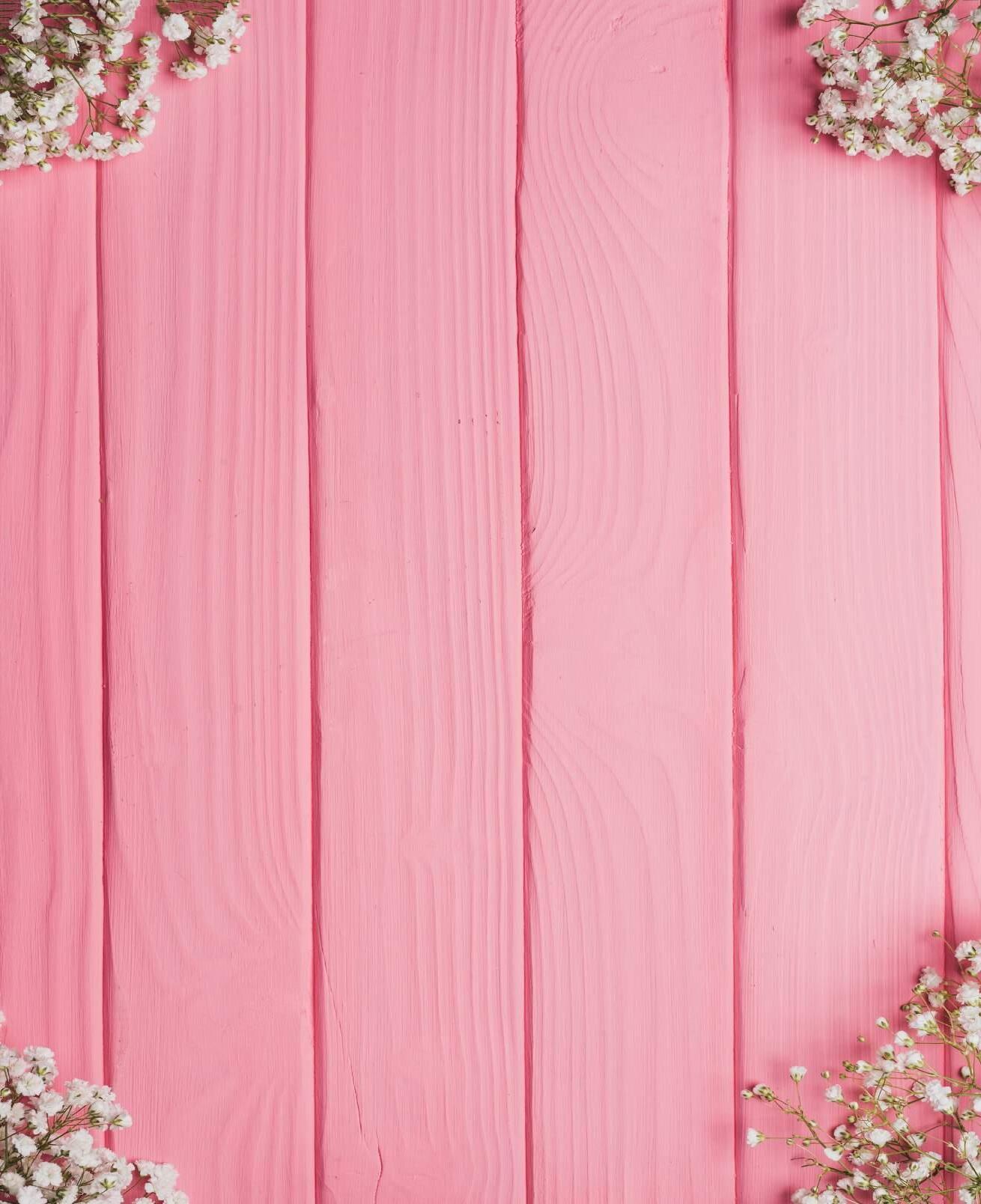 HURREN-MYERS
HURREN-MYERS
I orffen fy rhestr o syniadau ar gyfer Dydd San Ffolant yng
Lleoliad arall mae’n bosib ymweld ag ar gyfer bwyd Dydd San Ffolant yma yw The Coconut Tree. Mae’r bwyty yma yn arbenigo yn fwyd stryd o Sri Lanka ac mae ganddyn nhw fwydlen ar gyfer llysieuwyr a fegans. Mae’r bwyty yn cynnig profiad gwahanol os dydych chi ddim yn medru dewis beth i fwyta; am £20 yr un, maen nhw’n cynnig i ddewis amrywiaeth o fwydydd o’r fwydlen ar eich cyfer yn ogystal â ‘Hopper’ sef crempog mewn siâp bowlen wedi llenwi a winwns, cnau coco a salsa. Maent yn cynnig coctels hefyd ac mae rhai ohonyn nhw yn 2 am £10.
Nghaerdydd yw’r syniad mwyaf drud, ond y mwyaf hwylus, sef Escape Room. Er bod Escape Room ddim yn bloeddio rhamant, mae’r profiad o wneud Escape Room

Bargen.
werth gwneud, ac mae’n gyfle arbennig i bartneriaid fondio. Mae yna lu o lefydd yng

Nghaerdydd i wneud Escape Room oherwydd maen nhw mor boblogaidd, ond eto, yn debyg i weddill y cyrchfannau dwi di restri uwchben, mae’n rhaid bwcio o flaen llaw. Mae’n costio tua £20 yr un ar gyfer awr tu fewn Escape Room ac mae yna amryw eang o wahanol ystafelloedd i geisio dianc o.
Dyma’r linc i fwcio: https://www.escaperoomscardiff.co.uk/
I gloi, gobeithio mae rhai o fy syniadau ar gyfer Dydd San Ffolant wedi bod yn ddefnyddiol er mwyn creu diwrnod a phrofiad unigryw ar eich cyfer chi a’ch partner. Dymuniadau gorau ar gyfer Dydd San Ffolant!
issue 176 CLEBAR - 23
Poblchi’nweldynystodyChweGwlad
 words by: NIAMH GOODWIN -THOMAS design by: YEON SU CHO
words by: NIAMH GOODWIN -THOMAS design by: YEON SU CHO
24 - CLEBAR issue 176
Mae’r Cwpan byd Rygbi wedi dod i ben a nawr mae’r byd rygbi yn paratoi am y cyffro o’r chwe gwlad. A da’r chwe gwlad mae grwpiau penodol o bobl yn ymddangos ar strydoedd Caerdydd, dyma rhai o’r bobl efallai byddwch yn cwrdd ar ddydd rygbi.
Yn gyntaf mae’r MEGA ffan. Dyma’r fath o berson sy’n deffro am 8 y bore i sicrhau seddu da yn y tafarn, ac os ydych yn fyw da un, neu’n ffrindiau da un, byddwn nhw’n siŵr i herwgipio chi am y daith. Ond os nad ydych chi’n byw ‘da un dydy nhw ddim yn anodd i spotio, gyd mae angen edrych am yw’r person sydd ‘di gwisgo yn y cit newydd Cymru gyda draig wedi paentio ar ei wyneb er ei fod yn eistedd yn y tafarn nid y stadiwm. Allwch chi glywed nhw o filltir i fwrdd yn canu Hen Wlad ar ben ei hun 2 awr cyn Kick off, a sgrechain i unrhyw un sy’n ddigon agos am gymaint maen nhw’n casáu’r Saeson a pwy fydd yn sgorio’r cais gyntaf (bydden nhw’n anghywir).
Wedyn chi da’r merched sy ddim yma i wylio’r rygbi, o na, maen nhw’n yma amdano’r booze a’r bechgyn ffit rygbi (s’dim lot ohonyn nhw). Mae’r merched hwn di gwisgo yn ei tops ffansi a heels dal (fel gallant nhw weld y sgrin yn well wrth gwrs), gydag wyneb sy’n barod am noson allan yn lle’r tafarn. Byddwn nhw’n neud yn sicr i sgrechain ar deledu oleia unwaith ond 2 awr mewn pryd rydych yn ‘ofyn pwy yn union sy’n chwarae, does dim clem ‘da nhw, gyd mha nhw’n gwybod yw bod peint yn ei llaw ac mae Will o’r tîm rygbi yn bylon brynu mwy iddyn.

Efallai byddwch chi’n cwrdd â’r ffan pêl-droed allan yma. Nawr, mae’r rhain yn haws i spotio o bellter, efallai maen nhw’n gwisgo crys rygbi, ond o dan grys yma mae raging ffan o Arsenal ‘di cuddio i ffwrdd. Mae’r bobl yma gyda’r farn fod pêl-droed yw’r gêm gorau yn y byd ond ni allant nhw wrthod y ffaith bod dydd rygbi, yn enwedig yng Nghaerdydd, yn ddigwyddiad sy’n ysblennydd o hwyl, ac yn sicr dydy’r fans pêl-droed ddim yn yfed cymaint â’r fans rygbi. Y ffordd i nabod ffan pêl droed ar ddydd fel hyn yw os ydych yn dechrau siarad am y gêm, bydd y person yma wastad yn cymharu’r ddwy, bydd pêl droed wastad yn well yn cymharion yma. Ac ar ddiwedd y gêm efallai byddwch chi’n clywed y frawddeg, “dydy o ddim yn pel-droed naw ydy o.”
Mae’r chwe gwlad yn gadael i chi yfed am bob awr y dydd a dyma ble mae’r pedwerydd person yn dod i mewn; y Sesh head. Gyd maen nhw yma amdano yw’r booze, y peints ar ôl peints ar ôl peints. A bydd neb yn barnu’r bobl yma am yfed ei pheint cyntaf am 9 yn y bore, oherwydd mae pawb arall yn neud yr un beth. Ond pryd mae’r gemau yn dod i ben, ac mae pawb yn trafod os mae Juice yn opsiwn am y nos, ac un person yn cynnig Tiger Tiger oherwydd efallai bydd y tîm yno, mae’r person yma yn dod ‘nôl i’r bwrdd ‘da 3 jager bombs i bawb a shots ‘fyd. Ac wedyn maen nhw’n dod a rownd arall rhyw 10 munud ar ôl i chi orffen y rownd gyntaf. Dydy’r bobl yma ddim ‘da clem beth sydd di ddigwydd yn y gêm ond maen nhw di yfed ei phwysau yn alcohol.
Yn olaf chi da’r bobl doedd ddim hyd yn oed gwybod bod rygbi yn chwarae penwythnos yma. Efallai mai nhw di troi lan i’r pwb am 2 o gloch yn disgwyl sedd a bach o fwyd, ddim ond i weld y lle jam packed da crysau coch, gwyn, glas neu wyrdd. Neu’r bobl sy’n cerdded lawr stryd St Mary’s am fach o siopa yng nghanol y dydd, dim ond i weld strydoedd llawn pobl yn ganu ac yfed, a rhedeg o un man i’r llall yn cwyno am rywun maen nhw’n galw’n ‘Ref!”.
Felly joio y Chwe Gwlad, ac edrych allan am y bobl uchod!
issue 176 CLEBAR - 25
design by: LUISA DE LA CONCHA MONTES
Cwrs ôl-raddedig vs. Swydd
Mae dewis eich dyfodol yn anodd yn enwedig wrth i chi gadael Prifysgol. Mae dau o ein cyfranwyr yn ddadlau beth yw’r opsiwn gorau, swydd neu gwrs ôlraddedig.
Pam ddewis swydd?
Gan Indigo Jones
“Beth ydych chi’n wneud blwyddyn nesaf?” y cwestiwn sydd yn codi chills arna i. Gan fod fi’n agosáu diwedd fy amser yn brifysgol, dwi’n clywed y cwestiwn yma cwpwl o weithiau’r wythnos. Ond yr ateb yw, nad ydw i’n hollol sicr o feth i wneud ar ôl i mi raddio. Dwi’n gofyn fy hun “sut allai ddarganfod beth yn union yw’r peth gorau i mi?”. I ambell berson profiadau yw’r peth gorau, a beth yw’r ffordd gorau i ennill profiad? Ymgeisio am amrywiaeth o swyddi! Efallai fel fi, rydych chi’n edrych am y beth nesaf i wneud yn fywyd, ac yn ansicr ble i ddechrau.
Ti ‘di bod yn astudio am ryw 18 flwyddyn ac yn barod i ddechrau eich bywyd tu allan o addysg. Mae’r cysur a diogelwch o aros am radd ôl-raddedig yn apelgar, ond y syniad o wneud flwyddyn arall yn addysg yn llafurus. Nid yn unig ydy o’n flwyddyn arall o brifysgol, ond efallai’r flwyddyn fwyaf anodd yn eich amser yn addysg, felly bydd rhaid i chi wneud yn sicr fod chi’n wneud y peth gorau i chi!
Wrth ddechrau swyddi rydych yn cael eich taflu mewn i’r ochr ddwfn, mae rhaid i chi gael profiad ymarferol yn syth ac yn dysgu ar y swydd. Yn sicr i rai pobl mae hyn yw’r pethau gorau oherwydd does dim ffordd well i ddysgu ‘na dysgu o eich camgymeriadau wrth weithio. Mae’r profiad yma yn ddechrau da i’ch dyfodol yn waith wrth i chi casglu profiad yn amrywiaeth o swyddi a chasglu pethau i adio i’ch CV. Mae nifer fawr o gwmnïau yn edrych am brofiad yn lle cyrsiau ôl-raddedig, felly tra bod chi’n ennill arian chi hefyd yn ennill profiad gwerthfawr.
I ddweud y gwir y syniad o fod dyfnach mewn dyled yn ofni mwyafrif o fyfyrwyr, ac felly efallai nad ydy gradd ôl-raddedig yn y beth gorau iddyn nhw. I wneud y cwrs bydd rhaid i chi dalu llawer o arian, ac efallai na fydd eich benthyciad myfyriwr yn ddigon i dalu am y cwrs a chostau byw. Mae’r syniad o fynd fewn i swydd a dechrau ennill arian yn barod i’ch dyfodol yn apelgar iawn, yn enwedig wrth i ni gasglu nifer fawr o ddyled yn y tair flwyddyn gyntaf o Brifysgol.
Mae dewis beth i wneud ar ôl Brifysgol yn anodd, a phaid becso oherwydd y mwyafrif ohonom ni yn yr un sefyllfa. Felly pob lwc i chi gydag eich dewisiadau a pob lwc gydag eich dyfodol!
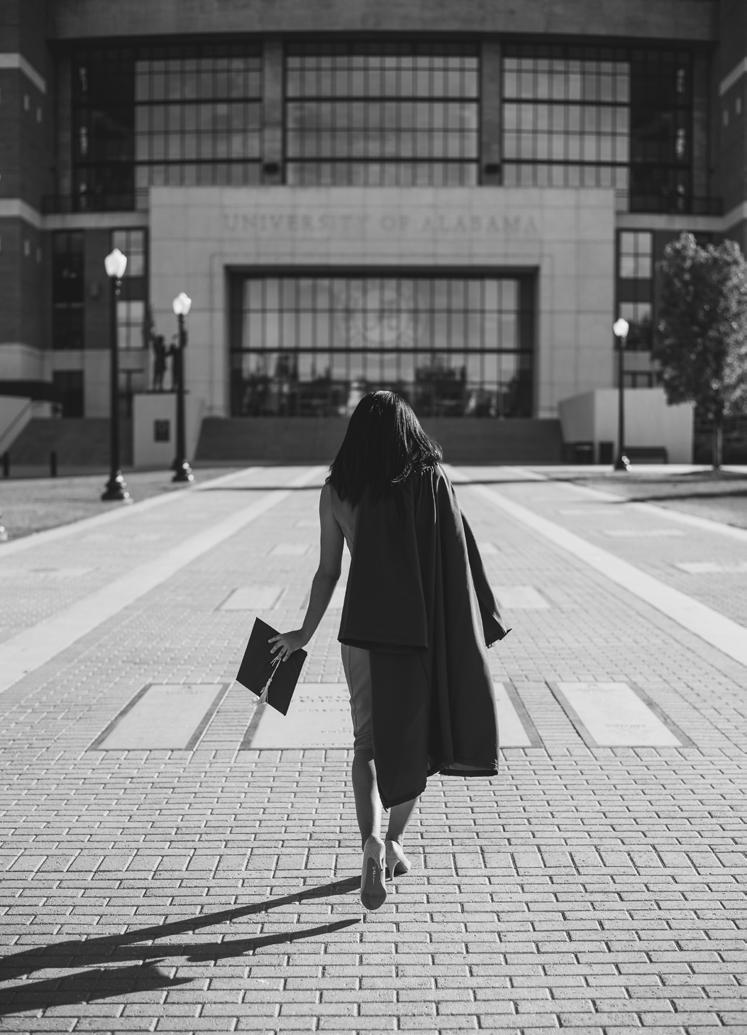
Pam ddewis cwrs ôl-raddedig?

Gan Lowri Pitcher
Wrth i mi agosáu at hanner ffordd trwy fy mlwyddyn olaf yn y brifysgol yn amlwg rydw i wrthi’n pendroni cam nesaf fy mywyd. Ffeindio swydd, mynd i deithio, gwneud dim, astudio cwrs ôlraddedig? Mae nifer fawr iawn o opsiynau o’n blaenau ni fyfyrwyr. Serch hynny, yr hyn rwy’n credu sydd orau, yn enwedig i mi, ydy astudio cwrs ôl-raddedig.
Un o’r prif resymau rwy’n credu taw hyn yw’r penderfyniad cywir i mi ydy’r ffaith bod gwneud meistr neu ddoethuriaeth yn caniatáu i berson arbenigo mewn maes sydd yn wahanol i’w gradd a dysgu sgiliau gwahanol i’r rheiny sy’n cael eu magi yn ystod astudiaethau israddedig. Er enghraifft, gallech gymysgu radd israddedig ieithoedd modern gyda chymhwyster newyddiaduraeth neu gysylltiadau rhyngwladol; neu gymysgu gradd israddedig hanes gyda gradd ôlraddedig yn y gyfraith.
Yn ogystal dylid nodi bod astudio meistr neu astudiaethau pellach yn caniatáu i chi dderbyn achredidau neu arbenigo mewn rhyw faes o’ch gradd israddedig er mwyn cyrraedd safon arbenigol a chynyddu’r tebygolrwydd o dderbyn eich swydd ddelfrydol.
Mae astudio am flwyddyn neu ddau ychwanegol felly yn caniatáu i chi ddilyn gyrfa wahanol, arbenigo mewn maes penodol neu ganiatáu i chi ymgeisio am swyddi sydd rheng neu ddau uwchben rheini sydd heb y cymwysterau olradd.
Ymysg fy nghyd-fyfyrwyr yn aml iawn rwy’n clywed bod nifer o bobl ifanc yn dyheu am fynd i deithio am flwyddyn cyn penderfynu ai astudiaethau pellach neu ffeindio swydd ydy’r trywydd cywir i ddilyn. Er fy mod yn credu bod teithio yn cynnig profiad gwych i fyfyrwyr, yn bersonol rwy’n credu ei bod yn well gorffen astudio cyn teithio. Rwy’n nabod nifer o bobl sydd wedi mynd i deithio ac ar ôl iddynt ddychwelyd nid oes ganddynt y cymhelliant i ddychwelyd i’r llyfrgell a threulio oriau maeth yn ysgrifennu traethodau. Yn ogystal, mae teithio’n ddrud ac efallai ar ôl dychwelyd bydd angen ffeindio swydd felly gallai cyllido am astudiaethau pellach bod yn anodd.
Yn olaf, rydym yn aml yn clywed taw bod yn fyfyriwr ydy amser gorau ein bywyd ac felly pam nad ymestyn y profiad hwn un cam ymhellach trwy barhau i astudio? Er bod cyrsiau ôl-raddedig yn ddwys ac yn amlwg mae’n rhaid ymdrechu llawer, mae hi dal yn gyfle i chi fyw ‘bywyd myfyriwr’. Mae hyn yn enwedig wir os oes gennych chi ffrindiau ar gyrsiau israddedig pedair blynedd ond rydych chi’n astudio cwrs tair blynedd. Gallai flwyddyn ychwanegol cynnig profiadau gwych a chymwysterau gwerthfawr!
26 - CLEBAR issue 176
With winter in full swing, our mental health can take a bit of a beating. With such short days and long nights, it’s no wonder some of us don’t get enough vitamin D — how can we, if we’re stuck in work or university all day? Of course, this is just one of the reasons why you might be finding yourself struggling with your mental health. For those suffering with depression and anxiety specifically, it can often be hard to leave the house or even get out of bed, and it can be even harder to resist the tempting powers of Deliveroo. So, how can you still give your body the nourishment it needs when you don’t have the mental energy to carry out the task of cooking?
FROZEN FOOD

Frozen foods are ideal for days where you don’t feel like doing too much cooking. You can get all your nutrients from frozen fish such as salmon, and bags of frozen vegetables are ready to eat in minutes. It has been proven that frozen vegetables contain just as much goodness as the fresh veg you see on supermarket aisles, so you can still keep your body feeling healthy.
THINK VEGETARIAN

Aside from the environmental benefits that a vegetarian diet supports, veggie dishes often keep for a much longer time than meat-based dishes. So, it might be an idea to swap the chicken in your curry for chickpeas — this way, you can make it on Friday, and on Monday it’s still good to eat!
MULTIVITAMINS




When you don’t get enough vitamin D from natural sunlight, your mood can dip. Moreover, our iron levels can fall if we don’t balance our meals out nutritionally, which is sometimes hard when you don’t want to cook or go to the shop. Daily multivitamins can really safeguard you from illnesses such as anaemia, which can leave you feeling even more tired and unwell.
DRINK, DRINK, DRINK

Make sure to drink plenty of water everyday to keep headaches at bay and to keep your body well hydrated. I like to keep an old 2 litre squash bottle next to my bed, so that I know I’ve drunk my daily recommended amount by the end of the day. Tea can often be a lovely little comforter, and a morning coffee can often be the first thing on your mind; however, caffeine often has negative side effects that can heighten feelings of anxiety. Try switching your drink to decaf in the afternoon so that you’re not battling the highs and lows of caffeine or lying awake at night.
AVOID COMFORT EATING

When I’m feeling down, often my first point of action is to grab a big bag of Walkers Sensations and hoover them up in one sitting. Although in the moment it seems like a good idea, afterwards I’m almost always left feeling bloated, sluggish, and guilty — and my mind is no better for it. People often do the same when they’re depressed or anxious. One reason for this is that foods high in sugar and carbohydrates increase levels of serotonin in the brain, which temporarily elevates your mood. When you find yourself craving a huge pizza or chocolate cake, try and find other ways to comfort your body, such as reading your favourite book, taking a warm bath, or going for a walk.
words by: KATIE DUFFIN design by: JOSH ONG
SHOP ONLINE

If you can’t quite face leaving the house just yet, online shopping is a great way to get all the products you need to take care of yourself. Tesco offers a 30 day free delivery trial, which is great for students trying to save a bit of money.
STOCK UP ON ESSENTIALS
Whilst you’re ordering your food online, make sure you’re all stocked up on staple foods like wholemeal bread, pasta, rice, tinned tomatoes, canned tuna, garlic, etc. You can make super easy and nutritionally fulfilling meals from just a few basic ingredients, such as a tuna pasta bake.
COOK IN BULK

It has been proven that diet does improve overall wellbeing so it’s important that we try to look after our bodies when our minds aren’t feeling too well!
If you’re having a good day and fancy cooking something that takes a little more effort than sticking things in the oven, it’s a good idea to cook in bulk. Dishes like curry, bolognese and chilli con carne are all easy to make and can be frozen in individual portions. So, when you can’t think of anything worse than picking up a pan, you can simply defrost a portion in the microwave.
issue 176 FOOD & DRINK - 27
The World At Your Doorstep
Cardiff is filled with so many brilliant eateries from all over the globe, so how do you choose where to eat? We’ve hand-picked some of the very best global cuisines in the city, so look no further. This handy guide will help you decide where to dine, whatever your taste buds crave!

With three restaurants now open, Canton, the City Centre and Roath, Chai St Indian Kitchen is quickly becoming one of Cardiff’s most loved (and well-priced) Indians. Try their famous thalis or their ‘chaitastic curry bowls’, and be sure to head down on a weekday to snag a day-time deal.
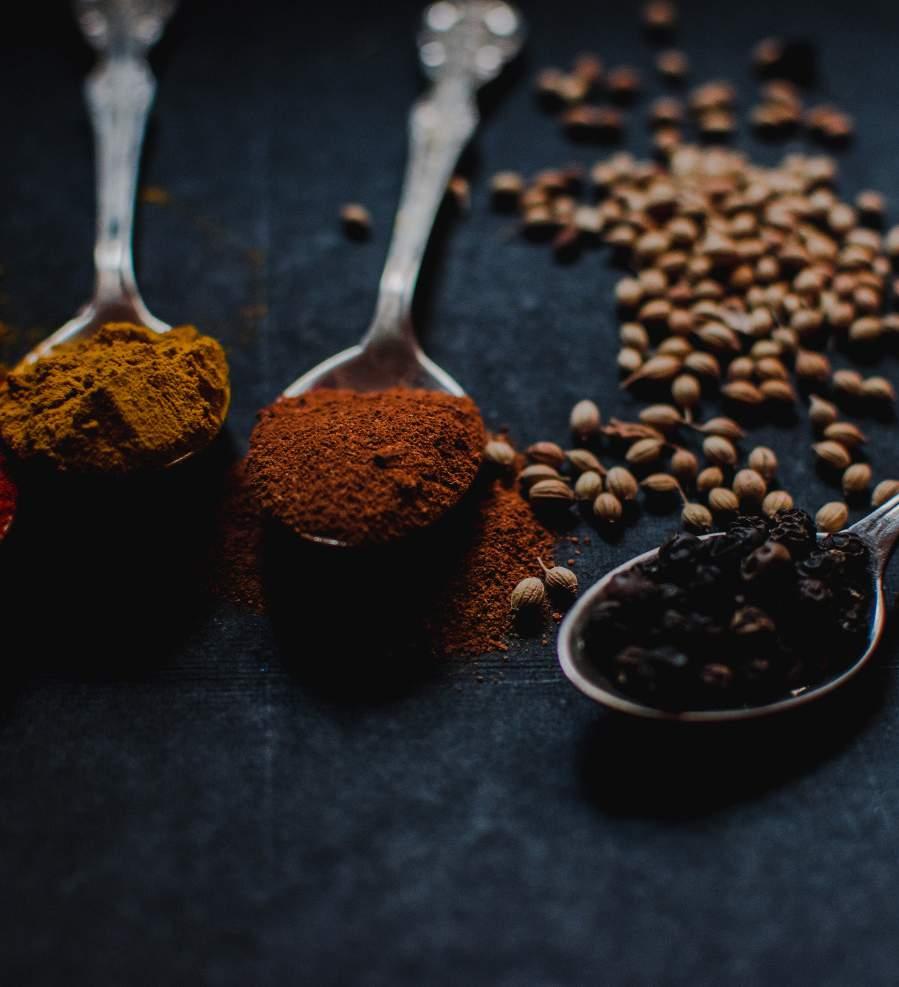
If you’re fancying something french, Le Bistrot Pierre may be right down your boulevard. Just off the infamous Chip Alley in Cardiff’s Brewery Quarter, this restaurant has a slightly more civilised feel than Dorothy’s chip shop. Not only is it delicious, with french favourites such as bœuf bourguignon and crème brûlée on the menu, but the prix fixe lunch menu lets you enjoy two courses for £12.95. What else could you ask for?
After the success of Bar 44 in Penarth, brothers Tom and Owen Morgan decided it was time to open a fully-fledged restaurant in the heart of the city centre. Asador 44 boasts authentic Spanish food of the highest quality, and some will argue the best steak in Cardiff! Oh, and did I mention it’s also a wine bar? This ambient restaurant just off St Mary’s Street has its very own cheese and wine cellar, what’s not to love?
Regarded as one of the most authentic Italian’s in Wales, Casanova is the perfect date spot – it even has an annual Valentine’s night which gets booked up pretty quickly, so you better put a deposit down now! I’d recommend the traditional ragu, it’s just too good to turn down.
If you’ve not been to Wahaca yet, just take the plunge. The three-floor restaurant and bar serves the best cocktails around and buzzes with good vibes whatever day of the week. For those in the mood for a game, there’s even table football at the top bar! And it’s not just a pretty face — Wahaca specialises in indulgent Mexican street food. Once seated, you get to pick several dishes from the huge menu to share or just to have by yourself. It also has great vegetarian and vegan options, so anyone can enjoy this great find.
28 - FOOD & DRINK issue 176
Chai St. Indian Street Kitchen
Asador 44
Casanova
Le Bistrot Pierre
MEXICAN
Wahaca
INDIAN FRENCH ITALIAN
SPANISH
Hands down, the only place to go for sushi in Cardiff is Yakitori #1. It offers unbeatable modern Japanese food using only the best ingredients from sustainable sources. Of course, you can try the restaurant’s very own yakitori, but a personal favourite of mine is the unagi nigiri — grilled eel with teriyaki. Don’t knock it ‘till you try it!
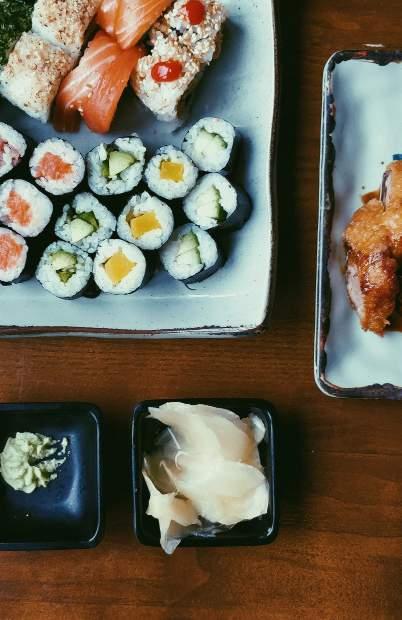
For some classic British cooking, head to The Potted Pig on St Mary’s Street. Hidden away in an old bank vault, you might walk past the entrance to this gem without even noticing it. The steak here is good enough to rival Asador 44, but the gin lounge makes it unique in itself. With big flavours, elegant decor and ambient lighting, this makes for the perfect place to impress someone. I’d go for the confit pork belly, pomme purée, seasonal greens & choucroute myself!
BRITISH LEBANESE
Shaam Nights is famous in Cardiff for its delicious middle eastern food, magical decor and jaw-dropping prices. This one is for the meateater, with dishes such as the chicken shawarma wrap starting at just £7! The batata harra here is a musteat, and the service is absolutely impeccable. If you fancy a relaxing night with friends, this is the place to go.
words by: KATIE DUFFIN design by: ALESSIO PHILIP GRAIN
Not to be confused with Smoke Haus, this American grill sits in Pontcanna and is famous for its glorious breakfast menu and huge burgers. Try something from their Texas BBQ, like the beef brisket or the ‘Memphis’ style baby back ribs. The portions and flavours here are not for the faint of heart.
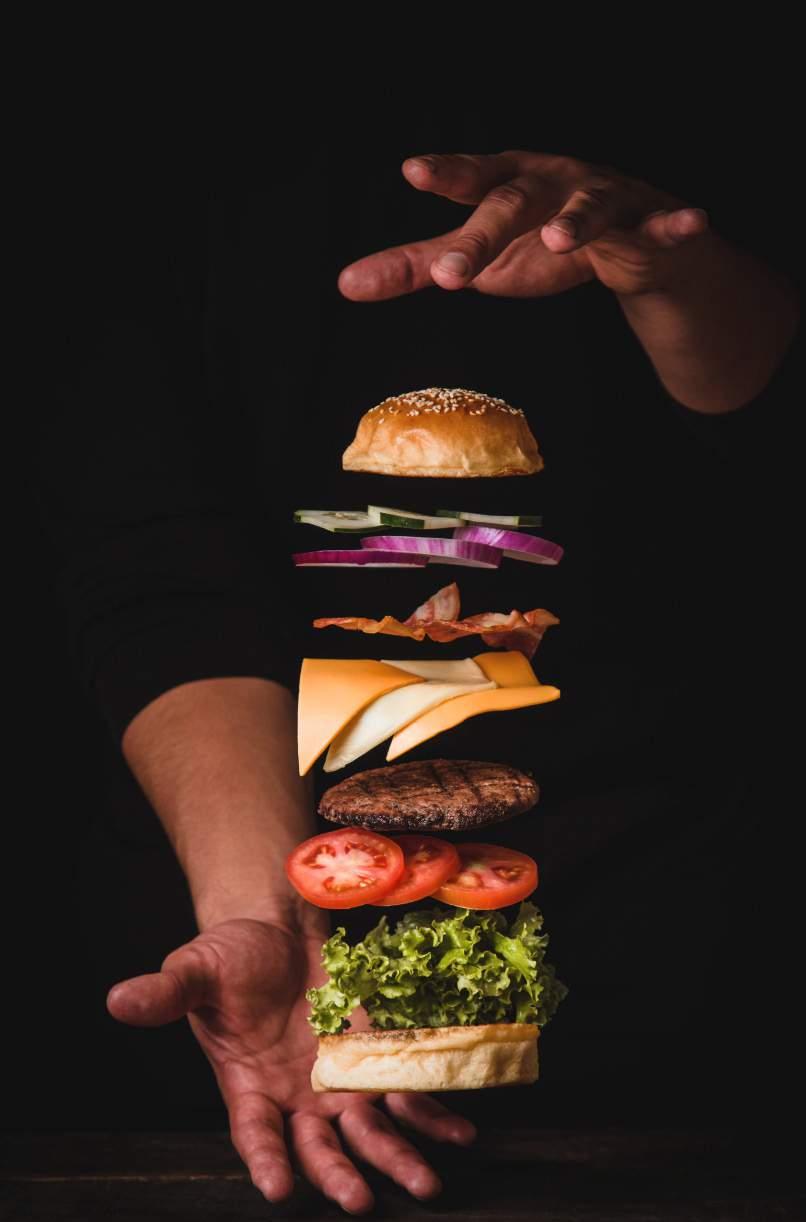
AMERICAN KOREAN
So many people raved to me about Kimchi, eventually I had to find out what all the fuss was about. It definitely didn’t disappoint. Situated in Canton, Kimchi is a Korean restaurant where you get to cook your own meat on the barbecues at the centre of each table. The fun of barbecuing your own food isn’t the only good bit — they have a list of delicious dishes and the authentic atmosphere in the restaurant is unrivalled.

issue 176 FOOD & DRINK - 29
Yakitori #1
Kimchi
The Potted Pig
Shaam Nights
The Smoke House
JAPANESE
Whether you’re brave enough to admit it or not, we’re all guilty of brand loyalty. I’m sure many of us can relate to leaving our local corner shop in frustration, empty handed and mumbling something along the lines of “why don’t they ever have the branded stuff?”. But do private brands really guarantee the best? Aside from their higher prices, it would be interesting to see if branded snacks are really in a league of their own when it comes to taste, so I’ve put it to the test. I’ll be tasting Maryland choc chip
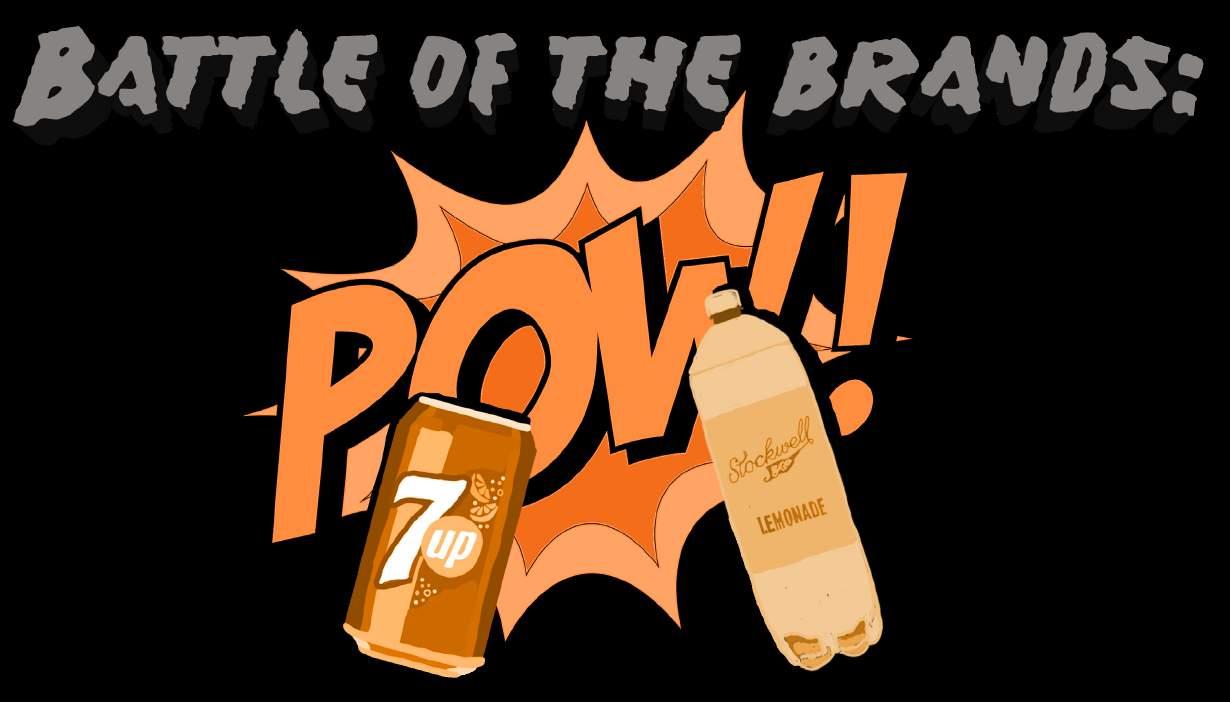


7up vs. tesco’s lemonade
First, I tackled the lemonade, 7up, the fizzy lemon and lime drink in the iconic green bottle, versus Tesco’s ‘Stockwell & Co.’ lemonade. Price wise, it’s easy to guess which was on the cheaper side; One 500ml bottle of 7up cost £1.00, more than five times the price of Tesco’s copycat, which was 17p for a 2litre bottle! After settling my initial excitement, I asked my flatmate to pour a small portion of each drink into two separate glasses, which I then proceeded to taste with my eyes closed. I instantly recognised the flavour of the first drink: A slight lemon tinge, extreme fizz and the strange coating your teeth get when you’ve had too much sugar: it was 7up. Having set the bar high, I was not overly surprised that 7up won the challenge. Stockwell’s lemonade, despite having a stronger lemon flavour, was disappointingly flat – the worst thing a fizzy drink can be.
Mr. Kipling’s Angel Slices vs. tesco’s angel cake
I stepped cautiously into the next experiment. Angel Cake is my alltime favourite snack, so I was sceptical to taste anything that may ruin it for me entirely. I quickly stuffed a slice in my mouth and was met with the familiar sweet, sticky icing and fluffy vanilla sponge cake of Mr. Kipling’s angel slices. Although I did not expect the unbranded treat to outperform Mr. Kipling’s, nothing could have prepared me for the disaster that was Tesco’s ‘Angel layer cake’. I don’t think I have ever been so disappointed in a cake before this moment. It was dry, gritty (as if the mix hadn’t been blended thoroughly) and lacked the sweetness expected from what Tesco claimed was a ‘Teatime Classic’. I wish I could say that the price of the unbranded product compensated for its taste, but in this case the branded goods were even cheaper; with a 6 pack of Mr Kipling’s Angel Slices costing £1 and a large slice of Tesco’s cake pricing higher at £1.25. Round two, the brands are still in the lead.
words by: OMO IFABUA
design by: LUISA DE LA CONCHA MONTES
cookies, 7up, Wotsits crisps, Mr Kipling’s Angel slices and, of course, their counterfeit equivalents to decide which is better. My prediction is that the branded goods will win this challenge, purely because their widespread recognition and success could only be made possible if their products are of a high quality, but who knows? I may be proven wrong…
Wotsits Crisps vs. Happy Shopper’s Cheese Puffs
Next up was the battle of the cheesy crisps. I decided to pair up a British classic, Wotsits, with Happy Shopper’s cheese puffs from my local corner shop. Although I’m not a major crisps fan, I honestly cannot fault Wotsits – they had a nice cheesy taste and crunch and only cost a pound for a large bag. The counterfeits came in at half price, offering two bags of cheesy goods for the price of one, and who doesn’t love a bargain? Although they weren’t quite as cheesy or crunchy, they came quite close. I would honestly recommend the Happy Shopper alternative if you’re hosting some friends so you can get more for less, I’m sure they won’t taste the difference.
Maryland’s Cookies vs. Tesco’s Cookies
Finally, I was left to try the chocolate chip cookies. Maryland are infamous for their sweet treats so I knew this would be a tough round for Tesco to win. What surprised me first was the prices of the two. Of course, you would initially expect the branded goods to cost more, but as shown with the Angel Cake, this is not always the case — the Maryland cookies were in fact 10p cheaper. The two almost identical cookies were placed in front of me and I took a bite of both – they tasted exactly the same. I continued to eat, determined to find a flaw in either, but (unlike I predicted in my hypothesis) I couldn’t. This proves that brands don’t always guarantee a better taste and sometimes you can simply go for the cheaper alternative. Although in this case the Maryland cookies were cheaper than Tesco’s, I would keep my eye out for more of their unbranded biscuits and you may be able to save yourself a bit of money.
Ultimately, in the battle of the brands anyone can win. This test goes to show that although we hold brands on a pedestal, you can often find unbranded treats which taste just as good as the original and sometimes cost even cheaper! I would recommend trying this for yourself and finding which snacks you prefer, I can almost guarantee you’ll be pleasantly surprised.
30 - FOOD & DRINK issue 176
words by: HANNAH PENWRIGHT design by: JOSH ONG
Food and drink trends are constantly changing, and every year companies such as Whole Foods Market and Waitrose release reports which predict what’s likely to be popular for the coming year. This year, predictions include a focus on reducing waste, alternatives to alcohol, and changes to snacking habits, but only time will tell as to how popular these trends really become…


Zero-waste shops have been appearing all over the UK recently, with Cardiff being blessed with the incredible, recently expanded, Ripple - found on Albany road. But 2020 is bringing a new weapon to the battle against excess packaging - edible packaging. The idea might be hard to imagine, but it might not be as far in the future as we think. Believe it or not, edible packaging is already being used at large events such as The London Marathon. The 2019 marathon replaced thousands of water bottles with Ooho! capsules made from seaweed extract, by the UK based company Skipping Rocks Lab. Hopefully, this year will bring with it even more innovative and sustainable packaging alternatives to fight the war against waste.
Snacking has been increasing in popularity for years now, with more and more people fuelling themselves with onthe-go snacks in place of three meals a day. The 2019 Mintel Consumer Snacking UK report claims that 37% of 25-34-year olds eat snacks to replace a meal at least once a week and two thirds of adults choose to snack at least once a day. But the days of reaching for the biscuit tin are crumbling. More consumers are choosing snacks that not only satisfy their hunger but are nutritionally beneficial too. Popular choices include energy balls and fruit ‘shots’, which include mix-ins such as nuts and dark chocolate. 2020 is likely to introduce even more healthy snack options, with a specific focus on fresh snacks. Protein is predicted to dominate the snack sector in order to meet consumer demands following last year’s 32% increase in the number of online searches for ‘high-protein snacks’. Keep your eyes peeled for these protein-pumped snacks such as jerky and roasted chickpeas as they begin filling up supermarket shelves this year.



Recent consumer buying habits suggest that another food trend on the rise this year is an increase in low and no alcohol alternatives. Research shows that in 2019, alcohol free beer sales increased by 58% on the previous year, and lower strength beer rose by 16%. Many still assume that university life revolves around excessive drinking, but the rise of consumer preferences for flavour over ABV (Alcohol By Volume) will potentially encourage students to opt out of alcohol in exchange for a flavoursome and hangover-free life.




Over the past few years, sugar has become the number one enemy in terms of healthy eating as diets high in added sugar have been linked to conditions such as heart disease. As well acting as a catalyst for changes, such as the sugar tax on drinks in April 2018, many brands are reducing or replacing the sugar in their products. Just last year, Cadbury released a version of their ‘Dairy Milk’ chocolate bar which contains 30% less sugar than the original. Also, Nestlé are planning to release a chocolate bar that uses the white pulp around cocoa beans to replace the refined sugar. The fact that major companies are making changes means that other companies will hopefully follow in their footsteps. There are also predictions that syrups from natural sources will rise in popularity, using fruits such as pomegranates and dates. Although syrups are still very high in sugar, fruit syrups are a good source of antioxidants which refined white sugar is lacking in.

Around 1.3 billion tonnes of edible food are thrown away every year across the globe. The good news is that 2020 is predicted to develop new ways to utilise food that otherwise goes to waste. Many great initiatives are already underway, for instance, Lidl introduced the ‘Too Good To Waste Boxes’ last year in order to combat the large proportion of fruit and veg waste. These are filled with 5kg of fruit and veg that are slightly damaged, but still perfectly edible. Any boxes that don’t get sold are given to local causes, so nothing goes to waste. Expect to see more schemes like this as the year progresses. We can all get on board with this trend by rethinking what we’re throwing in the bin. I’m sure we can save some of the brain power that university sucks out of us to use towards reducing our waste.
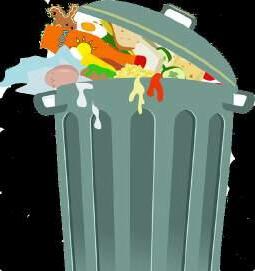
issue 176 FOOD AND DRINK - 31
S u g a r S h i f s
R i s e o f S n a c k i n g
E d i b l e P a c k a g i n g
L o w / N o A l c o h o l
W a s t e R e d u c t i o n
WILD THING
Wild Thing are a plant based cafe who serve local, organic food and aim to bring the community together in a healthy way! Keep an eye out for our next issue to learn a bit more about Wild Thing and read our exclusive interview with the owner. In the meantime, head on down to their Cathays or Grangetown cafes for some plant-powered goodness.

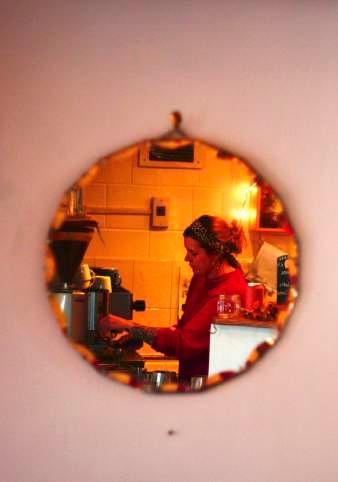
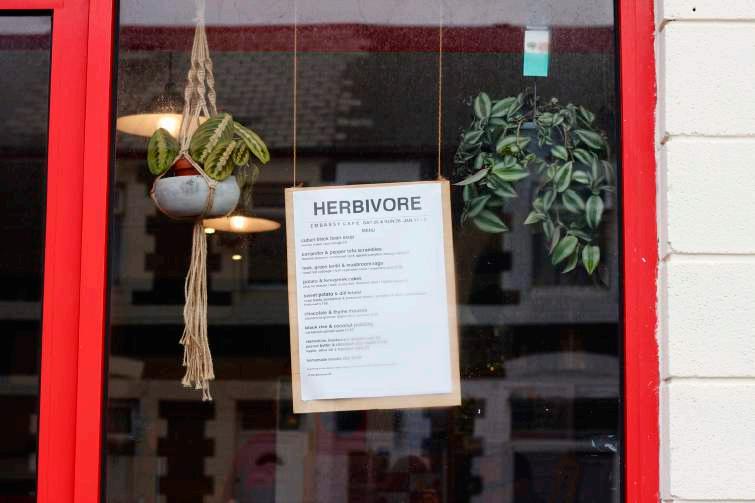
32 - FOOD SHOOT issue 176
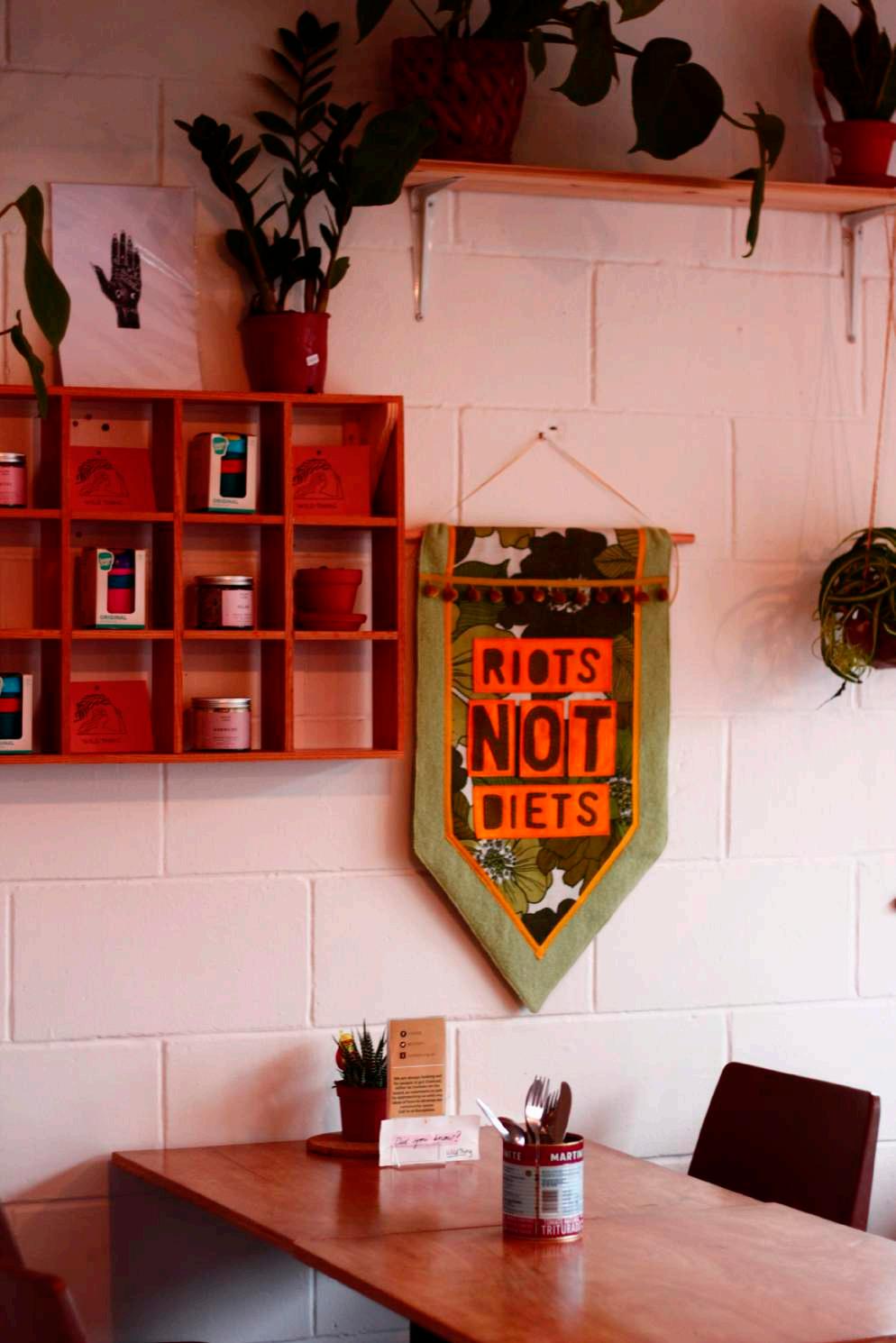
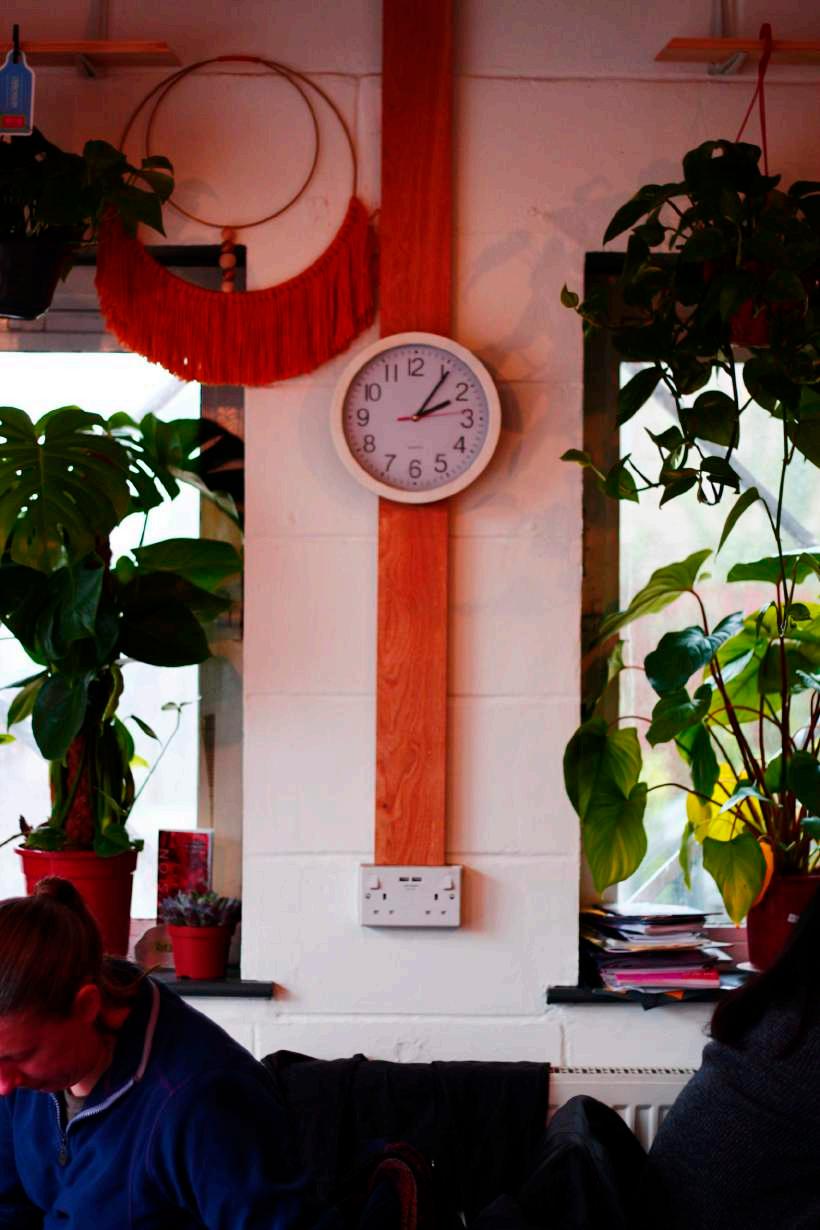
issue 176 FOOD SHOOT - 33
Wild Thing Cathays Location: Embassy Cafe, Cathays Community Centre, 36-38 Cathays Terrace.
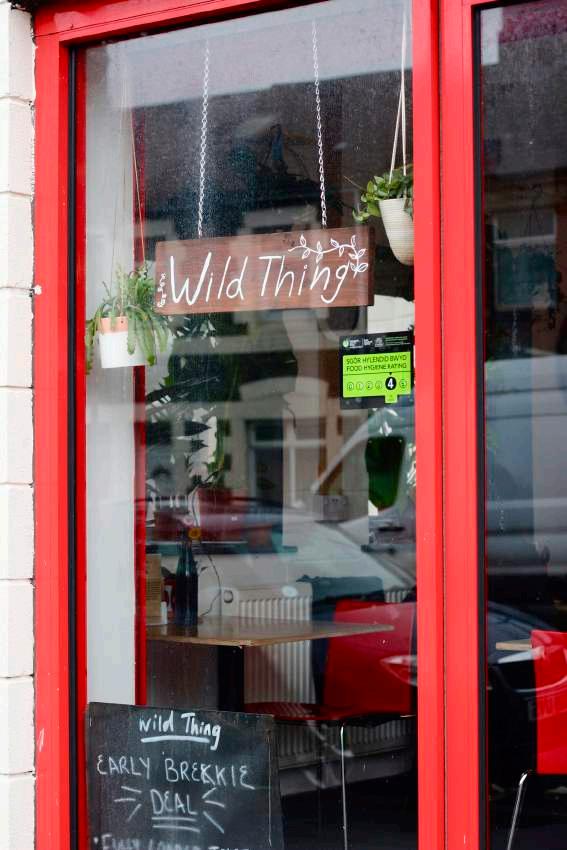

Opening Hours: Monday to Friday 8:30AM-3:30PM
Instagram: @wildthingcathays

34 - FOOD SHOOT issue 176
words by: KATIE DUFFIN
photography by: LUISA DE LA CONCHA MONTES design by: ELAINE TANG
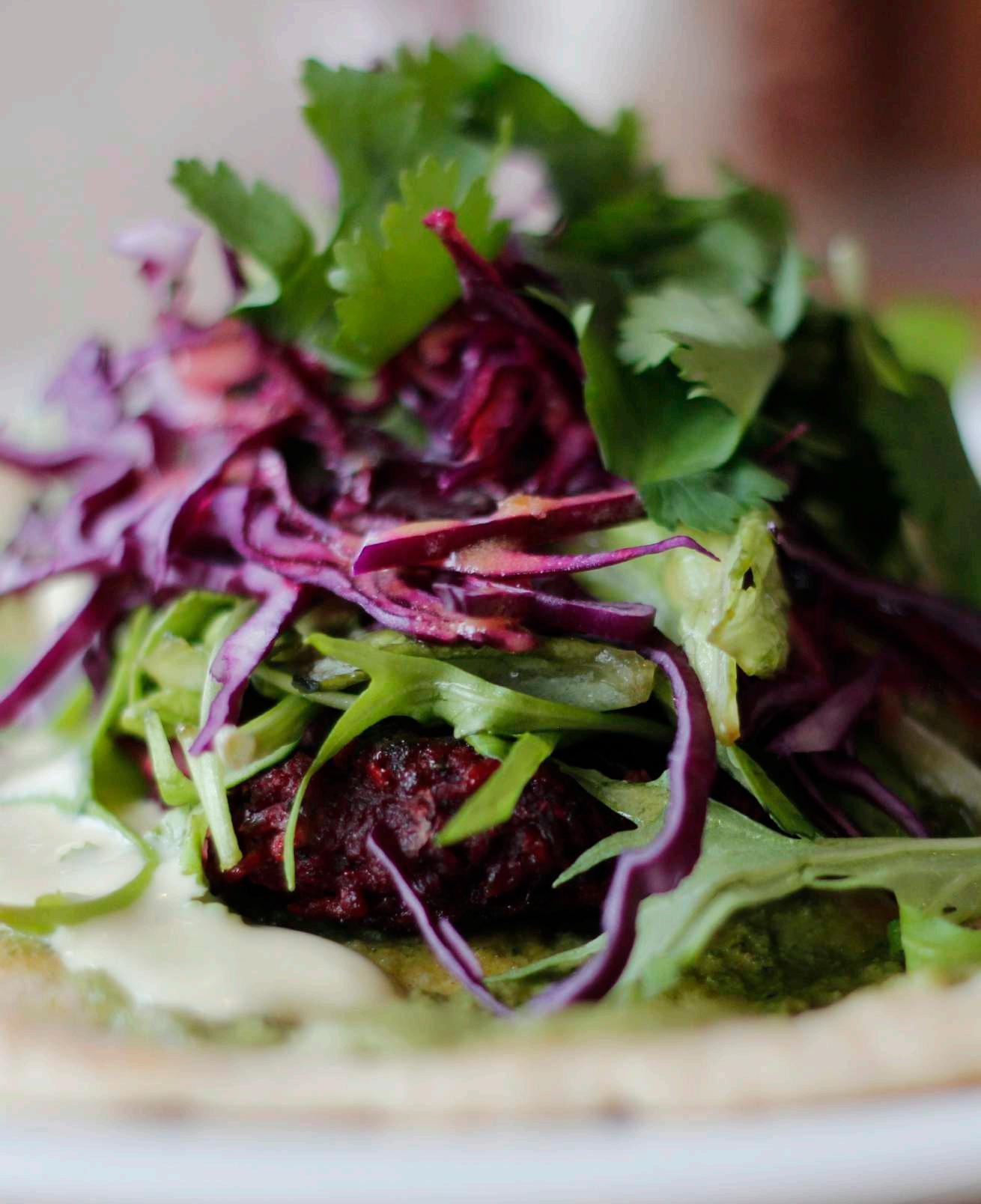
issue 176 FOOD SHOOT - 35
words by: HANNAH PENWRIGHT design by: DEVIKA SUNAND
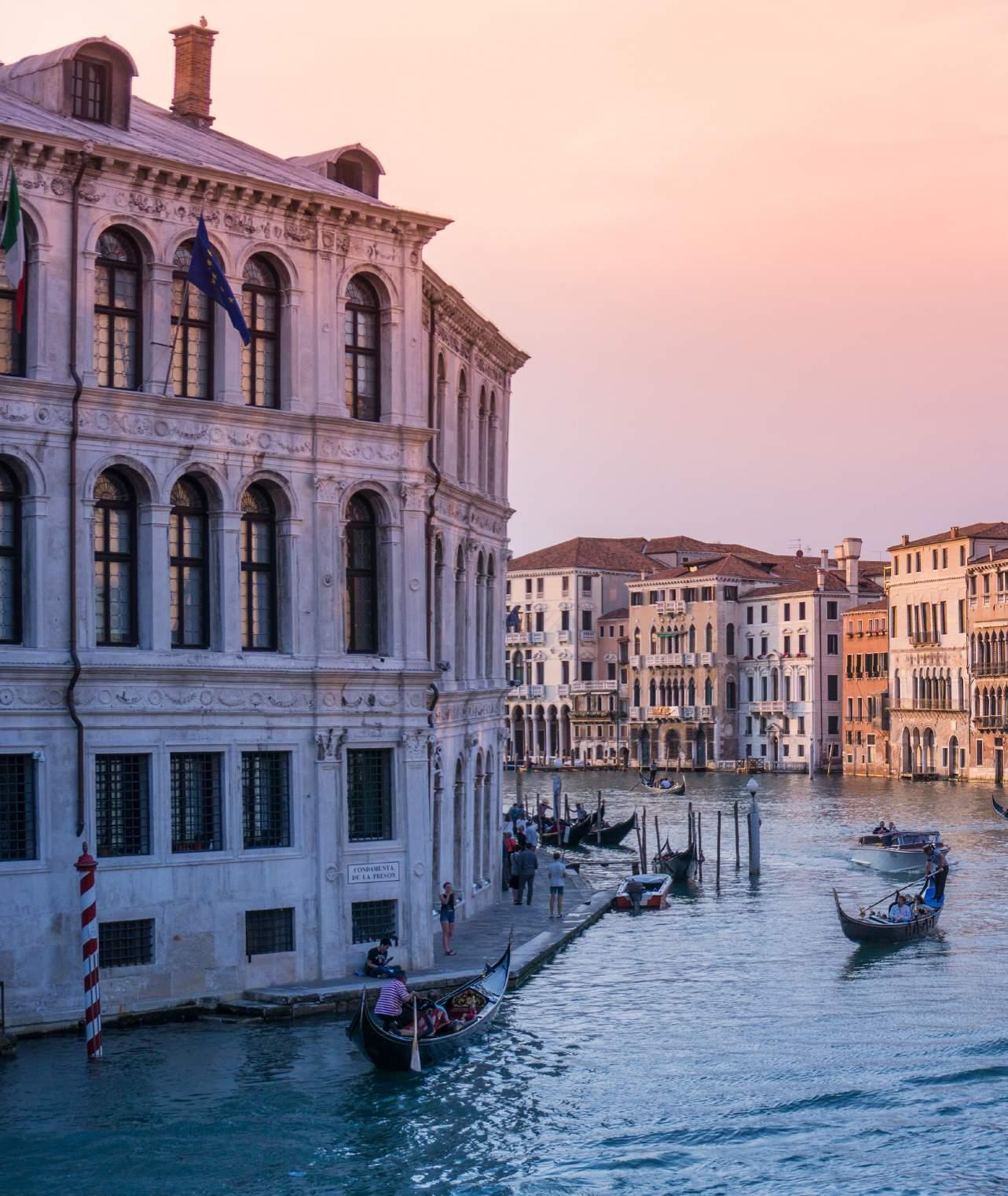
Climate change is a hot topic at the moment, but hot is the last thing we want our planet to become. Often, the focus in the media is about how climate change will affect our planet in the future, but in places such as Kiribati, Italy and even right here in the UK, the damage is already being done. Environmental activists such as Greta Thunberg and Extinction Rebellion are demanding governments around the world take action to combat the severe effects of climate change before it is too late. Although many governments are beginning to promise changes, more needs to be done to fight climate change and preserve our planet.
The Great Barrier Reef
located off the coast of Queensland, Australia, The Great Barrier Reef is classed as one of the seven natural wonders of the world and is the only living thing on the planet visible from space. These facts and the sheer beauty of the reef make the popularity of it for travellers unsurprising, who get to experience firsthand the coral gardens made up of over 400 different types of coral, as well as the huge variety of species that live there. However, this natural wonder is seriously under threat. In 2016 and 2017, mass coral bleaching occurred in The Great Barrier Reef, affecting around 50% of the reef. Coral bleaching is when changes to the ocean’s temperature upsets and stresses the corals, which causes them to expel the algae that gives corals their bright colours. The only way the coral can recover is if the water temperatures quickly return to normal. However, if the coral does not survive it’s very unlikely to come back, meaning that damage caused by coral bleaching is often irreversible. As well as losing the beautiful coral reefs themselves, coral reef collapse also puts thousands of species at danger of extinction. Marine animals such as sea turtles and starfish rely on coral reefs for shelter, protection and as a source of food.
Kiribati
with only around 5,800 visitors a year, Kiribati is not as common a tourist destination as The Great Barrier Reef, but is no less beautiful. Located in the centre of the Pacific Ocean, Kiribati is made up of 32 atolls (ring-shaped coral reefs which encircle a lagoon) and one coral island. Considering Kiribati is filled with beautiful sandy beaches surrounded by crystal clear waters, it’s not difficult to understand why activities such as fishing and diving are common for travellers. But Kiribati is one of the three most threatened nations by climate change. Its low altitude makes it especially vulnerable to climate change as rising sea levels and storm surges are slowly causing the atolls and island to disappear. In 2009, two of the islands disappeared completely. The islands are only six feet above sea level and every year, the sea rises by around half an inch. Also, rising sea levels causes issues such as contaminating the freshwater and soil, which affects crop growing. Coral bleaching is happening in Kiribati too, and this along with factors such as reef structure damage are causing marine life to move away. The fishing industry is a big part of Kiribati’s economy which means that climate change is causing both economic and environmental issues.
36 - TRAVEL issue 176
The Places We May Lose
Venice, Italy
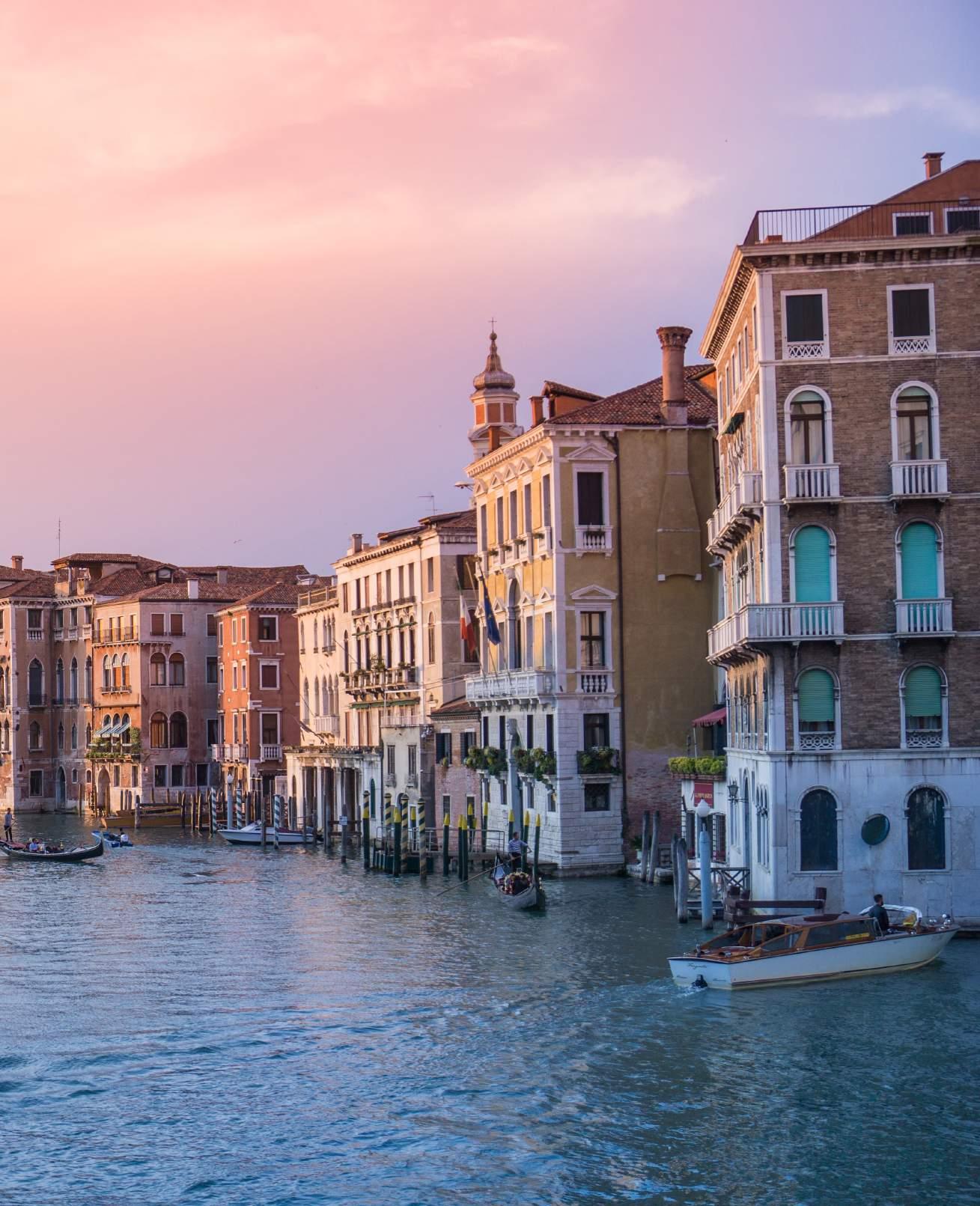
Norfolk, UK
It’s easy to assume that the damaging effects of climate change aren’t affecting us directly here in the UK, but changes are happening here too. Many towns in the coastal county of Norfolk is suffering from coastal erosion, which will only get worse as sea levels continue to rise. Over the past 20 years, 35 homes have been lost in Happisburgh and in 2018 alone, seven homes had to be demolished in Hemsby. And it’s not just Norfolk that is suffering from coastal erosion. It’s a frightening and upsetting issue for homeowners in coastal towns all around the country, and a lack of government funding to help re-home those who have lost their homes is making the situation even worse. The UK Committee on Climate Change’s 2019 progress report claims that sea levels around Britain could rise by over a meter by 2100, which shows that unless we take serious action, residents in coastal towns all around the UK are going to lose their homes. The Environment Agency for the UK predict that unless we increase preventative measures against rising sea levels, around 5,000 homes are likely to become uninhabitable over the next 20 years.
The stunning city of Venice, filled with incredible architecture, seafood and gondola trips, has long been nicknamed ‘the floating city’. Before the early settlers arrived in Venice, there was just a collection of islands found in a lagoon. The solid foundations on which the buildings still stand on today are made of wood and because it is underwater, it doesn’t rot due to the lack of oxygen. However, the weight of the city squeezes water out of and compacts the soil, slowly but surely causing the north-eastern Italian city to sink. Therefore, although climate change isn’t the only factor that causes floods in Venice every year, an increase in the severity of the floods over recent years is being linked to climate change. A storm in November 2019 caused particularly severe flooding, with some of the city being as deep as 6ft under water (the second highest levels in recorded history). More than 80% of the city was flooded, including tourist attractions such as St Mark’s Square, Venice’s major public plaza. Following this, Mayor Luigi Brugnaro declared a state of emergency and said that the governments had to listen now. During the next century, it’s predicted that the Mediterranean Sea will rise by up to 140 centimetres. This would leave Venice underwater by 2100, unless significant action is taken to combat climate change. The places we may lose are already disappearing. Unless changes are made to prevent further damage to the planet, these places of natural wonder and those that millions call home, will only be found in our memories.
issue 176 TRAVEL - 37
Do you hate the term tourist, and like to be called a traveller? Do you prefer to “do it yourself”? Do you shiver at a package deal, or bolt from a travel agent?
If you answered ‘yes’ to any of the above questions, you’ve probably used Airbnb. Its reputation as the way to stay both cheap and authentic has led to properties of all shapes and sizes, marketing themselves as your next destination. Why book into a tired three-star hotel when you could rent a characterful apartment for half the price?
But as more Airbnbs pop up across the globe, more unfortunate truths pop up with them. Airbnb loves its image as the traveller’s edgy alternative, but behind that façade is a giant commercial engine worth more than $30 billion. In 2018, it was reported that Airbnb had 5 million listings in 81,000 cities across the world. Whilst hotels and guesthouses are subject to strict governmental rules, Airbnb is far more difficult to regulate – a scary prospect given the huge scale of its business. There’s a reality to your fantasy of living like a local, and your uninformed ideals might be doing more harm than good.
 words by: JAMES BARKER
design by: ORLAGH TURNER & JAMES BARKER
words by: JAMES BARKER
design by: ORLAGH TURNER & JAMES BARKER
It’s the issue of the moment: are you an ethical tourist? Whether you’re scaling down sky-high air miles or choosing to sample vegan treats at your destination, students in particular are trying to find more sustainable ways to travel.
On the surface, Airbnb may seem like the ethical choice for travellers. Staying in someone’s home means rejecting an ugly purpose-built skyscraper hotel, right? Rather than feeding large hotel chains and paying hefty government taxes, you’re handing your money straight to the locals. But again, the reality is far more complex.

38 - TRAVEL issue 176
Here comes the first shocking fact: many Airbnb listings are actually illegal. Most cities have tough regulations on shortterm lets but the company’s USP of ‘anyone can Airbnb’ means that illegal listings go largely unchecked. You may question: “If no-one will notice, why should I worry? My host is breaking the law, not me.” But it is the responsibility of the ethical tourist to consider why these regulations are in place in the first place.
Take the Big Apple – everyone wants a bite of it. We’ve all fallen in love with the idea of renting a quirky Upper East Side apartment and living like a character from Friends. But in 2014, the New York state attorney general revealed that as many as 72% of listings in the city could be illegal. His report estimated that Airbnb skirts as much as $39 million in required NYC hotel taxes. Now, that might not seem like an issue for a wealthy Western government, but imagine this scenario playing out in developing parts of the world, such as Southeast Asia. The tourism industry (including the student’s beloved “gap yah” experience) is a desperately needed source of income for the government. “But my money’s going straight into my host’s pocket!” you cry. But whilst cutting out the government’s tax may seem noble, a similar cut –in the form of a commission–will fall into the hands of the giant commercial engine that is Airbnb

You can find an Airbnb in a matter of minutes, but it can just as easily be snatched away again. Cancellations can occur just a few days before your trip – or worse, you could turn up at your stay only to be let down on the doorstep. In the event of a cancellation, you’ll usually be refunded the full amount, but nobody wants to face an eleventh hour search for an expensive alternative.
This misfortune befell my housemate’s boyfriend during a recent trip to Australia. He turned up to find no sign of the host, no instructions of how to enter the property and no response to his texts and calls. He spent over an hour on their doorstep before giving up and seeking refuge in a nearby hostel. When you’re in a new place, bewildered and exhausted from travel, a no-show host is the last thing you need.
However, you can protect your experience to some degree by filtering your search to the best-rated, most experienced ‘superhosts’. Hosts only qualify for this badge of honour after 100 nights of impeccable hosting (with a rating of 4.8 or above!), so you can sleep easy in the knowledge that your booking is extremely unlikely to be cancelled. Of course, you’ll pay more for the premium.
It’s a common statement: “I want to experience [insert touristy place] like a local”. But how is that possible if there are no locals to live like?
A recent study in New York found that Airbnb listings can bring in two to three times more income than long-term tenancies. This hikes up rent prices for locals and would-be residents of the city, making these destinations even more unachievable for the people wanting to put down roots. It’s a similar scenario in the
Ultimately, it comes down to whether you want to risk it. More often than not your booking will be delivered faultlessly, but no Airbnb is completely protected and you could find yourself out in the cold at a moment’s notice.
Although there are risks to you as the consumer, Airbnb generally has a high satisfaction rating (90%, according to the BBC). But whilst our experience might be good, we must think of the potential consequences for the destination itself. What’s the point in staying in a cosy “locals” apartment if the block is
issue 176 TRAVEL - 39
words and design by: LAFAN HASAN
Where is home? I feel like this is one of those trick questions, like asking a parent who their favourite child is. What makes these two questions so similar is the fact that you end up choosing between things that are both a part of you and that you are a part of. There is one thing in life that I think all of us dislike: discomfort. We constantly try to understand complex things to take away the discomfort of not knowing and as a result, we often end up creating generic labels for things that mean so much more. An example of this is home. Before asking yourself where home is, I ask you, what is home? Is it a physical place you can inhabit; is it a feeling; is it people; is it culture? Or is it more than that? To me, I think home is all of that jumbled up together in weird yet beautiful ways.
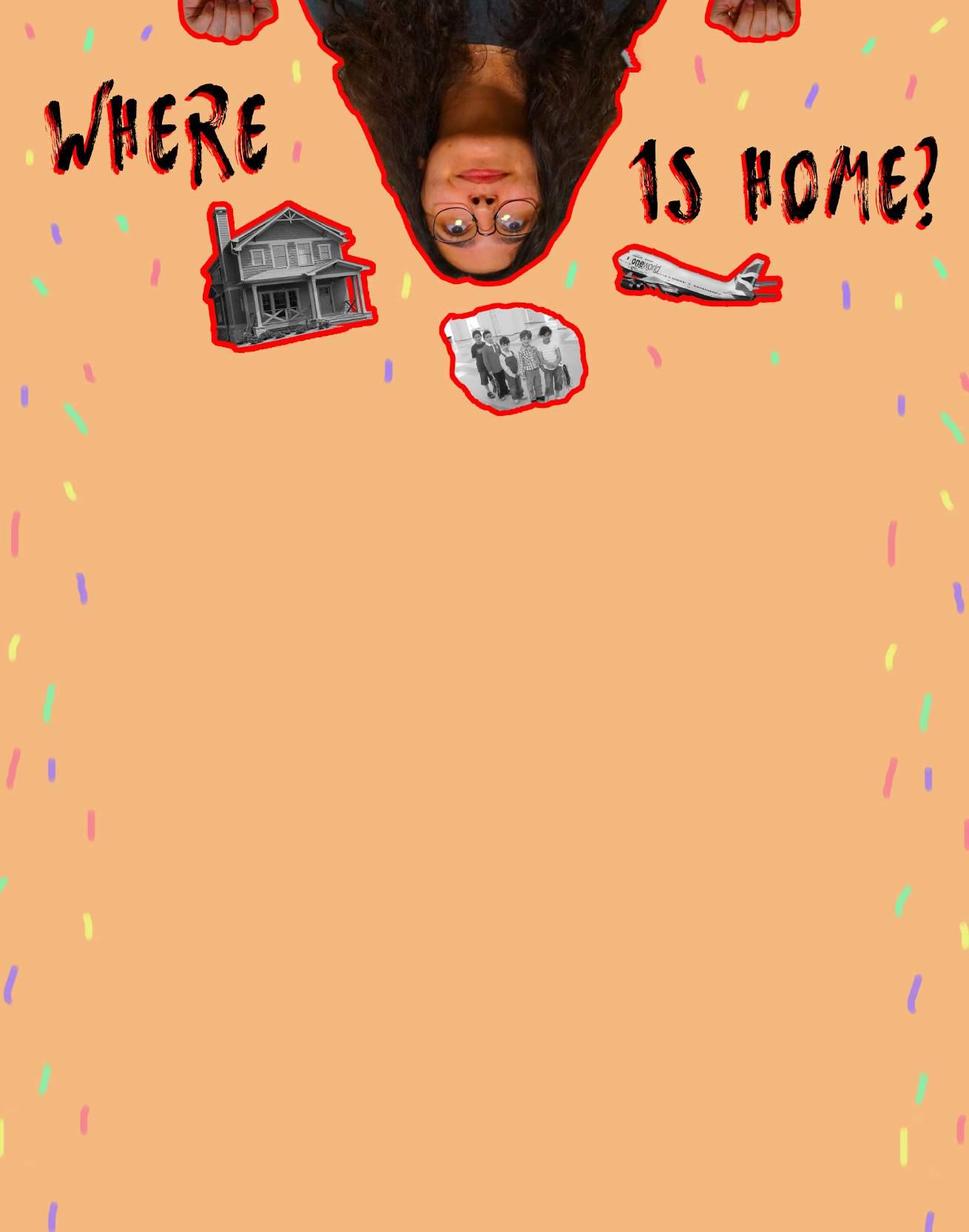
I am Palestinian by blood and Jordanian by nationality. I was born and raised in Qatar and I now live in Cardiff as an undergrad. I’ve been privileged enough to have been able to experience all of these places in so many different ways. As children, we innocently associate home as either where we’re from, the house that we live in, or where our family lives. I’ve lived my whole life as an expat in Qatar, so as a child I was always led to believe that I had two homes: the one I slept in every night in Qatar, and the many different apartments that I stayed in every summer in Jordan, to visit family.
As I grew up, I started to become more aware of the significance of the people around me. I reached that clichéd stage of life where I thought home wasn’t just an inhabitable place, my friends and family were everything that defined the concept of home. In the summer of 2014, I visited Palestine for the first time in my life and that was a monumental moment to my understanding of what home was. Even though I had never been there before, I felt truly connected to the land because of its importance to me. Throughout my whole life my parents instilled in me this idea of Palestine as a home that was birthed through my loyalty and admiration of the lost homeland. I had found another home within Palestinian
culture through the connection to my heritage and the importance of maintaining it in the eye of our world today.
Cardiff has played a big role in helping me decode home: what does it mean to me? Where is it? Should I even ask myself those questions? Leaving for Cardiff was the first time I had ever left my family to live somewhere apart from them, it was the first time that I had ever left the Middle East and it was also the first time I had a chance to start fresh —but with a head start from all the experiences life had to offer prior. Funnily enough, the first two months of being here I felt so excited that I literally had no time to be thinking about the home that once was. I was too focused on trying to make Cardiff a home for me, and finding a home within the people around me. Afterwards, I found myself starting to become homesick, as if I was giving up some of my home back then for my home now. This is where the label of home started to dawn as something that isn’t that important for me to define anymore, because it essentially embraces so many different types of feelings.
To go back to the beginning of this article, the one thing we all dislike is discomfort. Home to me is just a synonym to our sense of belonging. It’s about feeling comfortable and being a part of a whole. That sense of belonging can come from physical means such as knowing the directions to your house, or knowing where your mom hides the sweets or even recognising the particular scent of your uncle’s house. That sense of belonging can come from the incomparable, unconditional love that radiates from your family such as every cooked meal your mom makes, to every time your dad has dropped you off to a friend’s house, to playing Fifa for three hours straight with your brothers. That sense of belonging can come from a simple feeling that is triggered by a song you heard when you were young, or a place that was part of an anecdote you once heard. Home is where I belong, and I’m glad that I don’t just have one.
40 - TRAVEL issue 176
design by: JAMES BARKER

 By Josie van Jascheroff
By Josie van Jascheroff
Through the rugby world cup, Japan has received a lot of attention this past year. But have you ever stopped to wonder where exactly to go in Japan? Of course, Tokyo is the obvious first shout as the capital. While Tokyo hosts funky robot shows, cute cat cafes, and a whole lot of other sensory overloads, the country has so many other great destinations I would recommend. To experience more of the traditional side of the country, a couple of days in Kyoto are a must. There are many traditional hotels where you sleep on the floor called ryokans. Kyoto is also home to the infamous Geisha district, bamboo garden, and also the birthplace of Inari (vegan tofu sushi). But regardless of where you are, be sure to check out conveyer-belt sushi restaurants. They are both affordable and a great way to try lots of different types of sushi.
Another hot spot for food is Osaka. Its unofficial motto is “eat until you burst”, which I can whole-heartedly agree with! Whether your thing is sushi, wagyu beef, tempura or sashimi, Osaka will give you the best of the best and lots of it. Dotonburi is the famous area where restaurants are piled on top of each other, just waiting to blow up your taste buds.
And finally, a place I have never heard anyone mention before, Ishigaki. Ishigaki is one of the smaller islands in the Okinawa district and where mostly Japanese holiday. People rarely speak English here and you will get a real feel for the Okinawan culture, which is more tropical and laid back compared to the city life in Tokyo or Osaka. Be prepared for white sand beaches, fresh fruit, yam (purple sweet potato) everything, and the freshest fish you will ever eat.
By Megan Evans
Dubrovnik is a capital city that is a real gem situated in SouthEastern Croatia, Europe on the Adriatic Sea. Dubrovnik’s Old Town is extremely picturesque and a central point for a lot of shooting for films and TV such as Star Wars: The Last Jedi, Robin Hood and Game of Thrones, due to its historical architecture, surrounding green islands and bustling narrow streets. It is also part of the UNESCO list of World Heritage sites, an area chosen by the United Nations as having high significance and is a legally protected area. Its development was based heavily on the maritime trade and it has loads of amazing things to do, hence why it has seen an influx of tourism over the past few years, going from 1 million in 2017 to 20 million in 2018. People are recognising this location as unique as it has remained unchanged with Baroque churches, monasteries, towers and fortresses, cobbled streets and houses just to name a few. The Dubrovnik cable car allows tourists to see these breath-taking panoramic views of the Old City as well as neighbouring islands. There are so many refined restaurants, bars and shops, stunning beaches for kayaking and scuba diving, as well as good night life at Lazareti, with live acts, gigs and DJ appearances. The history is extremely enticing as it has a famous stone boundary encircling the city, Europe’s longest and oldest operating pharmacy in the world and the war museum on the old Napoleonic Fort showing its damage during the Croatian War of Independence. You can engage with so many interesting activities and it is a destination heavily underrated compared with other large cities across the world.
By Muskan Arora
India is a destination of diversity and culture and is the land that boasts one of the Seven Wonders of the World, the Taj Mahal. Ancient India was known as the “Golden Bird” due to its abundance of precious jewels and raw materials. The history of India dates back to the Vedas (holy transcripts). Over the years, The Mughals ruled and left India with picturesque monuments and an introduction to a different culture. The Red Fort (New Delhi), The Taj Mahal (Agra), Buland Darwaza (Fatepur Sikri), The Jama Mazid (New Delhi) are among many of India’s incredible landmarks. The British improved the quality of education for the middle and upper classes and renovated the Indian transportation system.

Over the last decade, India has been teeming with tourism from all over the world. Blossoming with street food and exquisite delicacies, living on a beach to nights in The Taj Hotel, it has a lot to offer to everyone visiting. It is the land of innovation and hard-work. Try walking in one of the crowded streets of Mumbai - I’m certain the fragrance of the flowers and sweet smell of Indian snacks mixed with pepper and chilli would be unavoidable. You will never experience anything like walking through the valley of flowers.
You will experience numerous different things when you visit the land of warmth, love and crowd.



issue 176 TRAVEL - 41
Music and The Environment
Think of the kind of happiness you would feel if I told you that your favourite band is arriving to your city! The excitement would build up from the moment you buy the tickets to the counting down of the days left, all the way until the much-awaited moment of queueing up for hours to get the front spot and sing and dance along with them. Right? But there are some things you may not have thought of. To reach your city, your favourite band will have travelled miles and miles, burning gallons of fuel in the process. While not many of us want to think about the environment when it comes to our favourite band, it is something you probably would want to think about when I tell you how much the creative industries pollute the environment. Recently, the band Coldplay made an official bold statement that they will not be touring this year. Reason? Environmental concerns. The band has made it clear that they will not be touring for their new album Everyday Life until they can offer carbon neutral concerts. Other major ticket artists like Billie Eilish, Annie Lennox, U2, Sting, KT Tunstall and Peter Gabriel have followed suit by addressing the environmental impact of carbon emissions that their shows have.
The impact that the music industry currently has on the environment is just as bad as any other industry, just that we don’t really think about it as much. According to researchers from the UK and US, the UK music industry produces around 540,000 tonnes of greenhouse gas emissions a year, with three-quarters of this being due to live music performances; the rest is caused by music recording and publishing. The price we pay for enjoying a live music concert is higher than we think; in order to estimate the total emissions, researchers scaled up and collected data from case studies across the industry. They found that 43% of greenhouse gases are produced by audience who travel to watch the live concerts, 23% are produced during live venue music events and 26% are produced during music recording and publishing. Music retailing, CD packaging and distribution of these records, equally caused a particularly high amount of emissions (just within the recording and publishing sector). However, the most common form of environmental damage during concerts is the littering. The aftermath of a live concert can be quite disastrous for the local grounds. Since it is not practical to keep an eye on littering during concerts, it is also not something you would want to take for granted. While environmentally friendly alternatives are being thought of, it is important to remember that laws and responsibilities are meant to be followed even when no one is watching. As found in a report, UK festivals produce 23,500 tonnes of waste every year, two thirds of which is sent to the landfill, leading to land pollution. So, make sure you do not contribute to pollution by littering at your next concert.
A recent study also suggests that streaming music could actually be dangerous to the environment too, as it could lead to at least 200 to 350 kilograms of greenhouse gas emissions. The study also adds that the energy required to stream and download digital music releases creates more greenhouse emissions than the plastics required to make physical records. In terms of live productions, playing music requires lot of power generators and sound systems to enhance the show and make sure everyone can hear everything. While the concert may seem perfect at the time, we also cannot ignore the other side of the coin which shows its effects on pollution.

While the damage has already begun, there are some green bands like Green Day, Pearl Jam, Moby, and Cloud Cult who have taken incentives to protect the environment. These bands deserve respect for taking such a step for the global wellbeing. Since vintage music formats are more environmentally friendly than streaming music over power hungry networks, you might want to consider going back to vinyls. Another option is to own copies of music, in whatever format and playing them whenever you like! Streaming an album over the internet for more than 27 times will probably use more energy used to produce and manufacture the same CD. Moreover, the electricity required to stream music using a hi-fi sound system is estimated to be around 107 kilowatt hours a year, which costs around £15 to run. Whereas, if we take the case of a CD player, it uses 34.7 kilowatt hours a year and costs around £5 to run. The sooner we correct our mistakes, the better future lies for us and the next generations to come.
words by: DEVIKA SUNAND design by: LOTTIE ENNIS
42 - MUSIC issue 176
The Punk of Today
Punk was a fiery dagger that pierced into the social boundaries of the 1970s; it ripped an opening for a new wave of non-conformity and social anarchism, catalysing an already rebellious youth into a new age of political dissent and defiance. People would take to the streets scrawling lyrics from The Clash’s I Fought the Law or verses of Sex Pistols’ Anarchy over any spare wall they could find to write a clear and visceral counter-cultural signal to tell those in power they weren’t doing enough. It was one of the forerunners in a long catalogue of genres that pushed the boundaries of music and of society whether it was hippies or punk rock or grunge. The paradigm of punk was truly saturated into the fibre of everyday life and into the attitude of popular music.
So, where did it go? If political disarray was the catalyst for a movement of musical rebellion, then where is punk’s renaissance? The 21st century’s political minefield of mishaps and injustices is rife. Still, our popular music culture is yet to truly reignite its rebellious flame. You could blame the aesthetic groupies. The ones that nicked their dad’s old, tattered leather jackets and dress up like a protester of the past; black eyed and built rather like a punk rocker. Yet, they succeed in only producing a fine punk effigy, an imitation that simply adorns a social media feed, an outfit for Instagram likes instead of one for the ethos of social anarchy.
Personally, I think music has over-diversified in style and has become so complex that it would be virtually impossible to unite the youth of today to a single political cause like genres of the past did. Hippies came straight into the limelight of society off the back of The Beatles’ later works and the sounds of Jimi Hendrix’s psychedelic Strat. When The Clash released London Calling, rock and roll had a monopoly on popular music. Yes, there were heavier (Black Sabbath) and softer (Fleetwood Mac) strands of it but it was all essentially encapsulated within this wider field we called rock and roll. So, when punk rock was born it came straight into the world from the off that was the popular music culture. It therefore obtained more listeners, and more heads turned to see what was coming than could possibly be achieved in the broken-up stomping ground of popular music.
I don’t think the punk ethic is gone or missing. It may not have the same cultural impact it would’ve had in decades past, but it is there. Rap has become such a new platform for grassroots rage and the musical voice for so many who are financially deprived. It stems back from the 90s and the era of N.W.A shouting “Fuck the Police”, breeding and weaving a level of civil disobedience that correlates to the ideals of punk into this genre. In the current scene, there are many artists with that ‘punk ethos’. Jpegmafia does a good job at this. Or just watch Slowthai’s performance at the Mercury’s this year, romping around the stage kicking a decapitated likeness to our dearest daft-haired Prime Minister like he was playing a six a side down the local astro. The anarchism that holds is punk if nothing else. Rap can really hold the grit and the bleakness of reality of this time, in the same way that it used to come from the mouth of someone like Jim Morrison or Kurt Cobain. Kendrick Lamar’s To Pimp a Butterfly is such an honest and dark portrayal of some of the harshest
As far as rock and roll goes, the punk rockers feel a lot like style over substance nowadays. There’s a lot of imitations of what has been, the knock off Gallaghers and the wannabe Johnny Rottens are leaving a big void in music that is new and original; something that takes the feral nightmare that is politics today and makes it into an inspiring piece of musical protest. The closest thing that rock has to offer at the moment is probably Idles. The Bristol group themselves promote such progressive messages through and any comparisons to punky predecessors seem to not only be grating on the band themselves but very superficial too. They sound like punk, but the anarchism isn’t quite there.
But these morsels aren’t having the impact that they perhaps should be having. I think our youth of this generation can’t be mobilised stylistically in the ways young people were in the past. For music and the punk ethos to fully follow through into this political era there need to be some cross-genre resistance to authority. There need to be figure heads from every genre promoting the same values, the same messages, but in music that is creatively diverse and original and fresh, not a rehash of the rebellious music of the past.
issue 176 MUSIC - 43
words by: CRIAG STRACHAN design by: LOTTIE ENNIS
JOSH

Genre fluid?
The term ‘pop music’ is overused and wildly indescript. Society tends to bash pop music and charting artists for pertaining an ecosystem of mindlessness and simplicity. Not only is this blanket statement unfair and condescending, but it also seems to often miss the point that pop music, by definition, is not rigid. As society moves on and advances, so have people’s music tastes. Granted, there are always prevailing trends, but that has always applied across history. Where the most popular music of the 80s leant heavily on the use of synthesizers, the 90s was equally dominated by the rise of heavier-produced reverbless and soulless piano. Within more recent years, we’ve seen the rise of pop-rap, teen-pop, electronic-heavy pop and, mostly recently, sad-girl bop pop. What these have in common is very little; in terms of sound and general song formulation, they bear almost zero resemblance. The only thing they do share is simply being popular, which I’d argue isn’t enough to warrant being justified as a genre in its own right. However, and I’d argue more fortunately, we’re beginning to see movement across the whole of music of artists who are starting to make the music that they want to make, regardless of whether or not it can be labelled or compared to anything familiar that has already been created.
Where the aforementioned sub-genres of pop have each been categorised in attempts to label them, there has been a notable shift, especially within the last year, in artists taking steps outside of their comfort zones in shifting sounds and approaches to creating new music. Realistically, you don’t have to look any further than the insane rise of Billie Eilish; someone who, when questioned on what genre she would best align herself with, responded swiftly with a literal “ugh”. Eilish has always been very vocal that her music shouldn’t be labelled and pigeonholed; the music she makes at certains points in her life is simply reflective of her contemporary feelings and emotions in the style she feels is right at that time. Beyond that, it doesn’t need to be further identified.

In a piece last year, I spoke of Kacey Musgraves’ latest album, Golden Hour, in which I deemed it a ‘genre-bending masterpiece’. Musgraves’ sound prior to this album was wholeheartedly and unmistakably Nashville; but Golden Hour took her music in an ethereal direction that I can’t really relate to anything else. There remains something innately special about the diversity encapsulated within that album, both sonically and in terms of true breadth of songwriting. For me, this album was my first experience of an album that was seemingly untethered by restrictive genre lines that have whipped artists into submission across history.

Something that’s certainly noteworthy is the timeline of this change; it certainly wasn’t overnight, nor was it something that was inexplicable. Frankly, this shift in artists’ ability to pursue new sounds outside of their regular sonic-spheres has been mostly enabled by one relatively new(ish) addition to music: streaming. Most of the old traditional genre lines were often dictated by groupings associated with established mediums, specifically, radio. Where people consumption of content was previously limited to stations that tended to play particular genres, people whose tastes were similar tended to be drawn to them. Then, as radio became the dominant, and accidentally restrictive,path through which most listeners were accessible, record executives were quick to nudge artists into creating content that fit within the genre radio bracket. However, as streaming has allowed people to become deliberately picky with the music they like, it’s becoming increasingly common for people’s tastes to span across a wide gamut of genres. This in turn has created a whole new generation whose listening habits are more likely to be self-imposed and often supercede traditional genre lines. This creates a contentless vacuum, through which artists have been able to bridge previously impassable trenches and create something truly new, yet equally as accessible.
So, in an age in which accessibility to new music has never been higher, we find that more and more artists are creating music that spans across the genres of old. So, at the breakdown and the introduction of new mediums through which music is accessible, we’re equally beginning to see these traditional genres fade away too. In terms of creative freedom of artists, it’s never been better. Moreover, the arguments that the occupation of this middle-ground resulting in the creation of a monotonous ‘uni-genre’ are unfounded and miss the point. By alleviating the pressure through which artists feel as though they have to maintain certain styles to retain listeners, they are more inclined to make their music more personal and varied, and therefore interesting.
44 - MUSIC issue 176
words and design by:
ONG Imag e source: LarsCrommelinck
Imag e source:GlennFrancis
I m a g e
Source: KristsLuhaers
This year, it seems as though one Cardiff band has really taken off; as the year ends, Boy Azooga can say they’ve played at Glastonbury and supported both of the Gallagher brothers —having played Cardiff Castle with Noel Gallagher this summer followed by a support slot at the O2 arena for Liam. The release of their new track O Silly Me which featured on BBC Radio 1 is only more assurance that this is a band on the rise. The new track, which features a more sincere and less complex approach to Davey Newington’s thoughts on worry, adds a different element to their already broad range of songs from their debut album.
Their first album, 1,2, Kung Fu!, is a dynamic and complex 11 track album; written and recorded by Davey, and produced by his friend Dr Ed Boogie. It features their well received singles Loner Boogie and Face Behind Her Cigarette, which are both upbeat with catchy and lively melodies. Also, featured are more dreamy and heartfelt singles, such as Jerry and Waitin’, complemented by wacky Taxi to Your Head and Losers in the Tomb. After the album release, they also released a brilliantly composed cover of Do the Standing Still from Welsh band, The Table, which is a fan favourite live.
Boy Azooga are a band that do not stick to a genre or the norm and you can sense their experimental approach from any of their tracks; taking influences from Ty Segall, Outkast and The Family Stone, there is a combination of heavy bass lines, electronic melodies and relaxed guitar chords topped with an array of almost space-like effects, quite a difference from Davey’s initial love for grunge rockers Nirvana. When the band initially released their single Face Behind Her Cigarette in 2017, people took notice to the complexities of the work they produce, and the band had their audiences fooled for thinking they were a more experienced band. However, Davey certainly has a musical background. His parents both were members of the Welsh National Orchestra, so naturally he began composing from an early age, this advantage perhaps explains the diversity and musical ability bursting from his songs. After assuring himself he would form Boy Azooga at the Green Man Festival by setting the goal of playing there one day, the band went on to achieve this shortly after on the following year. From then onwards, they have only gone on to play on bigger stages including a TV appearance on Later with Jools Holland. Davey is also known for supporting Cardiff’s music scene. Being local himself he played an acoustic set for the sadly unsuccessful Save Gwdihw campaign. Boy Azooga joined Al Moses and Buzzard Buzzard Buzzard plus many more Cardiff bands in a rather indie revival of unique sounding bands from the Welsh capital which have received positive attention recently.


Like a lot of bands, seeing them live only makes them better. There was a gig last year at O’Neill’s which can only be described as a party where, at the end, fresh roses were dished out to gig goers. All members of the band are talented musicians, and an array of effects and instruments as wacky as a giant xylophone are mastered live on stage. The band’s happy-go-lucky stage presence is brought into by the crowd making for an electric atmosphere. Davey has described his desire for a “seamless gig from start to finish” and it’s fair to say he achieves this, and with a new album in the pipework their gigs can only improve with a wider selection of tracks to choose from, bolstered by their well produced covers. One thing is certain though, a headline gig in Cardiff is special, and will remain like that no matter what the future has in store.
A lot has changed since the release of the band’s first single but they remain their unique selves. The next album will feature more input from other band members who Davey describes as very talented musicians in their own right, a contrast to their debut album which was almost entirely written by himself. Boy Azooga are definitely ones to watch for next year, time will tell if they ever manage to be chart-toppers but their ability to craft unusual diverse music will no doubt remain, and 2020 only promises to be another successful year for the band.

issue 176 MUSIC - 45
words by: JOE CRESSWELL design by: DOMINIKA MATUSIAK
















46 - MUSIC issue 176
Art Vs. The Artist
words by: KATE WALDOCK
design by: ORLAGH TURNER


michael jackson image by: LUIZ FERNANDO REIS VIA FLICKR https://bit.ly/3aJGPEi
chris brown image by: EVA RINALDI VIA WIKIMEDIA COMMONS https://bit.ly/36xEw3D
r kelly image by: LEAN OP VIA FLICKR https://bit.ly/2S2ctEf
There is no sliding scale to the condemnations of celebrities. Whether it’s the ancient tweets of Kevin Hart, or the sick actions of XXXTENTACION, on the internet, no matter what you have done, you’re simply #cancelled. This phenomenon ‘cancel culture’, is the millennial’s favourite internet pastime. When Twitter pronounces an artist #cancelled, the world is expected to avoid their music, and any previous appreciation for them is immediately shut down. Recently the music world has been embroiled in constant conflict: from R. Kelly’s creepy cults, to the very recent backlash of Liam Payne’s new song ‘Both Ways’, in which he fetishises bisexual women. The actions of artists can be questionable at best, and abominable at worst. So is it okay to separate the art from the artist, especially when that one song is just so good?


Katy Perry is an artist that consistently gets under my skin but she has also been the focus of a lot of criticism in the past. In 2012, Perry said that she wanted to skin Japanese people and ‘wear [them] like Versace.’ In 2013, she casually appropriated other cultures by dressing up as a Geisha, and the fact that she hasn’t recalled ‘Ur So Gay’ has frustrated me more than my A-Level exams. This is before I have even begun to talk about ‘I Kissed A Girl’. So to make it clear, I really just don’t like Katy Perry as a person. But as an artist; ‘STARSTRUKK’ and ‘Hot and Cold’ are bangers that will consistently make it onto my speakers at a pre-drinks. My experience with Katy Perry mirrors that of millions of music fans across the world. It’s the new ‘Guilty Pleasure’- a criminal interest in your favourite dodgy musician. Obviously Katy Perry’s misdemeanours are much smaller than other artists. XXXTENTACION’s music has touched the souls of many rap fans, and the artist himself made ‘mumble rap’ mainstream. He literally opened the gates for a whole new sub-genre to enter our charts. However, he also opened fans up to listening to artists with a more than criminal past. Generation Z fights back against the millennials, listening to the artist despite their personal actions. When XXXTENTACION died, many fans, myself included, breathed a (very conflicted) sigh of relief as they realised they could listen to the rapper in the knowledge that ‘he’s not benefiting from us listening, so it’s okay to like his music’. ‘Jocelyn Flores’ could be played on repeat in the comforting knowledge that the awful person wasn’t gaining profit from it.
Michael Jackson’s fans are torn in half over the accusations levelled at the late singer. The Simpsons recalled the episode featuring the artist, and it won’t even be available on Disney+. Big corporations make the decision to rid themselves of both the art and the artist. In the critical eyes of the public, a company’s safest bet is to remove the art entirely. Spotify
removed R. Kelly’s music from playlist algorithms, as a way to show the public that they didn’t support him as a person. The art these musicians have made comes from a sick person. Their music is a reflection of themselves, and by listening to it we feel that we are supporting that person’s actions. By listening to that music, we are giving these artists a platform and a status in culture above our own, yet by shunning their art we take the power back, and give it to the victims of the musicians such as Michael Jackson, R. Kelly and Chris Brown. It can be incredibly easy, too. T.I.’s recent open admission that he checks his daughter is still a virgin every year disgusted the world, and it has been so incredibly easy to shun his music for me, because to be quite honest, his music was never good to begin with. It is so much harder when that musician is beloved to so many.
Perhaps it’s the thought that these artists are still earning money from our listening that makes us uncomfortable. But when you remember the sheer amount of people; producers, musicians and managers alike, that put something of themselves into the music you listen to, it makes that song not the sole property of the artist. That art already belongs to at least three people, before it has even been released to the public. Once that music is out there, however, millions of people have listened to that song. That song has been interpreted slightly differently by every single person, and means something different to each and every listener. Yes, technically, it’s the property of the labels, artists and producers, but it also becomes yours. Almost every song in the charts is produced by the same company, but we don’t shun every single song on that record label’s roster, and I can guarantee with 100% certainty that at least one person working in that record label has a less than perfect record. Many of these songs we love by these artists we hate don’t simply belong to the artist. We are talking about mainstream music here, so 90% of the music isn’t even written by the debatable artist themselves.
Separate that art from the artist. At the risk of sounding militant, download that song you like illegally. Play it til you hate it, free of streaming services that will give back to the artist you know is in the wrong. We live in a world marred by terrible deeds every day. The least you can do is put your middle finger up to the CEOs and the rich musicians, by downloading that music through backchannels, and listening to that art without the constraint and ownership of those who are powerful. Better to make that music your own, free of their influence, than resentful of your guilty pleasures. But always be mindful of the place that music came from and its controversial creator. The most important idea to take from this is that you give yourself - the public - the power, and take it away from those who shouldn’t have it.
issue 176 MUSIC - 47
KOKOKO!
I asked Makara Bianco, the group’s frontman, how he started getting into music. He explained how, as far back as he can remember, he was always making music: “In my neighbourhood I would go to Rumba rehearsals (a popular style imported from Cuba). I would sit there, and one day I started to sing like I had been rehearsing myself, and the older guys couldn’t believe it.”
Boms told me he always made music after school: “The first thing I remember is seeing a guitar and wanting to touch it. Sometimes I would go up to one and touch it and have to run away because I knew I could get beaten up for it.”
A chat with KOKOKO!, a fiery Congolese collective hailing from Kinshasa are seemingly a band from the future – stylistically fluid, with countless musical influences ranging from afrobeat to electronica; instrumentally they’re a bricolage, sporting makeshift instruments from repurposed junk like bleach bottle percussion and scrap metal vibraphones. This ultra-contemporary sound is topped off with a pure punk spirit, reflecting the DIY sound of their homeland, and electrifying live sets.
Their music is an exhibition of Kinshasa, not only importing the music of Congo but fully embodying the vibe of an exhilarating creative city. A place, they tell me, where music is far more than a pastime, but key to survival. “The chaos, everything’s noisy. The evangelical churches have super loud sound systems and generators that let them stay loud even when the power goes off. Even the street sellers have noises, like the shoe polish guys who have two glass bottles you can hear from far away and megaphones with loops are used to sell mobile phone credits.” Guitarist Boms Bomolo tells me KOKOKO! is “like trying to organise this chaos into something more musical.”
“We didn’t have the idea to make our own instruments at first, it came out of necessity.”
Makara splits his time between the band and running an underground nightclub back in Kinshasa. Xavier Thomas, a Belgian musician brought in to amplify the




project, spoke about the “pure punk energy” of Makara. He “sticks his mic into the speakers, with loads of feedback, and a very overdriven sound. It’s an energy he previously couldn’t put a name on as there’s no punk scene in Kinshasa. It is one of our identities but we are many other things as well.”
Xavier told me more about the other creative scenes in the city. “There are plenty of performers who do body performance and contemporary art. They perform in the crowd at our gigs and people stick cash on their forehead and hats. There’s a lot of imagination in the city, which is how people get away from their everyday lives. There’s a suburb where people pretend it’s Paris: they’ve adopted the Parisian street names – they even call each other pretending to be stuck on the métro.”
48 - MUSIC issue 176
“ ”
They switch their reality sometimes, people are just super creative with the way they walk, dress and sound.
words by: JAMES MCCLEMENTS design by: ALESSIO PHILIP GRAIN
All the tribes in the Congo have different music, and once we mix all our influences it becomes poison. It’s our poison.”
“
words by: EMILY RICALTON design by: DOMINIKA MATUSIAK
‘Heroin Chic’ A Movement that Changed the Appearance of Fashion
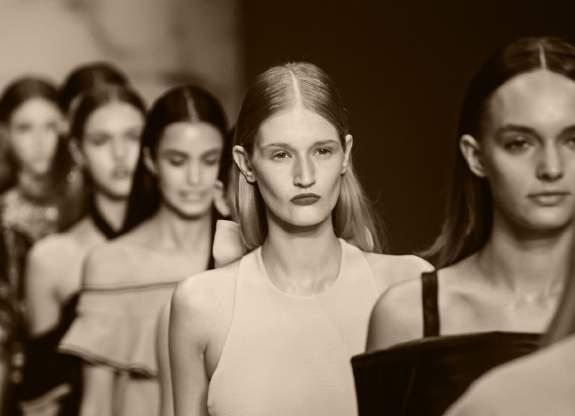
TRIGGER WARNING: This article contains and discusses themes related to eating disorders. For any help or advice needed on the issues discussed, relevant links can be found at the end of the article.

The nineties were a time of change, difference and experimentation.
From Britpop to Grunge, the decade was definitely full of excitement – something that allowed young, repressed teens to follow movements that, at the time of their creation, were almost revolutionary to their conventional society.
These subcultures allowed teenagers to represent their image, something which defined them and made them unique to the barriers implanted in their surroundings. Subcultures gave teenagers freedom, granting them life-long friendships and family that they could relate to through talents, hobbies and interests. It was a rebellion against the structure of society.
However, as great as this may seem, subcultures were vital for the actions, images and behaviour of impressionable teenagers – ones of which weren’t fully experienced or developed within life. You see, subcultures also provided a route of investigation that allowed the youth to not only experiment with the arts, but also recreational drugs that would later abuse the image of their pristine and hopeful appearances.
Heroin Chic, unlike mentioned before, was actually a movement and subculture for high-end and high-quality models. It was a particular image that inspired and became popular throughout the mid-1990s fashion movement. Even though it is referred to as an image, many clothing consumers and beauty fanatics continued to follow the trend after it’s popularity; allowing it to
become more of a subculture of fashion, rather than a recent season or development of style. Having said that, the subculture itself was still defined by a set of features, some of which were very similar to Grunge: pale skin, dark circles under the eyes, an abnormally slim frame, dark red lipstick, straw-like hair and a prominent bone structure. The image, to say the least, was something that was shocking, upsetting, yet very familiar to nineties culture.
As the name suggests, Heroin Chic transitioned into fashion due to the popular use of heroin throughout this period of time. Even though this may seem shocking now, it definitely was a common party drug at its time of release. With films like Trainspotting being released in this decade, it was obvious that the love of heroin was going to increase, especially with artists, like Kurt Cobain, openly discussing their usage of this fatal substance.
With Heroin Chic taking inspiration from the examination of drug culture, it was undoubtedly going to draw upon elements of Grunge for the inspiration behind its style. From slip dresses to heavy make-up, Grunge was Heroin Chic’s first point of inspiration, focusing upon stars like Courtney Love to recreate iconic floral patterns, dark colour schemes and oversized fits that were symbolic of this nineties revival.
As you can probably tell, Heroin Chic was doomed from the start. Not only was it criticised for its promotion of substance
BEAT - https://www.beateatingdisorders.org.uk/
abuse, but it also glamorized the upsetting problems related to eating disorders.
Even though this may appear to be a controversial topic, here at Quench Fashion, we believe it is important to discuss the history and, as you could call it, mistakes of the fashion industry. We like to touch upon the hidden topics of fashion, calling to light the changes that need to take place in order to make it a sustainable industry. Fashion is full of damaging impacts that have drawn upon the negative aspects of our society. As quite noticeably mentioned, Heroin Chic was definitely one of these detrimental themes. From photoshopping images to the online promotion of diet substances, Heroin Chic has changed the way we think about societal beauty and our very own body images.
After the movement was made famous in the 1990s by a Calvin Klein campaign and Corinne Day shoots, Heroin Chic was explored by models such as Kate Moss, Naomi Campbell, Jodie Kidd and Jamie King. The selection of models showed off a waif appearance, resembling essences of an unhealthy and uncared for aesthetic. Attributes of which hadn’t been desired throughout society before, something that hadn’t exactly been seen within previous catwalks.
To read the rest of the article, scan the QR code:
Cardiff University’s Advice - https://www.cardiffstudents.com/advice/health-and-wellbeing/eatingdisorders/
issue 176 FASHION & BEAUTY - 49
Poppy Fleur: An Interview with Cardiff’s Up-and-Coming Entrepreneur
words by: IZZY WACKETT design by: ESTHER LOI
Poppy Elliot, or more commonly known by her avid customers as Poppy Fleur, is a third year Cardiff University Student. The owner of the outrageously cool nail salon, Poppy Fleur Nails. She provides vegan and cruelty free insta-worthy nails, which will make all your mates instantly jealous of your new pamper.
At the ripe age of twenty-one, Poppy started her business in August 2018 from home on her mobile phone, where she mostly styled her friends and fellow student’s nails. By July 2019, she had created her own Fleur Studio, located in Castle Emporium, Cardiff City Centre. As well as owning her own studio, Poppy has massively expanded her online business, whereby her main point of advertising is on her Instagram account; @poppyfleurnails, which boasts over 6,000 followers.
With prices starting at £16 for gel nails to a full set of acrylics for £35, you can get pretty much get any design you wish, ranging from glitter wonders to delicate nail art. If your student budget allows you to treat yourself to a manicure they last for weeks and are definitely worth the price!
Getting through university is challenging enough, and managing your own business may be intimidating. In order to keep up a successful business, being organised is crucial. Like most students, I struggle with managing my workload and social life, yet, Poppy makes it seem effortless. We were fortunate enough to bag ourselves an interview with the budding entrepreneur and asked her how she manages her workload, and her top tips for staying grounded.
QUENCH FASHION: What is the most challenging aspect of running your own business and managing university work?
POPPY: The most challenging aspect is definitely having the motivation to complete university work, my priorities lie strongly with my business. However, I know it’s so important to complete my degree.
QF: How do you keep yourself organised?
POPPY: I keep myself organised by having around 50,000 to-do lists on the go at all times! My brain is naturally quite chaotic, so my life being all over the place is never really too much of an issue. It does help however to use a physical diary to keep everything in one place.

QF: When did you consider your nail salon a success?


POPPY: Success is really hard to define, I’m one of those annoying people who is always thinking ‘what next’ and ‘how can I make this bigger?’. At the moment, I have 4 girls working with me, we work really well together, we are consistently busy and have a lot of fun together. At the moment, that is successful to me.
QF: What is the biggest factor that has helped you be successful?
POPPY: Support from my friends and family has been so helpful! My main source of support however, is my boyfriend Harry. He is kind and my number one fan. Of course, I also believe that putting in an extreme amount of effort behind the scenes, late nights and being consistent has always been important.
QF: Owning your own business this early on is pretty cool and inspiring, but what are you most proud of?
POPPY: I’m most proud of my girls who work with me. Under my training and their own practicing, they have become such good nail technicians!
QF: Who inspires you?










POPPY: I’m inspired by all women, their strength, tenacity and grace.
QF: Obviously, having the spare time to manage work and university life is vital for our health and mental wellbeing. For many, this may be exploring the secret wonders of Wales, whilst for others it might involve letting loose on the dance floors of Cardiff’s many clubs. What is your ideal way of spending your spare time?
POPPY: I mostly spend my free time pottering around my house trying to keep up with all the things that seem to pile up when I’m busy working. Chilling at home is my favourite way to relax, other than that I can be seen walking along the beach in Penarth. I find water always calms me and clears my head.
QF: What does the future hold?
POPPY: I hope to grow the business more and be able to affect real change by working with charities and other local businesses. We want to educate, grow and be a good example to other women wanting to start a business.
QF: What is the best piece of advice you have received? And can you give us some advice for any potential business owners at university?
POPPY: Be you. Be consistent. Be kind. For all those wanting to start a business, make sure if you are the face of your business like I am, to be yourself. Ensure you run your business in a way that is authentic to you.
50 - FASHION & BEAUTY issue 176
Smart Fibres and Biotech – The Future of Fashion
As people become more aware of unsustainable clothing brands, the fashion industry needs to consider an incentive for the development of smart fibres and biotech.
It is imperative that smart technology becomes used more frequently within the fashion industry, as otherwise, the environment may be at risk of permanent damage. The industry is one of the major contributors of pollution and accounts for 10% of the global carbon footprint. It is also the second greatest pollution of local freshwater. As well as this, toxic chemical use and textile waste have a local and global impact on the environment. This needs to be recognised more. The fast fashion industry is at the root of this pollution and needs to be held to account.
This industry often uses a high speed, low-cost production in order to meet demands for a new collection, which results in subsequent environmental corners being cut. As well as the increasing demand for fashion items, the whole process results in an unsustainable consumption and production of such garments.

Smart fibres and textiles are a type of material that reacts to the user’s surroundings, for example: temperature or lighting changes. They can also have electrical elements in them such as batteries. This may be the stimulant needed to push for an environmentally friendly and future focused fashion industry. A reduction of the industries carbon emission may be possible due to smart clothes, consumer interaction and partnerships with other industries. This has been addressed at Ecosessions in New York. This is a series of conferences discussing change within the industry, designers and citizens in order to connect them globally.
Levi Strauss has begun emphasising sustainability by discussing the origin of their materials and how they can be recycled into other textile or fashion items. The iconic Levi’s jeans are now made with recycled plastic bottles that have been spun into them.


A variety of aspects in the fashion industry could be made more sustainable by smart textiles, furthering the industries commitment to both the environment and animal welfare, two issues that the fashion industry has previously had a turbulent relationship with. Digitally enabled textiles may be able to replace items of clothing that have relied on materials sourced from animals, subsequently benefiting the environment and concerns expressed by designers and consumers. In addition, benefits such as heart rate monitoring and a stable body temperature can be achieved through smart fibres and textiles. Pailes-Freidman, the founder and principal of Interwoven Design Group, has suggested that these smart fibres may be developed to adapt to the issue of climate change, with the potential to protect individuals from extreme environments that may be present in the future.
However, the process of developing these ‘sustainable’ smart fibres is considerably unsustainable and thus the future of this innovative wearable technology poses many challenges. These challenges include making the production of sustainable fibres environmentally friendly, as the high levels of technology used in the production process release high levels of carbon dioxide into the atmosphere.
Despite this, there is the potential for environmental integrity through collaboration with other industries, such as bio-engineers. It is crucial that consumers encourage the change that is coming from the development of smart fibres, pushing for a sustainable and future focused fashion industry. With consumer encouragement, the production of smart fibres has the possibility of becoming sustainable itself and, as a result, the whole movement will have positive and environmentally friendly backing from both designers and consumers.
Support from the public is not the only concern regarding the smart textiles industry. Camirais is a company focused on converting waste textile fibres into materials, namely ‘Advantage’ and ‘Cara’. Issues facing companies such as Camirais include arguments from consumers about the perceived quality of garments and the ability of designers to adapt material that may not seamlessly work.
The biggest impact of wearable technology has been in the sportswear sector, allowing individuals to maximise their productivity and efficiency whether they are doing yoga or going for a run. These connected garments are increasing in prominence within the fashion industry and are set to go mainstream. For example, Supa, a fashion tech start-up, has created a sports bra with a variety of biometric features. Retailing at $60, the sports bra is equipped with a heart rate monitor and artificial intelligence allowing it to keep track of workouts.
There are a variety of bio-metric fashion companies that are disrupting the fashion industry. This includes Thync, who specialise in Biometric sensors and produce smart watches and accessories, as well as OMsignal, who create smart apparel. Over 100 deals and a combined total of $1.9 billion in investment was achieved by 40 start-ups including the 3 previously mentioned, illustrating the potential within the biotech industry to make an impact.
It is apparent that smart fibres and wearable biotech are making their way into the mainstream fashion industry and improving sustainability. This is illustrated by the variety of brands now encouraging more sustainable fashion habits and the increase in consumer demand for the fashion industry to quit cutting corners. If fashion doesn’t become ‘smart’, the consequences are going to be catastrophic and both designers and consumers are beginning to recognise this.
issue 176 FASHION & BEAUTY - 51
design by: ESTHER LOI
HIGH STREET VS. VINTAGE CLOTHING
For the middle-aged generations of today’s society, it may be slightly disconcerting to witness the youth rocking many of the same styles as they did back in the 80s. Their daydreams of the new romantics in their denim, corduroy and eccentric patterns can be brought to life whilst walking down the High Street. The vintage clothing market has boomed and the fast fashion industry is taking a hit in consequence. But why is this?
Vintage clothing is unique and often a lot more expressive and interesting. The sustainability of reusing and recycling is on the rise as the younger generation are recognising the issues of production in high street stores. Equally, the quality of the clothing is unparalleled in today’s fast fashion with the production process using better materials to make products with more care. Those fits were made to last… and they have. Like the ghost of a Christmas past, they’re tapping on the shoulders of brands such as Boohoo and Forever 21, not ready to be forgotten.
Kilo sales are a recent trend which appear to be taking the UK by storm, offering a new and interesting way to get your vintage fashion fix very cheaply whilst having a varied choice. Companies will transport lorries upon lorries of clothes around the country to set up in large halls for students. Kilos often go for £15 and depending on what you ram into your binbag, you can get some absolute bargains. The novelty of this has completely taken off this has inevitably taken some of the heat away from fast fashion high street brands, as people fill their wardrobe with second hand.
However, this shopping experience is unique and some may say it can be described as stressful. The perks of shopping in your average high street store is far too desirable for many to willingly give up. The atmosphere is clean and the shelves are well organised. The air smells sweetly fragrant and you can guarantee that the clothes you buy have not been worn outside of the shop. This is something that many shoppers of today are reluctant to let go of; they don’t want to be digging around other people’s old clothes in a messy and stressful environment.
Having said this, there are many cleaner and more organised alternatives to second-hand shopping that act as a worthy rival. Charity shops are on the rise and are becoming much sleeker and easy to shop in. Although not all of their clothes are vintage, they are still cheap, sustainable and you can make a muchneeded contribution to charity at the same time.
When you’ve taken the time to really get into the charity shopping experience, the bargains will come flooding in! However, these shops tend to be run by older people, and arguably one of the reasons why young shoppers still go to fast fashion high street stores is because of their trendy atmosphere, the music blasting, and the young people working behind the till.
But this has been rivalled by the second-hand vintage shops which are now offering edge and style. The theme is less unwashed with more chic quality clothing. A local vintage store in Cardiff city centre called Flamingos Vintage is a recent addition to Capitol Shopping Centre that has popped with success. Despite it only being open for a couple of years, it has already gained over two thousand followers on Instagram and you can keep up with their regular posts of new deliveries and outfits they’ve styled. The shop offers everything you could look for in a high street store with its edge, style and easy shopping experience. The layout of the store makes it easy to navigate and browse and the clothes are truly wearable. Flamingos has even been recognised by Style of the City Magazine as one of the top 20 independent retailers in Cardiff. With vintage shops like Sobey’s opening branches across the South West in Exeter, Bristol and Cardiff, it’s clear that the popularity and demand are increasing.
More people are in the market for good quality and sustainable clothing. Equally, with eco-awareness ever on the rise, the younger generation are looking for sustainable alternatives that cause less harm to the environment. Recent events such as the threatened bankruptcy of Forever 21 put into perspective how much pressure is being put on the high street fashion industry; by being forced to close 88 stores in the US, all UK stores, and take out a bankruptcy loan of £350 million, it’s clear that increasing environmental awareness is taking its toll. Founded in 1984, it seems unexpected for such a major retailer to take this dramatic turn, and with the increasing popularity of the vintage industry, it may not be such a stab in the dark to point fingers. It could be argued that they weren’t keeping up with the retro and vintage styles that are popular in today’s clothing and that’s what has caused the lack of interest.
Contrastingly, shops such as Urban Outfitters have added a significantly large amount of reworked vintage fashion into their stores, supporting the cause of sustainability and eco-awareness. The general vibe of the shopping experience is extremely retro, and a
52 - FASHION & BEAUTY issue 176
words by: SASHA NUGARA design by: KATIE MAY HUXTABLE digital photography by: CHARLIE TROULAN film photography by: ELLA CUSS
lot of the products they sell are 80s and 90s themed. Urban’s significant popularity in the UK is doing work to promote and popularise the trend of vintage fashion, whilst accommodating to the needs of the high street market. This has caused other high street stores to incorporate these ideas into their products and designs such as Bershka and H&M, leading to a decline in high street styles.
Topshop have also included a collection entitled ‘Boutique’ which they describe as “straddling two of their favourite fashion decades”. It includes all you would expect from the vintage market from bell bottoms to jumpsuits, heavy knitwear and bright colours. The company have clearly found it necessary to include a collection like this in order to keep up with the market and the demand of today’s shoppers. On the other hand, shops like Primark who represent the epitome of fast high street fashion are also doing extremely well: in January they had announced that their sales had grown by 4% in the last year. People love the convenience of cheap prices and the ability to constantly refresh the wardrobe - something that is not done so easily at the expense of vintage. It could be easy to argue that Primark’s success is purely due to their ability to drive down their prices incomparably, and as long as there are people who rely on those prices, their success will continue.
So, is vintage fashion a phase? Are the fast fashion high street stores struggling to compete? Due to the rising popularity and the apparent increase in demand, I believe the vintage fashion is growing strongly and competing well with the high street. Fast fashion stores are being forced to incorporate vintage ideas into their lines in order to keep up and stay relevant. It looks like the sustainable clothing is taking a win for now, but will it outrun fast fashion? Probably not. Will vintage keep the high street on their toes? Definitely!
TURN OVER FOR HIGH STREET x VINTAGE FASHION SHOOT
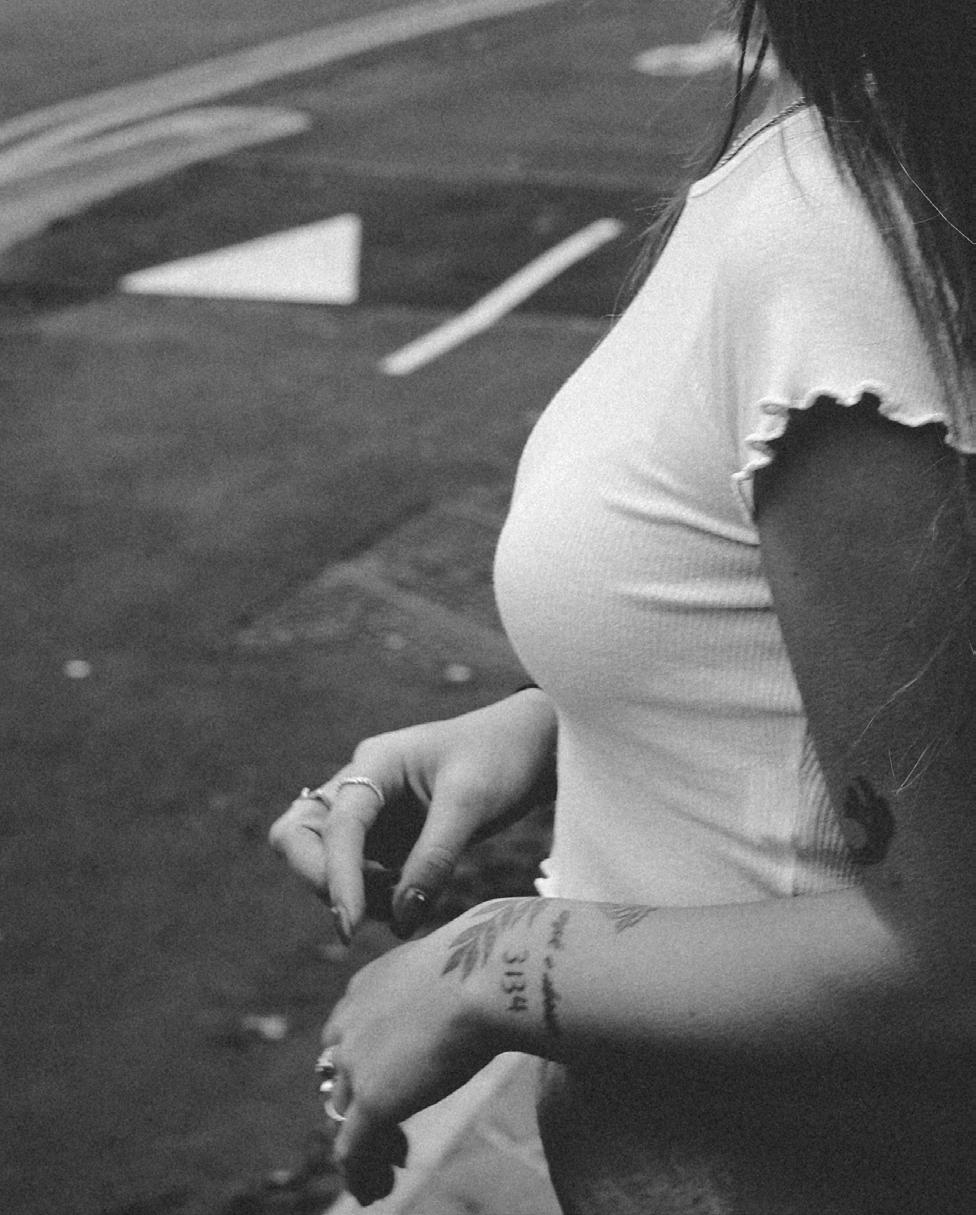


issue 176 FASHION & BEAUTY - 53
HIGH STREET LOOKS

54 - FASHION SHOOT issue 176
MODELS:
Denise Dogan
Meg Burgess
Emily Brounger
Rhiannon Humphreys

issue 176 FASHION SHOOT - 55
design by: KATIE MAY HUXTABLE

digital photography by: CHARLIE TROULAN
film photography by: ELLA CUSS
56 - FASHION SHOOT issue 176
VINTAGE LOOKS
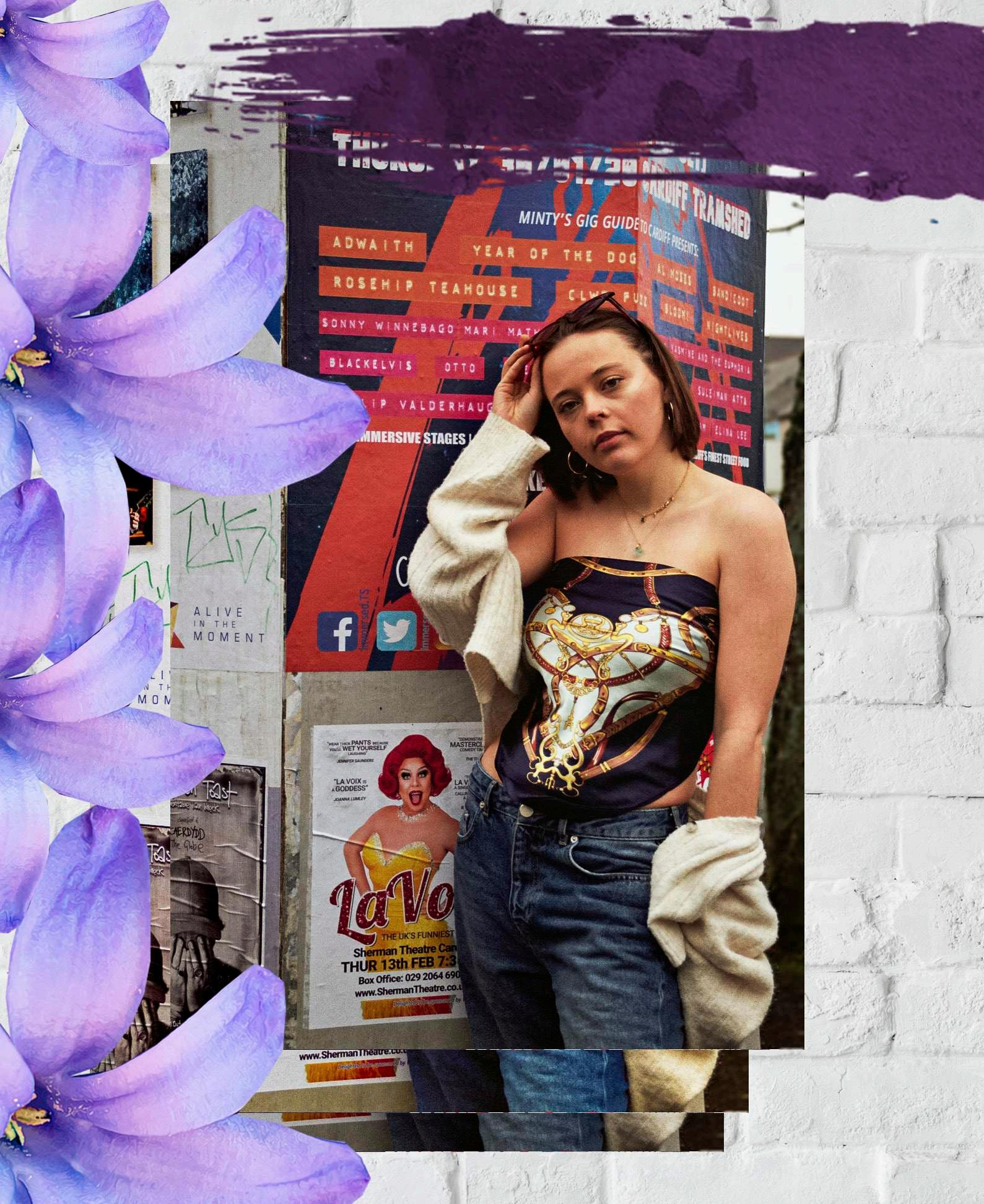
issue 176 FASHION SHOOT - 57
A HISTORY OF MODERN BLACK & WHITE

 words by: CALEB CARTER
design by: ORLAGH TURNER
words by: CALEB CARTER
design by: ORLAGH TURNER


emerald city image by: TVM1340
VIA FLICKR https://bit.ly/2Zefjth

58 - FILM & TV issue 176
In the early 20th century, the Lumière brothers trapped sunlight on thin strips of film and flickered it back at 24 frames per second. It was grainy, broken and black and white – a spectral imitation of life as we see it, miraculous, yes, but lacking. When sound was introduced in the late 20s, the gap between reality and cinema closed a little more. The world of thespians, photographers and businessmen combined to craft an assembly line of wise-cracking romantics, suave detectives and buccaneering voyagers. Hollywood made film the most lucrative art form in the world, but it was still a colourless make-believe. Make no mistake, some of these frames were outstandingly beautiful, licked in an American grey fog or sliced by the harsh contortions of German expressionism, but to be unable to break down light into its vibrant prisms meant that cinema fell short of its oneiric, reflective potential.



Méliès and Stroheim endeavoured to paint strips of film by hand, dying them in fantastical blues, pinks and yellows, but this was a long process that resulted in the uncanny and retrospectively tacky. Colour was always the ideal, so when cinema stepped sparkling heels into the technicolour world of Oz, it never looked back. Here, film could reach its true potential, studios could dazzle audiences in vibrant musicals with all the colours of the rainbow whilst more atmospheric efforts could use various hues to truly convince their audiences of the worlds that they crafted. Today, digital cameras can calculate the RGB scales of any light trapped in their lens, and after-effects allow directors to finetune every shade, cloud, blood splatter and under-eye shadow. Colour was the final frontier for film and the human race’s newest art is the one closest to replicating what it is to be alive. But that doesn’t mean that black and white ever truly went away; to tear colour from a frame is to make an artistic statement.
The anachronistic atmosphere of greyscale has fascinated contemporary directors who believe in the sacred cleanliness of shadow and light. Modern, avant-garde film-makers sometimes carry that torch: Bela Tarr worked exclusively in black and white and his final, 2011 film, The Turin Horse, which clocks in at just over two and a half hours, is projected in a stunning, crisp monochrome that only consists of thirty shots. It might be a decidedly Soviet purist attempt at stripping back the unnecessary to uncover a hypnotic “true form” of film. But it also proves that these days, to make a film in black and white is usually more than just an arbitrary retro choice. It is a choice of aesthetic intent that must filter through the entirety of the process, involving careful planning of every aspect of production, and leading to radical effects. For example, George Miller’s action masterpiece Mad Max: Fury Road was rereleased in a Black and Chrome edition and it is worth the watch to note how different it feels: more punky, gritty and iconographic than the acidic saturation of the original’s sunburnt desert.
Sin City may seem like a transgression in this list given its stark splattering’s of colour but it demonstrates precisely the unique effects that B&W conjures. Rodriguez pulls directly from the laminate pages of Miller’s graphic novel, the white so illuminate that the blacks are ink clots that carve the characters from the screen; Bruce Willis’ and Clive Owen’s flesh a smoked steel. Black and white is also used here, primarily, as a canvas for violence. Blood contrasts in plastic, femme fatale red and splatters across angular shafts of light or flies through the constant noir night of the city sky. The result is beautifully dumb; aggressively kitschy and an ironic habitation for ‘grey area’ characters.
Elsewhere, Anton Corbijn’s Control sits on the flipside of this spectrum, grounding the story of Joy Division’s Ian Curtis in a Mancunian pavement-grey. Suitably depressing, Control boasts a roster of outstanding British performances all seated in an aesthetic that seems to mimic the music of its protagonist. The largely still, black and white imagery and almost completely diegetic soundscape (a genius choice for a music biopic) combine to create an atmosphere so basic and primarily fundamental, that it would seem sparse if it weren’t for the pure poetry that fills the gaps.
If Marriage Story is Noah Baumbach’s magnum opus – a water-tight, tragic charting of perspectives – then Frances Ha was his loose, jazzy escape into Bildungsroman; it’s my personal favourite. Greta Gerwig is Frances, a “not that old, you know”, early-30s dancer who endearingly bumbles through the inconveniences of finance, ambition and friendship in New York. Here, Baumbach’s black and white lends a nostalgic, inviting feel to a playful tale whose colours spring from the writing and Gerwig’s devastatingly underrated performance. And so, it feels classy and warm, more Parisian than Manhattanite and like you are laughing with your friend as you remember how terribly you have handled adult life.
Taxi Driver writer and film scholar Paul Schrader coined the filmic style ‘transcendentalism’ in the 70s in regard to old black and white masters Ozu, Dreyer and Bresson. After seeing the 2013 film, Ida, he noted a resurgence in the form: it is a film you “lean in to”, slow and spellbindingly quiet. It’s distinct lacking means that you are given oodles of space to fill with your own thoughts, a clever way of seducing you into a world rather than knocking you out with colourful sensation. More recently, Cuarón took these cues into Roma, an intensely personal poem that tapestries a time and a place, sketched in blossoming black and white with ghostly camera movements and a soundscape nothing short of masterful.
Studio cinema increasingly fetishizes “more”, filmmakers that strive to look back at a simpler, more intuitive form that exists in the removal of elements, rather than the excess continue a tradition of resuscitation: reminding themselves that the medium they work in is ultimately light and shadow, trapped on film.

issue 176 FILM & TV - 59
Could iPhones be the future of cinema?
After the release of Apple’s iPhone 4 in 2010 – the first model to shoot HD videos in the iPhone family tree – tech-savvy, budget-conscious and experimental filmmakers were quick to hop on the bandwagon and capitalise on its potential. By adding lenses on the iPhones used for filming, a creative aesthetic was achieved as these lenses tend to make the entire frame have an unnaturally sharp focus. With the help of film editing apps, as well as new iterations of the iPhone thanks to upgrades happening every 12 months or less, these tiny portable devices are becoming increasingly capable of matching large and expensive cameras in terms of the scale of their ambition and potential.
The birth of the iPhone cinematography revolution began in 2011, with Night Fishing, a 30-minute minifeature, fantasy-horror flick by South Korean filmmaker Park Chan-wook. Shot on an iPhone 4 with a 35mm lens attached to the phone’s camera and a budget of $133, 000, which was funded by KT (South Korea’s largest mobile network), this film gave way to iPhone cinema.
Fun Fact: co-directors Hooman Khalili and Pat Gilles opted for a different route when filming their 2011 hit, Olive. They taped some film lenses to an N8 Nokia phone instead of an iPhone 4, which made for a very interesting look with a wacky depth of field that makes it look like a mid-2000s commercial.
The following year, one of the most successful films to emerge from smartphone technology won an Oscar for Best Feature Documentary at the 2013 Academy Awards. After director Malik Bendjelloul ran out of 8mm film whilst filming Searching for Sugar Man, a documentary about a 1970’s rock n’ roll artist, he turned to his iPhone and downloaded a $1.99 Apple app called 8mm Vintage Camera to finish the shoot.

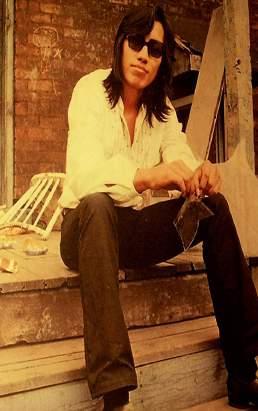


The most notable film that received more attention than any other iPhone-shot movie was Sean Baker’s 2015 hit Tangerine. Using an iPhone 5s with attached lenses and an $8 film editing app, the film premiered to critical acclaim at the Sundance Film Festival, gaining mainstream attention in the process. Following the story of a transgender sex worker on the streets of Los Angeles, it was quickly marked as a landmark LGBTQ+ moment in cinema. Whilst Tangerine was mostly praised for its story and humble representation of the queer community, the fact that its iPhone videography didn’t divert from any of that admiration shouldn’t be cast aside. It was an integral instrument in shaping what smartphone filmmaking could be and would become. The growth of utilising phones in filmmaking, especially iPhones, was perhaps predominately motivated by budget restrictions; instead of paying for expensive cameras and lighting equipment, directors were too quick to enthusiastically say yes to iPhone cinematography and use the money for unavoidable expenses like extras, locations fees and props.
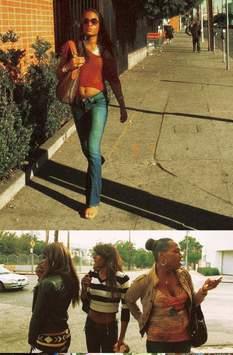
One of the most famous filmmakers to turn an iPhone lens into their cinematic tool is Steven Soderbergh. Launched at many film festivals and theatres, his 2018 full-length thriller Unsane was filmed on an iPhone 7s which captured all the action, but faced some criticism for appearing a bit blurry and dark. However, the director stood by his film and hailed it “the future” of videography in a 2018 interview at Sundance Festival.
Making an impressive follow-up from Unsane, Soderbergh felt “liberated” after upgrading to an iPhone 8 with his sports drama High Flying Bird. Distributed by Netflix to critical acclaim in early 2019, the budget was upped to $2 million, unlike the $1.5 million budget for Unsane. He pushed the iPhone further by using wide-angles lenses to capture extended hand-held tracking shots smoothly. As an established fan of digital photography, Soderbergh has become a high-profile advocate for iPhone filmmaking.

There have been many significant steps towards mainstream appreciation of iPhone videography, meaning that the number of smartphone film festivals have been growing in numbers and success. For example, one of the largest, innovative mobile film festivals in North America is Toronto Smartphone Film Festival (TSFF). It began in 2012, and the organisation was committed to serve amateur and professional creative filmmakers who wanted to pave a new way of what cinema could be with the help of a phone devices. TSFF has hosted over 600 films from 50 countries over its 8-year span. With no plans of stopping, it is devoted to showcasing new ways to create cinema.
Another example which has been ranked as one of the Top 100 Best Reviewed Festivals by FilmFreeway is Mobile Motion Film Festival (MoMo.) MoMo was set up in 2015 using Kickstarter and now it is organising its 6th festival. The Zurich based company believe that “the festival will showcase new talent using a tool so simple and readily available that it’s often overlooked: the mobile phone”. This demonstrates how anyone with a thought-provoking idea or a moving story can make a great film.
60 - FILM & TV issue 176
words and design by: CYNTHIA VERA
Unsane
Tangerine
Searching for Sugar Man
When the opportunity to write this article came up, I was quick to jump on it. You see, every week, my housemates and I would hold Nicolas Cage marathons and marvel over his greatness. Please don’t ask us how many times we’ve watched The Wicker Man. I’m ashamed to answer. Nicolas Cage has to be one of the most enthusiastic actors of our generation. The first film I can remember seeing him in was the 2009 film, Knowing. With an impressive portfolio of 97 films and 6 currently in the works, Cage clearly has a raw talent that you don’t find in many actors today. But at the same time, Cage is often dubbed as eccentric and over-the-top for his performances. But, is it bad acting or simply him creating art?
Cage comes from a family of acclaimed actors and creatives. At just 15 years old, Cage tried to convince his uncle, Francis Ford Coppola, to give him a screen test and told him, “I’ll show you acting.” Cage didn’t want to be compared to the legacy of Coppola and his impressive reputation, so he adapted the screen name of Nicolas Cage to distract from his birth name, Nicolas Kim Coppola. As well as this, Cage was once married to award-winning actress Patricia Arquette before their divorce in 2001, and after married the daughter of rock and roll legend Elvis Presley - Lisa Marie Presley.
Having won an Academy Award and Screen Actors Guild Award for his 1995 performance in Leaving Las Vegas, there’s no doubt that there was once a time that Cage’s acting was considered profound, but since then he seems to have become somewhat of a parody. Some of his earlier films such as Face/Off, City of Angels and Con Air have been held in high regard but then we have films such as Mandy and Trespass in which his acting is heavily over dramatised.
In a 2018 interview with IndieWire, Cage addressed the internet sensation that is ‘Cage Rage’ and said, “I’m sure it’s frustrating for Panos [director of Mandy], who has made what I consider a very lyrical, internal, and poetic work of art, to have this ‘cage rage’ thing slammed all over his movie… the internet has kind of done the movie a disservice.” It isn’t just critics who perceive Cage as slightly over the top. His own uncle, Francis Ford Coppola, attempted to fire him for the exaggerated voice he insisted on using in Peggy Sue Got Married. In 1987 Norman Jewison, had told him that his representation of Ronny in Moonstruck, wasn’t what they were going for. Film critics have even accurately described Cage’s unique style of acting as the look of excruciating bafflement that speaks to the panic of being alive. In a 2013 interview with The Guardian, he said, “the internet has developed this thing about me – and I’m not even a computer guy, you know? I don’t know why it is happening. I’m trying not to… lemme say this: I’m now of the mind-set that, when in Rome, if you can’t beat em’, join ‘em.”
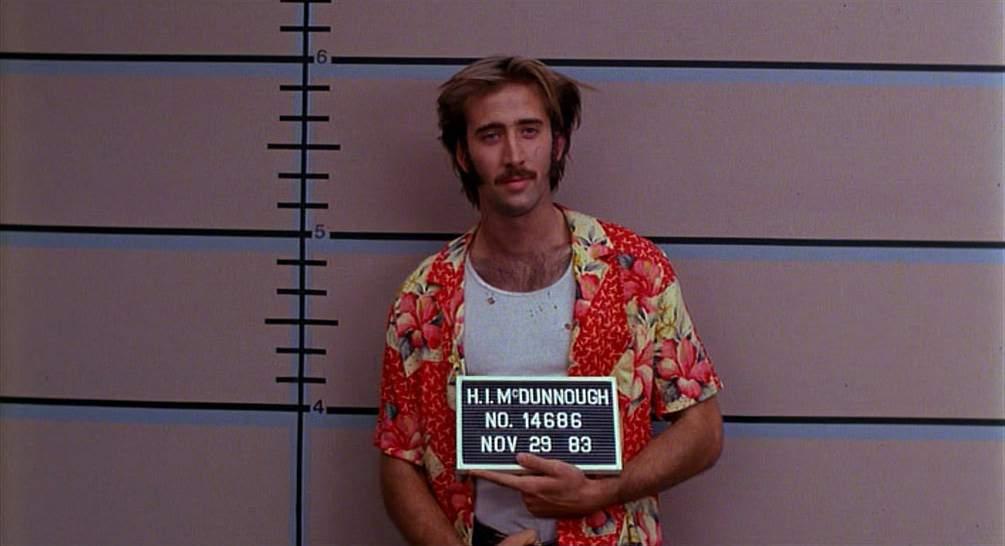
It was reported in CNBC’s, ‘The Filthy Rich Guide’ that Cage had blown through his $150 million fortune and was currently in financial crisis. Could that be the reason the actor has chosen some more than questionable roles over the last decade? The actor currently owes $6.3 million in property taxes to the IRS with many of his properties facing foreclosure. It was recently announced that Cage had landed the role of a lifetime, playing himself in the film The Unbearable Weight of Massive Talent. According to the plot description, the actor will play a ‘version of some of his most iconic and beloved characters in order to extricate himself from an increasingly dangerous situation.’ Perhaps another questionable film choice or an easy way to earn a quick $1 million.
Either way, we can’t deny that Cage has a method of acting that is unseen in the film industry and probably never will be. Maybe he’s doing it on purpose or maybe he genuinely believes his eccentric talent is appealing to others. I mean, if that’s the case, he’s not necessarily wrong? It does provide for some quality entertainment for us all. I for one hope Cage never changes his methods or it just wouldn’t be the same.
words by: SARAH HARRIS design by: CYNTHIA VERA
issue 176 FILM & TV - 61
Love
By Luisa De la Concha Montes
C Y N I C A L F I L M S
It Must Be: Love, Love, Love
Do not watch this movie with your parents, but please watch it with your partner!
Pariah
By Cynthia Vera
The lights are muted and hazy on a stage lit by a single spotlight focusing on a twisting body around a pole – sexual, but full of agency and in control of the gazes locked upon it. The teasing and provocative lyrics get louder and louder in a club packed with black queer women: “All you ladies pop your pussy like this/ Shake your body, don’t stop, don’t miss.” I almost thought I had walked into a black feminist fever-dream, but this was just the opening scene of Dee Rees’ 2011 semi emotional autobiography, Pariah.
Pariah was once described as a “hysterical, exploitative, ghetto soap opera porno” on an IndieWire article, a harsh critic for a film that integrates both the coming-of-age and coming out stories and pitches it against an African American family trying to adapt and accept Alike, in regards to ones sexuality.
Closing on a bittersweet note one that sees Alike transformed, slowly but surely establishing herself in a community of those not just bound by sexual identity, but by collective pain. In a startlingly sincere, yet heartbreaking way, the film conveys a universal sensitivity that relates the misery and joys of first love; the aching journey of adolescent sexuality, and the sense of wanting to belong.
Blue Valentine
By Cynthia Vera
Told in two time-frames – the past and the present, Derek Cianfrance’s Blue Valentine follows a volatile and broken marriage as it blooms in the past and shrivels in the present, aimlessly looking for clues as to what went wrong.
Lacking in understanding and motivation and blinded by frustration and dissatisfaction, Dean (Ryan Gosling) and Cindy’s (Michelle Williams) love story is like watching the cruellest sort of dissection; like pulling a little bird apart by its feathers. To revive and save their marriage, the couple take a weekend gateway trip to a space-themed hotel room with hopes of relighting an incandescent fame that had long been extinguished. Cianfrance’s 2011 film is harsh and realistic, the grainy, washed-out colours of the present, which contrast with the brighter and softer palette of the past makes for an emotional experience of agony and fleeting joy.
A painful and heart-breaking but honest account of how even the best, most loving marriages can crumble Blue Valentine feels like a slow-motion punch to the stomach over and over.
design by: LUISA DE LA CONCHA MONTES
Visually, this movie is a very explicit celebration of sexual exploration. Narratively, it is a critical essay on modern love, and the attachment it still has to monogamy. The story follows Murphy, an American cinema student who lives in Paris. Through flashbacks, we see how his relationship with his exgirlfriend, Electra reached a tumultuous ending after asking their neighbour to have a threesome with them.
In this movie, Gaspar Noé uses the neon lights that made him famous back in 2009 with Enter the Void, however, this time there is no LSD-induced explosions of colours: the transitions are slow-paced. Even though the movie is filmed in Paris, it feels like it could have been filmed in any big modern-day metropolis, as what it proposes – a frantic search for love in all the wrong places – can be applied to the discrepancy between the abstract nature of love, and our accelerated rate of life.
Estocolmo
By Luisa De la Concha Montes
At first instance, the premise of this movie might seem pretty self-explanatory and predictable: boy meets girl, girl plays hard to get, and boy convinces girl that he is worth her time. However, the interactions of the main characters, who are vaguely named “Her” (Aura Garrido) and “Him” (Javier Pereira), are all but predictable.
At times, the movie stops feeling like a romantic film, and it openly adopts the tropes of mystery crimes, slowly building up the tension between both characters in a cat-and-mouse manner. Swiftly, and without being too on the nose, this movie is entirely about power, and the normalization of sexist behaviours in ‘romantic’ interactions.
Yet, Rodrigo Sorogoyen’s film is not only worth your time for the idea it proposes, but also because of its aesthetic. The breathtaking shots of Madrid at night that we see when the characters move from the party where they met to his apartment, have left a cinematic mark in my mind for a long time.
Eternal Sunshine of the Spotless Mind
By Phoebe Bowers
“How happy is the blameless vestal’s lot! The world forgetting, by the world forgot. Eternal sunshine of the spotless mind!” –Alexander Pope, Eloisa to Abelard
Here, Pope’s words from Eloisa to Abelard demonstrate the sentiment that ignorance is bliss; these lines being the inspiration behind Michel Gondry’s Eternal Sunshine of the Spotless Mind (2004).
The Oscar winning sci-fi romance being set in a world where one has the ability to erase all memory of a person from their mind. Ex-lovers Clementine (Kate Winslet) and Joel (Jim Carey) decide to go through with the procedure, but it does not entirely go to plan. Gondry paints love in a cyclical nature exemplifying how over and over again, we willingly make the same mistakes in our relationships. The human predicament being that memory is fickle and finite, but precious.
The romance is embellished with realist cynicism, but has a hopeful ending. This is a more serious film for the Valentine’s period, which examines how we paradoxically desire to dissociate from our pasts, yet inextricably cannot let go.
62 - FILM & TV issue 176
R
O M A N T I C F I L M S
About Time
By Amy Layton
If you could go back in time, what would be on your bucket list? Would you meet Cleopatra? See what dinosaurs really looked like? Or perhaps, you would just pursue true love?
Richard Curtis explores the more mundane side of time travel in his 2013 film About Time. Following the life of lovable, slightly awkward, Tim (Domhnall Gleeson), we grow to love his perfectly imperfect life that bursts with diverse and threedimensional personalities who help him to learn how to love in many different ways.


Yet, what makes About Time one of my most cherished films is the poetically-lasting sentiment that Curtis instils in me at the end; even though Tim could live every day one hundred times if he wanted to, he discovers that his ability has given him a gift greater than any amount of time travel could. A lesson to “live life as if there were no second chances”. And as the credits roll, I vow to myself to take pleasure in the ordinary, to seek adventure in life’s every day.
Your Name
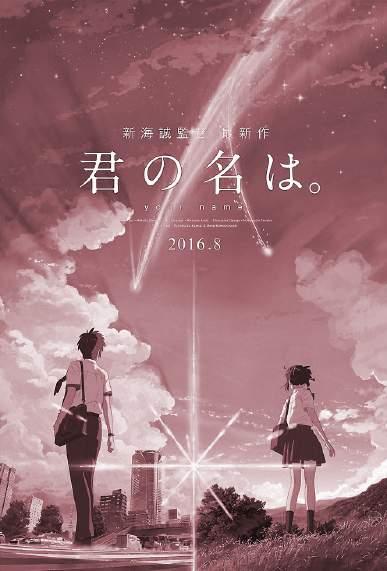 By Laura Dazon
By Laura Dazon
Want to watch a romantic film for Valentine’s day but tired of the cheesy classics? Let’s switch things up a little with an animated movie this time, Your Name.
Your Name is the story of Mitsuha, a dreamy high school girl from the countryside of Japan who’s not happy with her life, and Taki, a Tokyoite teenager. They have nothing in common, and yet, they will embark in an adventure both of them are not ready for, when, one morning, they wake up in the other person’s body. Trying to understand what is happening to them and finding ways to communicate, their adventure will lead them to something bigger than what any of them could imagine. It is a perfect introduction to Japanese animation if you are not already familiar with it, or an occasion to revisit Makoto Shinkai’s work who just released Weathering With You this January.
Exploring themes like longing for love, separation, destiny and fate, Your Name is not your typical rom-com. It is an experience in itself. Prepare to tear up while spectacular graphics unleash in front of your eyes and imprint in your mind.
Notting Hill
By Becki Tyler
Written by Richard Curtis, Notting Hill was the highest grossing film of 1999 and is the epitome of a romantic comedy. While critics may call-out the film for its sanitised, posh portrayal of London, its whimsical plot and predictably happy ending; Notting Hill is the unabashedly romantic and genuinely funny film that is needed in today’s current climate of cynically realistic movies.
Julia Roberts and Hugh Grant are memorable in their roles, playing awkward travel-bookshop owner William Thacker and internationally famous actress Anna Scott respectively; the relationship between them is as endearing as it may be unrealistic. The supporting cast including Welshman Rhys Ifans, and the late Emma Chambers further contribute to the unadulterated warmth that encompasses Notting Hill.
Who can forget the iconic, often quoted (and sometimes mocked) moment where Roberts’ Anna stands in front of William declaring that she is “just a girl, standing in front of a boy, asking him to love her”? As Peter Bradshaw summarised in The Guardian, “Notting Hill is not a guilty pleasure, but an entirely innocent one.”
issue 176 FILM & TV - 63
Life Without Social Media: A Brief Experiment














words by: design by:



64 - DOWNLOAD issue 176
It’s no secret that social media is a ruling factor over the lives of every modern day teen and adult. The digital realm now provides services that were entirely inconceivable this time fifty years ago. Through platforms like Twitter we’re given accessible gateways into breaking news stories, live action updates and other important information, all at our fingertips with the simple press of a screen. The rapid development of this technology has opened up new career paths, with opportunities in content creation and social media management for graduates all over the country, across disciplines like English Literature and Media and Communications.
But social media has a dark side. Whilst its availability, both at home and on the move, grants it peak convenience in the grab-and-go era of the twenty first century, it also lends itself to overexposure and addiction. According to the website Oberlo, social media generates approximately 3.2 billion daily users - that’s 42% of the population. Next time you’re on a bus, or a train, take a quick look around you. How many people are fixed to their phones? I am, for one. Growing up, I saw the rise of social media from MySpace and Bebo to all the well used platforms we know now: Facebook, Twitter, Instagram. To make matters worse, I am an aspiring digital copy editor, so a lot of the work that I’ve undertaken revolves around social media and online content. It is an inseparable part of my life. So why am I writing this article, you ask? I’m challenging myself to take a break from it all for a few days to see what sort of difference it really makes.
Day 1
I thought I’d start off easy. My first day without social media fell on a Wednesday, and lucky for me I was set to be at work from 10am to 9pm. Easy enough, right? Work provided a good distraction as I wasn’t able to reach for my phone as often as usual. That being said, I began to notice truly how often I do so. From the moment I woke up I was pining for Twitter, reaching to check any notifications I’d received since the previous evening. Even though my shift kept me mostly busy, I still insisted on keeping my phone in my pocket, just in case it were to buzz or ring. What does that say about the rule that technology has over me? I decided to put my phone in my bag and leave it there till the end of my shift. When the time came to pack up and leave, I retrieved it and plugged myself in for music to walk home to, then got home, put it on to charge and turned it off.
Day 2
My second day on a social media hiatus was a lot harder than the first, as I’d guessed that it would be. Thursdays are a busy one at uni for me (I’m in from 9am and my last class finishes at 4pm), but it’s difficult to stay focused over so many hours, especially with breaks in between. I tried to keep my phone in my bag as often as I could, using my computer for work and listening to music. The most difficult times came when I was with others, seeing them on Instagram or Facebook. It wasn’t so much that I wanted to check them, but the feeling of being left out is what got to me the most. It struck me how often people spend time on their phones when they could be talking to those around them. As I was now the only one in my group who wasn’t on my phone, I found myself sitting in silence, watching other people on theirs.
Day 3
The third day of my experiment was simultaneously the hardest and the easiest of all three. The knowledge that this was the final day made getting through it a lot easier. I’d done two days already and was now familiar with my triggers and what I could do to avoid them. In theory it should have been the easiest day of the three, but my empty Friday itinerary said otherwise. I realised that social media acts as an escape from boredom; the mindless scrolling and double-tapping fills time otherwise spent listening and observing the world around us. Have we, the social media generation, forgotten what our world looks like without technology?
I do admit to picking my phone up once or twice, to refreshing my feed and checking my notifications out of habit. But, in my three days without social media, I had now learned to put my phone down when I noticed myself doing so. I was able to resist the temptation to scroll, something I hadn’t previously been able to do. My eyes felt less tired at the end of each day, I was able to hold conversations and really listen to people, without anticipating a buzz in my pocket. It began to rub off on those around me, too. Perhaps all it took to break the habit was a new awareness of my surroundings and of the power of technology to erase our presence within them.
issue 176 DOWNLOAD - 65
Prejudice in Silicon Valley
It’s hard to believe that the creations of Silicon Valley were once a thing of dreams, a far-off unattainable notion where technology could help us rule the world. What started as a means to create more jobs after the Great Recession has become home to the world’s leading innovators in technology. Some of the most progressive inventions of the modern age were born in Silicon Valley, such as virtual reality, facial recognition and virtual voice assistants to name a few. So, as brilliant as this is, what’s the catch?
When Nintendo’s virtual reality set first hit the market during the 90’s, it’s fair to say it was a flop. Following this up with Sega’s inability to even release their VR set, virtual reality was placed high on a shelf away from the public gaze. Flash-forward to today’s market and the scene has changed. With the successful release of 2016’s Oculus Rift and with the likes of Samsung and Huawei hot on their tails, VR technology has had a well-earned facelift. But although the technology might have developed, some of the age-old societal issues are still prevalent. This has become evident in the world of VR, with women experiencing significantly more motion sickness than men, sparking accusations of sexism.
In experiments run by Thomas Stoffregen, a kinesiologist at the University of Minnesota, it was discovered that when using VR, fourteen out of eighteen women suffered motion sickness compared to only six out of eighteen men. Coining the term “cyber-sickness”, Stoffregen acknowledges that the effects of VR are largely sexist and pushes that more needs to be done to combat this. The leading theory in this discrepancy is due to a visual- vestibular conflict which is the general cause for any sort of motion sickness. The difference with VR is that the conflict is in reverse. Usually the conflict derives from the lack of visual cues to coincide with movement (vestibular cues) whereas with cyber-sickness, the visual cues are present, but the motion is not. The reason why this is predominantly affecting women is down to the structure of the VR sets themselves. It has become clear that when making VR sets, companies are doing so with males in mind. In doing so, the interpupillary distance, the distance between pupils, is matching that of the average male but far too large for an average woman, causing cyber-sickness.
words by: MOLLY SEDGEMORE design by: ELAINE TANG
This isn’t the only case of sexism within the industry’s products. Consider the likes of Alexa, Google Home and Amazon Echo – all great products with one major pitfall. The voices of these home virtual assistants are all helpful, polite, obedient and most importantly, female. To some, this is a minor detail in an otherwise successful branch of technology, but for the sake of gender equality the ever-pleasant, submissive, female voices of these products needs to change. Although some home assistants offer the option to choose between male and female voices, the default is always female. With home assistants becoming increasingly popular, this trend of compliant female voices needs to be challenged. In continuing to ascribe women the role of dutifully complying to our every question and demand, we are instilling what seems like an ancient mindset that a woman’s place is one of quiet passivity. Without even having to utter a please or thank you, the female assistants are obediently waiting at home, only of use when we require something of them.
So why is it that so many societal discriminations are being reflected in our technological advancements? From Hewlett & Packard to Bill Gates and Mark Zuckerberg, it is no secret that the field of technology is one dominated by white males. Have the once universal values of Silicon Valley become corrupt by an overarching patriarchy? It’s hard to say, but it is clear that there are many issues that need to be addressed. Most concerning of all is that these discriminatory practices have permeated the UK Government. In a Freedom of Information Request made to the Home Office, it has become apparent that the Government deployed a passport photo checker it knew would fail on dark skin. The facial recognition technology that first launched in 2016 has been subject to many reports declaring it has been unable to recognise darker skin tones, wrongly suggesting that mouths have been open and eyes closed. This is not the first time facial recognition has failed black people, with Google having to issue a public apology back in 2015 for wrongly categorising a black couple as gorillas. It seems that even in an environment of supposed neutrality, technology has been victim to the most discriminatory of human errors. In a tale as old as time, sexism and racism is pervading Silicon Valley.
66 - DOWNLOAD issue 176
words by: MIKE O’BRIEN design by: YEON SU CHO
From poor industrial working conditions to ethically objectionable business models, gaming communities are more critically engaged and effectively mobilised than ever. But amidst the dread, it’s all too easy to lose sight of what drew us to this passion in the first place; bloody good games.
These are our ten best games of the last ten years, based on: How important was the game to industrial progress? Did the game offer a unique experience? If not, did it significantly elevate standards in some regard? Let’s go!
10. Rocket League
Superficially, Rocket League is just car football. Give it the attention it deserves and you’ll realise the expressive heights this game reaches. For all the sports games out there, none of them feel anywhere near as much like a sport as Rocket League. Few titles offer the exact freedom of movement that makes it a dynamic work of sporting genius, and the fact it’s a blast at any level of skill is a testament to the power of a bulletproof concept.
9. Divinity: Original Sin 2
I fear that Divinity: Original Sin 2 is destined for a cult classic legacy when it deserves much more. A masterclass in role-playing, Divinity: Original Sin 2 is as peerless in player choice and turn-based combat as Grand Theft Auto is to open world crime capers. With a dizzying number of factors and possibilities in both combat and story, it would take a lifetime to traverse every possible avenue of Divinity: Original Sin 2.
8. Sid Meier’s Civilization V
Just one more turn; Sid Meier’s Civilization V is not only an intuitive yet deep grand strategy masterpiece, it is a gorgeous history of humanity at its most glorious and its most iniquitous. A diorama of growth and conflict, it never fails to succinctly capture the mood of both a flourishing people and a city starving under siege. By weaving mankind’s milestones into ever-expanding gameplay systems, Civilization V teaches something new with each game. Assuredly more than anything else, it generated the mainstream appetite for strategy that would define the genre for a decade.
7. The Last of Us
Striking the balance between creating the space to tell a compelling story whilst offering consistently engaging gameplay is extremely hard – but The Last of Us nails it. A delicate and gritty tale about altruism vs the self. The Last of Us remains the best Naughty Dog title and an instant recommendation for any story enthusiast.
6. Red Dead Redemption 2
In my review, I described Red Dead Redemption 2 as ‘a quintessential exemplar of the artistic reach of the video game and an undeniable masterpiece’. I stand by that.
It’s both a technical and artistic masterwork, one which uses immersive space to frame the philosophical debate of freedom versus order. Though clunky in places, it’s a viscerally brilliant experience with a story that truly rivals cinema.
5. The Elder Scrolls V: Skyrim
Skyrim’s legacy as the first open-world RPG to fully permeate the mainstream is deserved. With Jeremy Soule’s breath-taking score
accompanying the most gorgeous Bethesda world to date, it’s hard not to lose yourself in the Nordic tundras of Skyrim. It lacked the robust combat mechanics of its contemporaries, but the litany of ways to play and grow in this sandbox masterpiece is undeniable, and its staying power is absurd.
4. The Legend of Zelda: Breath of the Wild
One of, if not the most captivating open worlds of all time. The Legend of Zelda: Breath of the Wild uses systems and the natural world to spark organic wonder and creative solutions, eschewing the dotted lines of its contemporaries to perfect a self-led odyssey.
3. Dark Souls

Dark Souls is a perfection of formula. Many of its defining aspects –bonfires, blocking/rolling/locking on to foes, challenging boss fights – can be traced back to the early days of Ocarina of Time. But Dark Souls masters it all so expertly that its unmistakable formula has yet to be challenged by anyone else for ten years.
Beloved for its precise controls, immersive level design, richly dreadful atmosphere and webs of esoteric lore, Dark Souls is a brutal yet irresistible love-letter to gameplay purism.
2. Minecraft

It takes a rare calibre of game to ascend from indie darling to cultural infatuation. Minecraft’s pixel aesthetic, its boundless procedural world, and its extensive crafting systems have left an indelible fingerprint on every genre out there. It earned a spot on this list for its influence alone, paving the way for other generational greats like Terraria and Stardew Valley.
1. Undertale

No game is as deserving as Toby Fox’s one-man masterpiece. The best offering from the dominant indie renaissance of the 2010s, every inch of Undertale is an expressive and deliberate component of extraordinary purpose. From the animation of enemy attacks to its living soundtrack to its brilliant flavour text, it’s constantly revealing layer after layer of genius and humanity.
Even the greatest of games might have sufficed as films. Undertale couldn’t have been anything but a game. It engages with the very fabric of the medium, exploiting its conventions to tell a unique story that can’t be told again. I’m being vague, but it’s for good reason. Undertale is best experienced blind, so here’s a bright idea; sod off and play it.
It’s interactive, it’s expressive, it’s inventive, it’s alive; Undertale is the greatest video game of the last ten years.
issue 176 DOWNLOAD- 67
On Balance: The Game vs. The Mind On Balance: The Game vs. The Mind
words by: MIKE O’BRIEN design by: LUISA DE LA CONCHA MONTES
Since gaming permeated the mainstream, commentary surrounding its effects on mental health has been unacceptable. In the aftermath of the Columbine High School massacre, journalists were all too keen to emphasise Eric Harris’ hobby of developing custom DOOM levels. When Anders Breivik murdered eight people in Oslo and another 69 in Utøya, media commentators beelined to his manifesto’s mention of Call of Duty: Modern Warfare 2 as a ‘training simulation’. Influential platforms both conservative and liberal, from The Guardian to Donald Trump have expediently sidestepped Harris’ anomic rage and Breivik’s traumatic upbringing to entertain the idea that video games spawn killers. Time after time, academic authorities like the American Psychological Association have unambiguously put this stupid myth to bed without supper.
However, the tendency to view the relationship between mental health and video games in black and white is not exclusive to gaming’s critics. Confirmation bias is a pandemic and it doesn’t discriminate; just as video games can’t be condemned for unspeakable crimes, they can’t be lionized beyond accountability by passionate advocates. For every Daily Mail dingbat decrying Dark Souls as catnip for deranged incels, there’s an /r/gaming subscriber championing the video game as benign and innocent recreation. The interplay between the game and the mind is powerful and multivariate, demanding far less reductive scrutiny than tossing one’s hat in the ring for either ‘harmless art’ or ‘psychopath incubator’. I should know; my own experience with them is grey.

68 - DOWNLOAD issue 176
The interplay between the game and the mind is powerful and multivariate, demanding far less reductive scrutiny than tossing one’s hat in the ring for either ‘harmless art’ or ‘psychopath incubator’.
I suffer from bipolar disorder and ADHD. Existing, let alone leading a sustainable and satisfactory life, is nigh on impossible without ruthless mental and physical discipline. During depressive episodes, especially under the influence of powerful antipsychotics and tranquilisers, you will not find colour in your world. Before I was diagnosed, an episode ruined my life, crippling me to the point that I had to leave university without alternative direction. It was a silent day. My father and my girlfriend at the time helped me pack, and none of us said a word all morning. It was a silent three-hour drive to a home I loathed, entombed in the passenger seat of both the car and my own chaos.
During this time, video games became my only respite. Had you asked me at the time, I might have fed you some claptrap about how they were the only thing getting me out
of bed, and my only source of remote happiness. But this romantic vision neglects the other side, that gaming was a destructive pit of fleeting purpose whose sweet bite was irresistible in such bitter times. The internet is quick to defend the video game from any suggestion that, in dire circumstances, it can impart more pain than relief. Those same people bare their fangs at social media companies for quantifying approval in the form of likes and shares, creating a destructively addictive space that exploits hooked teenagers for advertising revenue. Funnily enough, this strategy is called ‘gamification’ for a reason. The video game is the godfather of drip-feeding
progress. It may not be responsible for mass killings, but it is selective and ignorant to argue that its carefully architected flow of dopamine has no effect on vulnerable audiences. For months, I was so depressed that I surrendered myself to other lives in other worlds; anywhere but here sufficed.
Eventually, at the height of my depression, I stumbled upon Bloodborne, a collision of Dickensian dread and Lovecraftian horror set in a hunter’s nightmare. Cobbled streets writhing with madmen, grotesque beasts addicted to blood, red skies of perpetual night, Victorian houses whose bolted doors and boarded windows echoed with the cackling and sobbing of eternal grief. Most modern games want to reach and satisfy as broad an audience as possible, the natural consequence of such a goal being that the games are often trivial or endlessly forgiving. Bloodborne, though, was a ruthless and brutal journey that didn’t want you to win. It never tells you where to go or what to do. Its manic and tortured denizens attack
with the sole, feral desire to rip you apart. It felt no more like a video game than it did a sentient and loathing space of suffering.
Yet, for all its bleakness and hostility, Bloodborne unsuspectingly became the harbinger of hope and determination that would chart my life back on course. I had never encountered art which not only manifested the hellscape of a shattered mind so compellingly, but also offered an interactive space whereby I could challenge my own demons with focus and discipline. When killed, some particularly strong enemies will drop a currency called ‘insight’. Insight could be used to purchase items – but fascinatingly, the more insight the player bears, the stronger their perception of the world around them is. Revisiting areas of the game with more insight would reveal previously invisible terrors crawling over
cathedral wards, the distant off-key singing of demented lantern bearers, and the cries of newborn children. Having more insight makes the game even more challenging in many ways – but it allows you to perceive, and therefore overcome, the threats which had tormented your journey from the shadows prior. I came to realise through my understanding of Bloodborne that, in life, insight is a punishing burden that reveals malice and erosion in ourselves – but it is necessary to perceive our tribulations if we aspire to survive them. The right piece of art at the right time can make all the difference in the world.
The essence of the debate is
causation, and to that end, I reject the argument that video games have toxic causality when it comes to mental health. There are standout exceptions, particularly mobile games with business models that consciously expose children to gambling mechanics. But the notion that video games cause depression or violence is reductive. They are powerful avenues that take us somewhere else, and that journey is determined by our wellbeing. Video games are a response to a need or desire. When that desire is to connect with friends, or to embark on a compelling story, or to unwind after a long day, the game is a wonderful thing. When the need is for medicine, and the desire is to feel complete, the game is a stagnating force. It affords structure to the disordered, strength to the weak, companionship to the lonely, all of which is illusory. Video games do not cause depression. But when depression wins, the video game is morphine - and that’s the last thing an addict needs.
issue 176 DOWNLOAD- 69
I came to realise through my understanding of Bloodborne that, in life, insight is a punishing burden that reveals malice and erosion in ourselves – but it is necessary to perceive our tribulations if we aspire to survive them.
Doing Things for the Right Reasons
words by: ELLA WOODCOCK
design by: ORLAGH TURNER



There are certain things in our lives that we know we have to do. Things that we know a healthy and functioning human being does. Go to university/work, cook meals, stay healthy and socialise. I know that I personally go through stages where I am really motivated and then stages where I am not. I think this is because my motivation tends to mirror the circumstances around me and what my friends are doing. Reflecting on this taught me that I was not doing things for the right reasons.
Often, these things become a monotonous tick box of tasks we have to do. We become detached from the reasons why this must be done and, consequently - we stop doing them. This is not helped when the people around us are whispering things like “movie night” or “take away” in our ears. University is potentially the worst for this because it becomes normalised to be a little complacent under the umbrella of “student life”. Something that we all get caught up in.
Eating a healthy meal or going to the library for a couple of hours should not be seen as tedious chores that can only be done occasionally. In order to truly integrate them into our everyday life the way we view them must change. For example, you are not going to the gym to look good for someone else. You are going to improve your fitness and your own personal health. Little changes like this can make your motivations more powerful. There is only so far you can go when you’re using the opinions of others as a reason to do what you do. The only way you can improve is if you are doing it for yourself.
A tiny shift in mindset can cause huge ripples into the rest of your life. The things that you prioritise matter. Starting to live for yourself will teach you to value your own self-worth. Learning that we shouldn’t necessarily have to reward ourselves for completing positive tasks is also key in this shift in mindset. This also stems from the belief that we do things for ourselves and the benefits that they cause are reward enough.

If we are doing things such as studying or exercising to impress other people, then there is no wonder motivation quickly fades away and we become tired. Turning to “cheat days” and weekends off doing anything. Of course, we all need rest and
respite but if you are anything like me then these often become a lot longer than just a day off. Viewing revision as beneficial for your degree and therefore your future – makes it seem worthwhile and less painful to complete. You are rewarding yourself every time that you take steps towards bettering your life.
It is easier said than done. If anybody tells you that they always see chores or necessities as an opportunity to improve themselves then they are lying. Lack of motivation happens to everyone and that is OK. You are not expected to be 100% all of the time. That, in itself, is not healthy. However, when you do feel that third day of non-productivity sneaking up on you, remember that the only person affected by not doing the things you need to do is you. As humans, we have the power to be the best version of ourselves if we just are able to push through our own boundaries.I think this is common because we often feel guilty if we put ourselves first. This stems from faults in our society. Not letting this hold us back is paramount. There is nothing wrong with prioritising yourself. It is not selfish to want to become better every day, whether this is academically, physically or mentally. You cannot feel ashamed to live your life in this way, despite what society may or may not tell you.
This is how it works. How changing your mindset about yourself and the tasks you have to complete can make the mountains seem less ginormous. Making changes like this doesn’t just have to be for the everyday tasks in your life but also the major goals that you set. So many times people aim to do things to prove others wrong or to look good. We all do. Sometimes this is enough, but it shouldn’t have to be. Doing things for yourself is a much more sustainable and healthy way to live your life and motivate yourself to achieve your goals.
Days off are important. Pushing yourself too hard is not healthy. However, if you want to create a healthy and productive lifestyle for yourself on a day to day basis, then becoming a little more egocentric and investing in yourself is the best way.


70 - DEAR ELLA... issue 176
3.
My housemate keeps stealing my clothes and food, I have tried to let it pass but the last few weeks have gotten really bad and I am now out of pocket and clothes. How do I stop this without things being awkward?
There are many reasons they could be doing this. They could be struggling themselves and don’t want to admit, or they could just have a complete disregard you. The best thing you can do is approach them. It is understandable that you feel angry about the situation but try to be calm when you do. This will help prevent things from being awkward in the future or inflaming the situation. It may be a good idea to start locking your bedroom when you are out, it seems extreme but this in itself is a communication on how you feel. Ask them if they are struggling for money, if they are the university does offer financial advice. There are many places they can go.
If they are not struggling with money, then you need to explain that it is inappropriate and that they need to stop. They should understand and respect this.
My boyfriend just told me he hasn’t had an STD check for 2 years, and he has had multiple sexual partners. He keeps telling me he will get one but have been together for months now. I am worried he thinks I am nagging at him or hinting at him. How do I get around this?

The fact is that he does need to get checked. There are walk in appointments at the Cardiff Royal Infirmary and it takes no time at all. You should not feel like you are nagging or pressuring him. It is for the physical health of both of you and your own peace of mind. He is your boyfriend, if you are close enough to have sex, he needs to respect the things that come along with it. You should also get tested, going together might make it seem less of a chore and he may feel less embarrassed.
Q&A
I’m dating someone at the moment, but I can’t stop thinking about my ex-boyfriend and the fun we had. My current partner is so kind, but we don’t have as much as fun as I used to. What do I?
This is a very common and upsetting situation. We are at an age where fun is very important. It is natural to compare your current relationships to your past ones. It is sometimes the case that the ones that are most ‘exciting’, aren’t the best for you. There is a reason you broke up with your ex -boyfriend and you shouldn’t feel like because your current relationship is different it is any worse.
Having said this, if you are not happy in your relationship then that is an issue, regardless of your ex. You may just not be compatible if you do no find yourself having fun. You could maybe try to find new things to do as it sounds as if you’re holding them to the same standards as your ex. They may find different things fun that you haven’t experienced yet. I think the best way is to try and create new fun but if in a few weeks you still feel the same then you must do what is best for you in the long run.
4.
I am dating two boys at the moment but neither of them wants to make it serious. Do I continue to do this or just end things with both of them?
It can be really hard when you are looking for a relationship and the person you like isn’t giving you what you expect. However, seeing two people might tell you that you may not be looking for something serious either, and, if you are the these may not be the best options for you. There is nothing wrong with seeing two different people as long as they are both aware you are not exclusive. The best thing to do is have an open and honest chat with yourself about if you genuinely want to be serious with either of these in particular. If yes, then you need to do the same with this person.
If you are assuming they don’t want to be serious but have not actually spoken about it then you may be acting on false assumptions.

issue 176 DEAR ELLA... - 71
1.
2.












































































 WORDS BY: Katie May Huxtable
WORDS BY: Katie May Huxtable






























 HURREN-MYERS
HURREN-MYERS


 words by: NIAMH GOODWIN -THOMAS design by: YEON SU CHO
words by: NIAMH GOODWIN -THOMAS design by: YEON SU CHO







































 words by: JAMES BARKER
design by: ORLAGH TURNER & JAMES BARKER
words by: JAMES BARKER
design by: ORLAGH TURNER & JAMES BARKER




 By Josie van Jascheroff
By Josie van Jascheroff












































 words by: CALEB CARTER
design by: ORLAGH TURNER
words by: CALEB CARTER
design by: ORLAGH TURNER














 By Laura Dazon
By Laura Dazon


















































